


















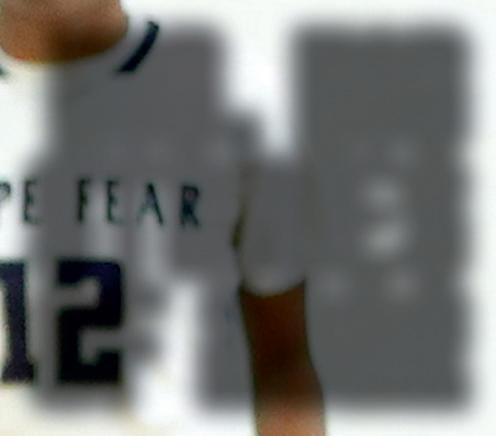






1



























1
Referee’s editors name the rules that are toughest to master.
3
5
Referee editors ranked the most significant officiating stories of the year.
Yesterday’s approaches to recruiting, retention won’t get the results needed for the industry’s future.
At the first in-person NASO Sports Officiating Summit since the pandemic, four officials from various sports and levels talked about defining moments and the lessons they have taken away from those moments.
ON THE COVER
Constance Thomas Fayetteville, N.C.
Age: 36
Occupation: Assistant principal
Officiating experience: High school and college (JUCO, D-III, D-II) basketball referee. Officiated high school state championships in 2020 and 2022.

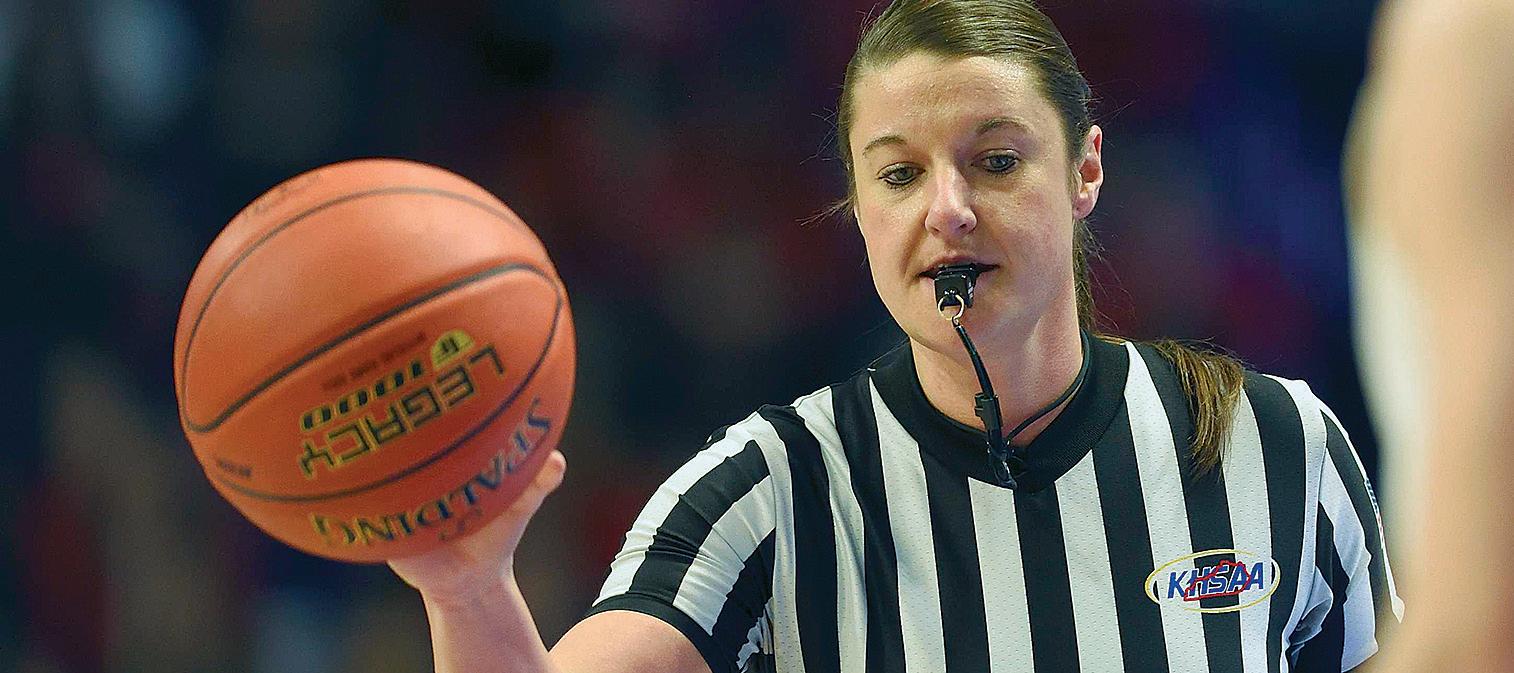
The Right Moves: Stay Under Control When Shifting About the Field; It’s Not Your Turn; Pregame in the Parking Lot 30
Travel Plans: Pivot Foot Vital to Any Footwork Discussion; Correct Correction; Pass and Crash; 5MW: Jason Nickleby

VOLLEYBALL
Conference Call: Bring Crew Over to Get Call Right; Alignment Assignment; The Tall and Short of It 4
SOFTBALL
Quietly Big: How to Show Confidence Without Raising Your Voice; Stay Wary of Catch and Carry; (DP)/Flex Your Muscle
SOCCER
Beyond Reproach: Integrity, Ethics Are Non-Negotiable Traits of All Match Officials; A-OK With PKs; 5MW: Ryan Cigich
FOOTBALL
Ground Rules: Ball on the Turf Could Be a Muff or a Fumble; Set Your Standard Early; Kick Touched and a Foul Make for an Evil Mix 7
Wanna Start Something?
Great Beginnings Beget Solid Performances; Advance Warning: Do It the Right Way; The Elusive Quest for Consistency
4
Entitled to Our Opinions 10 THE GAG RULE
Snap Shot; They Get It; They Like Us; Survey Says 12 THE NEWS
Former NBA Officials Sue League Over Firings; Longtime Referee Columnist Dies; MLB, Umpire School Reach Agreement
60 GETTING IT RIGHT Friday Night Honors; NFHS Unveils Legends; NBA Respects the Game
74 PROFILES
He’s Training the Next Generation of Officials; Active Advocate; Historic Moment

82
Big Stories 2022: Deaths, Transitions, Achievements
84 LAW
Election Integrity; It’s on Tape; How to Avoid Litigation
85 CLASSIFIEDS

Camps/Clinics/Schools; Equipment/Apparel; Leadership Resources

86 LAST CALL
Let the Kids Play: Meanwhile, the kids stand around and watch adults act like idiots while the game time is melting away.
Normally in this space I write on a single topic with the words and opinions all mine. For this Memo, I wanted you to “hear” what is on the minds of our editorial team, and other team members who are active officials. I asked them to give you an unvarnished opinion about something of special importance in officiating. Check the masthead at right for their titles.
•I love to officiate. But I am not one of those officials who is going to be disingenuous and say I don’t do it for the money. It’s a good source of extra income. I take major issue with those parties who don’t pay us in a timely manner. That’s just another way of showing us a lack of respect. I believe this is a real reason why some choose to walk away. — Scott Tittrington
•Lowering standards is not the answer to the shortage. Many organizations have responded by lessening requirements and altering standards. The best way to keep new officials is to ensure they are educated, prepared and supported. We ought to be raising the bar, not lowering it. — Bill Topp
•We can attract and retain more individuals with increased pay, but their ability to succeed is largely in the hands of a “local association.” There are some local associations that have kept up with changes in the game, but many associations continue to run meetings/training the way they always have. The investment in training has been abysmal. — Ken Koester
•I believe it comes down to the matter of respect. There are those in positions to show real support and respect — athletic directors, assigners, state association directors. We officials are often shoved into lousy “locker rooms,” paid little, are removed or moved from games because a coach didn’t agree with a call and gave an earful to the assigner. Address these things, and by extension show us that we’re valued and respected. — Jim Arehart
•Amateur officials seem more willing to withhold services to get what they believe are equitable game fees. That has led to cancellations or rescheduling. Some governing bodies have made the officials look like villains. However, when thinking people see how reasonable the officials’ demands really are, how underpaid they’ve been, they figure out where the blame lies. — Jeff Stern
•In 1986, when the NFL adopted video review, it opened Pandora’s box. I believe video review is part of the reason we have an officiating crisis at the amateur level. Bring the human element more fully back into the game. Sports thrived for 100 years before replay and it can nicely thrive without it. — Brad Tittrington
•Low pay + poor sportsmanship = No possibility of solving the officiating shortage no matter what else is thrown at it. — Brent Killackey
•We need to band together, now more than ever. Public scrutiny. Advanced technology. Unprecedented transparency. The cameras are always on. Keep the friction private. One another is often all we have out there. Protect and celebrate each other. Remain steadfast in your approach. Be united in the mission. — Joe Jarosz
Chief Strategy Officer/Publisher Barry Mano

Chief Operating Officer/Executive Editor Bill Topp

Chief Marketing Officer Jim Arehart
Chief Business Development Officer Ken Koester
Managing Editor Brent Killackey Assistant Managing Editor Julie Sternberg Senior Editor Jeffrey Stern Associate Editors Brad Tittrington Scott Tittrington Assistant Editor Joe Jarosz Copy Editor Jean Mano
Director of Design, Digital Media and Branding Ross Bray
Publication Design Manager Matt Bowen Graphic Designer Dustin Brown
Video Coordinator Mike Dougherty Comptroller Marylou Clayton
Data Analyst/Fulfillment Manager Judy Ball


Marketing Manager Michelle Murray
Director of Administration and Sales Support Cory Ludwin Office Administrator Garrett Randall
Customer Service Support Specialist Lisa Burchell
Editorial Contributors
Jon Bible, Mark Bradley, George Demetriou, Alan Goldberger, Judson Howard, Peter Jackel, Luke Modrovsky, Steven L. Tietz, Tim Sloan
These organizations offer ongoing assistance to Referee: Collegiate Commissioners Association, MLB, MLS, NBA, NCAA, NFHS, NISOA, NFL, NHL, Minor League Baseball Umpire Development and U.S. Soccer. Their input is appreciated.
Contributing Photographers
Ralph Echtinaw, Dale Garvey, Carin Goodall-Gosnell, Bill Greenblatt, Jann Hendry, Jack Kapenstein, Ken Kassens, Bob Messina, Bill Nichols, Ted Oppegard, Heston Quan, Dean Reid, VIP
Editorial Board
Mark Baltz, Jeff Cluff, Ben Glass, Reggie Greenwood, Tony Haire, John O’Neill, George Toliver, Ellen Townsend
Advertising
2017 Lathrop Ave., Racine, WI 53405 Phone: 262-632-8855 advertising@referee.com

REFEREE (ISSN 0733+1436) is published monthly, $46.95 per year in U.S., $81.95 in Canada, Mexico and foreign countries, by Referee Enterprises, Inc., 2017 Lathrop Ave., Racine, WI 53405. Periodical postage paid at Racine, WI and at additional mailing offices. Postmaster: Send address changes and undeliverables to REFEREE, PO Box 319 Congers, NY 10920. Direct subscription inquiries, other mail to REFEREE, PO Box 319 Congers, NY 10920. 1-800-733-6100. © 2022 Referee Enterprises, Inc. All rights reserved. (USPS Publication #107790.) Subscribers: Send address changes to REFEREE, PO Box 319 Congers, NY 10920.
















Brad Bush, a highly-respected educator, administrator and coach over the last three decades, has been selected to serve in the position of assistant director for the Michigan High School Athletic Association, beginning Jan. 17.

Bush, 52, taught and coached at East Kentwood High School for four years before beginning a tenure at Chelsea High School in 1997 that has included teaching, then serving as athletic director and later also assistant principal and leading the football program as varsity coach from 19972002 and again from 2004-18. He also has served as a statewide delegate on the MHSAA Representative Council during the last year and provided leadership in multiple roles including president for the Michigan High School Football Coaches Association (MHSFCA) since 2005.
Bush will serve as the MHSAA’s lead administrator for baseball and also among lead administrators for the officials program, which includes more than 8,000 registered officials in all sports. Bush also will be assigned additional duties in other sports based on his vast experiences. He was selected from a pool of 34 applicants.
“I’m incredibly excited to have Brad join our team,” MHSAA Executive Director Mark Uyl said. “He’s been an outstanding athletic director and coach who is highlyrespected by those who know him.”
As Chelsea athletic director, Bush annually has supervised a staff of 110 coaches across 31 programs,
with nearly 70 percent of the high school’s 800 students participating in athletics. As a teacher and assistant principal, he has served on Chelsea’s School Improvement Team and on multiple committees that provided instructional leadership including in the development of the district’s new trimester schedule. In his roles with the MHSFCA, Bush helped direct an organization with more than 2,200 members and also served as the association’s treasurer and liaison to the MHSAA.
Bush is perhaps best known, however, for his coaching success. Over 22 seasons, he led Chelsea’s varsity football team to a 169-60 record, 13 league championships, 18 playoff appearances, seven District titles and a Division 3 runner-up finish in 2015. During his break in tenure as Chelsea coach, Bush served as an assistant football coach and recruiting

coordinator for Eastern Michigan University during the 2003-04 school year, and he has served as an assistant coach at Albion College the last four seasons contributing to the team’s two league titles and appearance in the 2021 NCAA Division III Playoffs.
“I feel like joining the team at the MHSAA is an opportunity I couldn’t pass up,” Bush said. “The 26 years I spent at Chelsea were some of the best times of my life. It’s a professional transition that in the back of my mind, if this opportunity came, was something I needed to do.
“Over time, I’ve grown to care about the bigger picture of athletics and appreciate the role of the MHSAA in protecting high school athletics in Michigan.”
Bush is a 1988 graduate of Ypsilanti High School. He studied and played quarterback at Cornell University before returning and graduating from EMU after majoring in history and minoring in social studies. He earned his physical education endorsement from EMU in 2000 and his master’s in physical education and sports management from EMU in 2002. He has earned continuing education credits in sports management from Drake University and completed the Path to Leadership program from the Michigan Association of Secondary School Principals (MASSP).
Bush was inducted into MHSFCA Hall of Fame and Ypsilanti High School Hall of Fame both in 2019. He and his wife Laura have three adult children, two daughters and a son.
Excess coverage for claims for bodily injury, property damage and personal and advertising injury (defined as slander or libel) up to $6 million per occurrence general liability limit with a personal aggregate of $14 million.
Assault-Related $15,500
Provides coverage for certain legal fees and medical expenses and game fee losses resulting from injuries suffered when an official is the victim of an assault and/or battery by a spectator, fan or participant while officiating.
Up to $100,000 coverage for claims involving a challenged game call which resulted in a claimed financial loss or a suit against an assigner by a disgruntled official.


Allows you access to a digital customized MHSAA-version Referee magazine to read wherever you’re on the go.

MHSAA NASO members will receive exclusive MHSAA content through the digital magazine. Referee is the number one source of information for sports officials, written by officials. Each issue includes news columns and journalof-record reports and deep-coverage sport-specific sections complete with rule interpretations and caseplays.
MHSAA members have the option to upgrade to the print version of the magazine, delivered to your mailbox every month. 84 pages of in-depth feature stories as only Referee can report them.


It’s Official Newsletter
Monthly 16-page newsletter providing association news, information, caseplays and educational product discounts.
LockerRoom
Online newsletter includes latest news on NASO, officiating techniques and philosophy.
Interactive Sport Quizzes
Online access to sport quizzes that will help you improve your knowledge of the rules.

Special Members-only buying discounts on Referee and NASO publications. Savings up to 20%.
Marriott VIP Card
Provides discounted rates at Marriott & Starwoodbranded hotels within the US and Canada, subject to availability.
With the VIP card, NASO members may receive a room rate of up to 25 percent off the regular price at participating hotels where space is available. The Athletic VIP card must be shown at check-in.
Registration Discount to
The Sports Officiating Summit Members only registration discounts.
Ump-Attire.com 10% discounts
Member Information & Consultation Program (MICP)
Provides help when you need to sort out an officiating related issue, includes both free information and free consultation with a knowledgeable person.
2017 Lathrop Ave Racine, WI 53405 262-632-5448 naso.org naso@naso.org
On May 4, 2022, the eastern side of Upper Peninsula lost a great friend in the MHSAA family. Many may not know that Louis David “Dave” Bourgeault (1948-2022) of Kinross was highly involved in students’ lives in the Rudyard area for years. With a degree in physical education from Westchester University, Dave led by example. His positive spirit was contagious, and he was always willing to give his time for any cause. He didn’t drink or smoke and held true to those values throughout his life. He was known to many in the area as the “bike guy.” This was obvious because he owned Pro Sports in Sault Ste. Marie from 1982 to 2022. His life was built around sports, giving to his community, coaching high school and college basketball teams, mentoring students, and being a funny, insightful man. And, if you wanted a great story, Dave was there to administer an amazing tale or two from his private bible of sports experiences.

I first met Dave in 1995 at a
basketball tournament in Marquette, MI.Like fate would have it, Dave and I clicked together like two old friends (although we had a 22-year age difference). His off-beat humor and common-sense insights helped build my own confidence in officiating over the course of my 26-year friendship with him. Whether it was outdoor tournaments like the infamous Red Hacker, summer camps, AAU tournaments, or regular high school games on the eastern side of the U.P., he offered me plenty of great game experiences when no one else would.
Dave Bourgeault was my mentor, supporter and a good friend.
Dave’s most famous story was that of him attending an NBA game on March 2, 1962, in Hershey, PA, where Wilt Chamberlain set the NBA singlegame scoring record by dropping 100 points. He said that many fans had left early, but 2,000 people were left to witness Wilt’s historic game. With a smile on his face, Dave argued the scorebook staff had “cooked the books” in order to make Chamberlain look good. Supposedly, Chamberlain shot 36-for-63 from the field and 28-for32 from the foul line. Of all the greatest games, Dave was the luckiest man to witness this one. He was also gutsy to challenge its outcome.
It is not always easy to be an official. That is not anything you do not already know. Sports officials are the targets of media, fans and players alike. And only on the rarest occasions do we hear acknowledgment of the skill and talent that we bring to the table. And when we do, it is typically a comment along the lines of, “Well, they finally got that one right,” or, “The officials are doing a good job letting the players play today.” Hmmmm. How
complimentary.
So yeah, sometimes it can be a bit overwhelming. All of us have had the desire to walk away because of frustration, exhaustion or simply being “fed up.” This may happen after a missed call in an important game. It may happen when confronted by angry parents on the way to your car after the contest. Or it may happen when looking at your schedule for the coming season and realizing that
Our first varsity basketball game together was in 1996 in Sault Ste. Marie. At 25 years old, this was my first boys’ varsity game. Beforehand, he asked me, “You want to be the official?” He added, “You make all final judgments in the game. It’s no big deal, really.” I agreed. With eight seconds left in the game, and standing room only, the home team made three passes, and shot a three-pointer for the win. Of course, it went in. The crowd went crazy. Yet, I was all alone, blowing my whistle. “No good,” I screamed. During the play, the clock had gone out. I had six seconds on my hand before the timeline, and with three more passes, it was improbable the basket was good. After further review, I declared the game over. We were police-escorted out of the gym. After playing cards for a while, I asked Dave how I did. He leaned over and said, “Hey, you evaluated the situation, gathered information and did the right thing. No big deal, right?” We laughed all the way to the parking lot. Throughout the years, Dave always supported and believed in me. Through everything. Either good or bad. Like fate would have it.
Brian Maki, Marquette, Mich., is an IT consultant and an MHSAA registered official.
you are giving up every weekend for the next 12 to 16 weeks to a bunch of strangers because of the love of your sport, when you could be doing any number of other things.
We have all had these moments. Some decide enough is enough. But when it seems like there is no other solution, consider the following before you walk away from the avocation you love so much.
If it makes you feel any better,
coaches, fans and players do not know that they do not know. Obnoxious fans, players and coaches can make it very inviting to simply walk away from the game. But the fact is, Americans know more about “Keeping Up with the Kardishians” than they do about their own local and state governments. So how much do you think they really know about the intricacies of the rules of the games they watch? Not to mention they often consider themselves expert at every level from high school to professional. Officials are highly trained, and they know their stuff. Comments from the uneducated should be easy to ignore.
When the tough gets tougher, look to others for inspiration. Those who are professionally accomplished, or who simply exude values that we admire, can serve as motivating figures in challenging times. It can be someone as close by as the crewmate with whom you worked for years — the one who possesses the admirable qualities of patience and caring. Or the one who, amid a crazy locker room, will be the person of sound wisdom and patience. The highest levels of officiating offer fantastic role models as well, even if your goal is not to get to the big leagues. Take Ken Hudson, the first full-time African-American NBA referee; Sarah Thomas, the first female official on the NFL staff; or Dale Scott, the first openly gay MLB umpire. All three are models of integrity, class and the highest levels of professional success.
Call your mentor. We all have individuals in our lives to whom we reach out during tough times and we depend on them greatly. These are individuals we can call in the car on the way home after an inadvertent whistle, a timing error or when we misapply a rule. They are the ones who will be open and honest with us, recommend ways to improve, suggest different ideas, make us laugh and comfort us when we are feeling down. Humans have a remarkable desire to reach out and offer consolation to one another. Officials are notoriously independent, strong and Type A. Do not let the “I can look after myself” frame of mind keep you from the company of others who can help.
Learn to think differently. The majority of our performance is based on how we think and how we see
the game. As far back as 1974, W. Timothy Gallwey’s book, The Inner Game of Tennis, challenged athletes to see themselves differently and open their minds. Gallwey argued that 90 percent of performance is driven by the mind and while processes, rules and procedures matter, the way we think matters more. Specifically, how we make meaning, perceive the world around us and make decisions. Getting in touch with our approach releases us from our natural tendency to stay within the realm of thought in which we find the most comfort. It allows us to adopt an, “I am not quitting” mindset, even though everything around us is telling us that it would be the right thing to do. Problems are simply solutions waiting to happen. Open your mind to new ways of contributing, preparing and performing.
Try something new. If things are becoming stale on the field or court, try something you have never done before. For example, try a new position. As any official knows, learning a new position is fraught with difficulties on a number of fronts. Mechanics and movement will no doubt be different. You may find yourself calling fouls that you have never called in your entire career and to make matters worse, you must know the penalty enforcements for each of those fouls. Your visual perspective on the game will change, offering a new possibility for excitement in how you literally “see” the game.
Another option for a new contribution is to get involved with training and development of officials in your sport. Make a presentation at a local officials’ association meeting.
It provides a sense of satisfaction in contributing to the overall good of the avocation. And it is kind of fun.
Finally, get involved with training and development of officials in your sport. It is a great way to give back and may be just the fuel you need to stay motivated.
Learn from failure. We spend much of our lives being conditioned to believe that failure is a bad thing. Granted, we strive for perfection, ensuring that our calls are accurate and enforcements are clear. News flash: Recognize you will never be perfect. Kilian McDonnell of St. John’s University and Abbey in Minnesota challenged those of us driven to
perfection by reminding us in his poem “Perfection Perfection” that the chiseled form of Michelangelo’s David actually squints, that the Venus de Milo has no arms and that the Liberty Bell is cracked.
The fact is much more can be learned from failure as opposed to success. When we are successful, we end up trying to replicate the activities that led to our success, which proves a fertile ground for a stagnant way of thinking. Instead, embrace failures, both individually and as a crew, as opportunities to learn new ways of preparation. Greet failure with an enthusiastic and inquisitive mind. Ask questions and contemplate. Since “all of us are smarter than one of us,” officiating crews are in an excellent position to do this either pregame or postgame. Failure is never a reason to quit; it is a reason to get better.
Remember you are making a difference. Sports officials are the impeccable combination of intellectual preparation, technical skill, poise and presentation. Sporting events do not happen without them. And while most of us would agree that the less the official is part of the game the better, it does not mean the officials do not play an essential role.
Officials who politely banter back and forth with nervous young men and women about to perform in a challenging sports event may just be the catalyst that young athletes need to perform their best, perhaps even achieve a state record. The referee who helps a coach keep his or her composure after a disputed call might have just given that coach the intellectual capacity to make a better decision about a future play. That contributes directly to the success of that coach’s team.
Sports officials attend to everyone, so let us be honest — fans are consumed with their team, coaches are consumed with their players and players are consumed with their performance. But officials are the lynchpin. They serve as the glue that keeps the contest on track. They are the conductors of the sporting orchestra. Without them, nothing starts and everything stops. Most importantly, officials who look sharp, carry themselves with professionalism and do so with humility are the best ambassadors for any sport.
Watertown (N.Y.) City Councilwoman Lisa A.Ruggiero added some levity to a recent meeting by wearing a striped shirt. At a prior meeting, the city’s mayor and a councilman engaged in a heated argument that started during the meeting and continued after adjournment. Citizens criticized the leaders for their behavior. Ruggiero thought wearing the shirt, replete with a whistle draped around her neck, would remind the council to maintain decorum.
 CRAIG FOX/WATERTOWN (N.Y.) DAILY TIMES
CRAIG FOX/WATERTOWN (N.Y.) DAILY TIMES
“Fans’ remarks toward officials should mirror what they would be for players. While officials are grown adults — and not children — they don’t deserve to be harangued for a questionable call on a play that occurred in the blink of an eye. The IHSA postseason is a sacred time of year for hundreds of teams. Fans need to treat this time of year with the respect it deserves.”
–Editorial in the Beverly (Ill.) Review
MLB umpire Laz Diaz (left) swipes the sunglasses from partner Mike Muchlinski. Diaz wanted to compare Muchlinski’s pair with his own to see which he preferred.
 WILLIAM GOLDBLATT/UPI
WILLIAM GOLDBLATT/UPI
“After all, when you are on deck as an official or a referee, you’re in the action. Like yourshoes-are-guaranteed-to-getwet in the action. So, when your child is about to step up on that block for their big race at finals, you’re right there to watch it all. But if that’s not enough for you, volunteering allows you to stay productive (and cool) during a swim meet. Otherwise, you’ll be stuck sitting for hours in the crammed bleachers with the rest of the parents, sweating in the humid air.”
— Editorial recruiting officials on swimmingworld.com
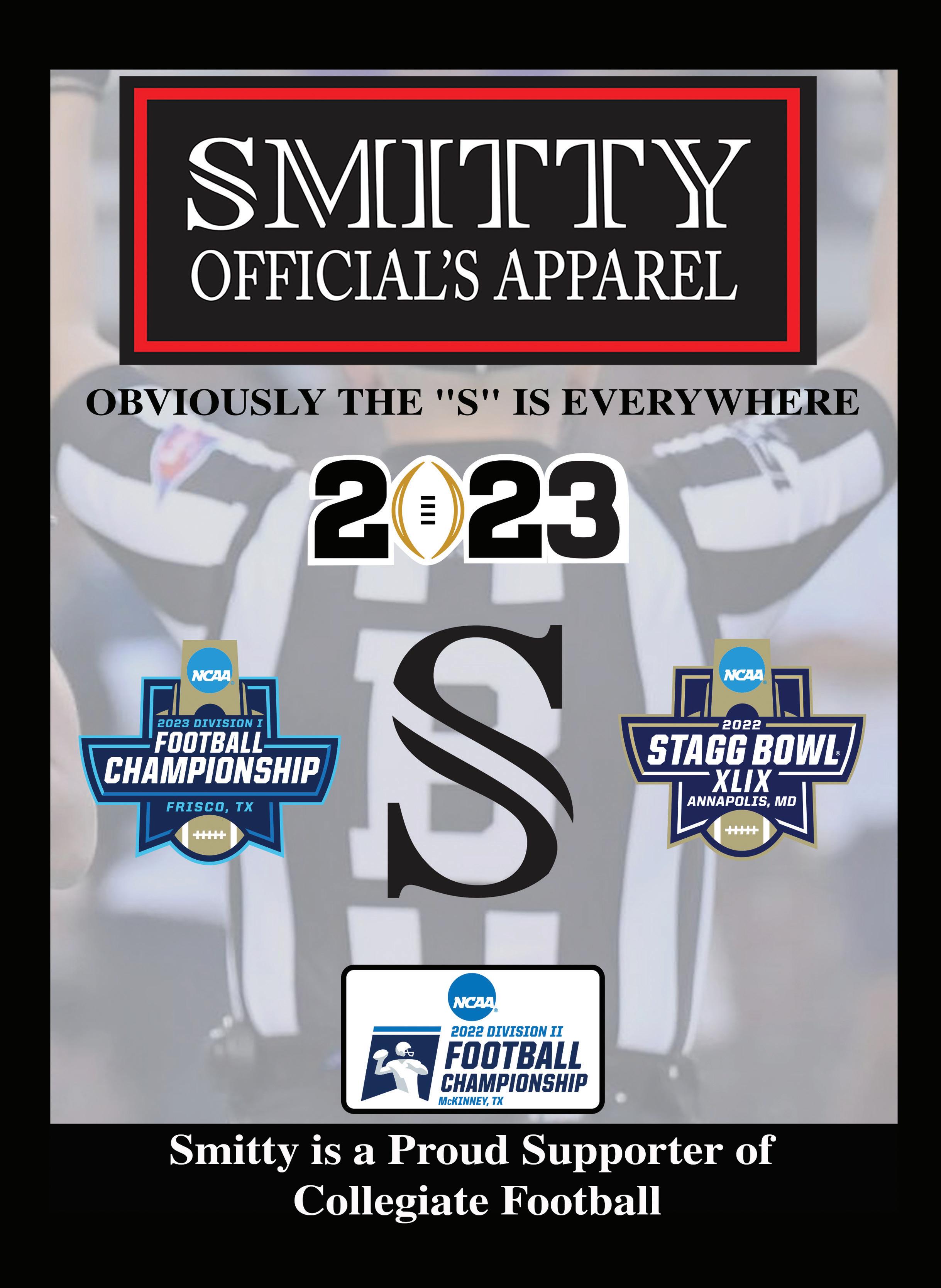
NEW YORK — Three longtime NBA officials have filed suit against the league after they were terminated from their positions following their decision to not receive COVID-19 vaccines based on religious exceptions.
In their complaint, filed in November in federal court in New York, Mark Ayotte, Ken Mauer and Jason Phillips argue the NBA erred in determining their refusal to be vaccinated fell short of the standard established for a sincere religious exception to be granted.
The 35-page complaint accuses the league of violating federal civil rights law, as well as New York state and city human rights laws. The plaintiffs have requested a jury trial and that all three be awarded back pay and compensatory damages.
“Plaintiffs were qualified for their positions. Mark, Kenny, and Jason were highly regarded NBA officials with over seventy years of combined experience. Their work withstood the constant scrutiny of millions of basketball fans for decades,” reads the complaint. “Plaintiffs suffered adverse action by being terminated from their employment due to their religious beliefs. It is undisputed that these longtime NBA employees would not have been fired but for their failure to comply with the inoculation mandates.
“Defendant failed to reasonably accommodate Plaintiffs’ religious


The 2022-23 season will be Julie Voeck’s last on the court in women’s college volleyball.
The longtime official and the coordinator of women’s volleyball officials for the Wisconsin Intercollegiate Athletic Conference will on
beliefs, as required by law, and terminated Plaintiffs under circumstances that were discriminatory in nature.”
Ayotte, 58, joined the NBA onfloor officiating staff in 2004 after having worked in the WNBA and the Continental Basketball Association. Mauer, 67, joined the NBA in 1986, making him one of the league’s longest-tenured onfloor officials. Phillips, 52, worked as an onfloor NBA official for 19 seasons before being promoted to the position of vice president of referee operations prior to the 2019-20 NBA season.

According to the complaint, each of the three applied for religious exemptions from the NBA’s inoculation mandate, which the league and the National Basketball Referees Association (NBRA) negotiated as an amendment to their collective bargaining agreement (CBA) in August 2021. In response to their accommodation requests, all three plaintiffs were interviewed on Sept. 17, 2021, by Neal Stern, NBA senior vice president and assistant general counsel, and Melissa Dean, NBA
See “NBA” p.11
Sept. 1, 2023, take over as the NCAA secretary-rules editor for women’s volleyball. Over the next half year, she will shadow Anne Pufahl, the current NCAA secretary-rules editor whose term will end after 12 years of service. During her time on the court, Voeck officiated the NCAA Division I Women’s Volleyball Championship from 2004-22.


“This was a difficult decision, because I love officiating,”
NEW YORK — MLB umpire uniforms will not sport a patch featuring the name of cryptocurrency exchange platform FTX during the 2023 season.
MLB commissioner Rob Manfred announced an end to the sponsorship deal during a Nov. 17 news conference. The change comes amid the collapse of FTX, which filed for Chapter 11 bankruptcy in mid-November.
“The FTX development was a little jarring,” Manfred said. “We have been really careful moving forward in this space. We’ve been really religious about staying away from coins themselves as opposed to more company-based sponsorships. We think that was prudent particularly given the way things unfolded. We will proceed with caution in the future.”
FTX Trading Limited became the league’s first umpire uniform
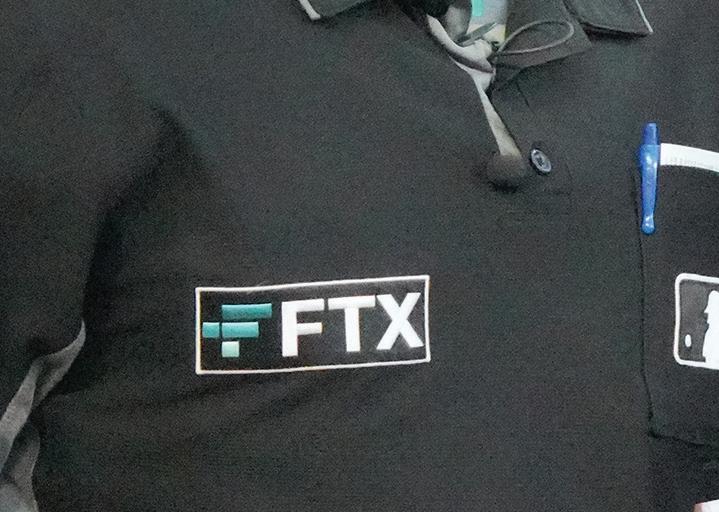
See “FTX” p.10

said Voeck, who has served as president of the Professional Association of Volleyball Officials since 2012. “I wasn’t looking to retire, but when this opportunity came up, it means I’m leaving as an active official sooner than I was prepared for.”
The Atlantic Coast Conference on Nov. 30 named Alberto
Riveron its new coordinator of football officials. Riveron served as the NFL’s senior vice president of officiating from 2017-20 and currently works as an NFL rules analyst. Riveron takes over for Dennis Hennigan, who was the league’s football coordinator of officials from 2015-22. Among his duties, Riveron will be responsible for managing the oversight, supervision, leadership,

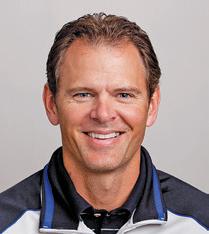



A full collection of umpire guides and books covering every major part of the game so you can step on the field with full confidence to perform at your best.




LAKEWOOD, Colo. —
Longtime Referee magazine football columnist Jerry Grunska died Nov. 11 after a long illness. He was 92. Grunska wrote a regular football column from 1987-99. His work appeared periodically after that with his last column appearing in 2006.
An English teacher in the Chicago area before his retirement, Grunska combined his language and education skills in his writing. After a long and distinguished onfield career in Illinois and Colorado, he was a popular clinician and officiating observer.
George Demetriou, a fellow Coloradan and Referee columnist, said he’d been officiating for 10 years when he met Grunska. “He was not only a great influence on my officiating, but on my writing as well,” Demetriou said. “I made sure he got full use of his Ph. D.in English and he taught me words I never knew existed. It is amazing how many things I learned from him — things I never would have paid attention to.”
“He was mechanically sound in all facets at every position and had a flair of his own when administering them through the course of the game,” said Scott Novak, who worked with Grunska before reaching the NFL. “He was trusted by the coaches and all the
training and development of an ACC officiating staff that includes onfield officials, instant replay officials, instant replay communicators, position coaches, evaluators and assistant supervisors. He will also serve as the day-to-day administrator of the ACC’s Football Officiating Alliance and will develop conference football officiating schedules and assignments.
Riveron spent nine seasons as an onfield NFL official from 2004-
officials he ever worked for and with, and truly was a mentor for all of us.”
Former Mountain West referee Clair Gausman attended many of Grunska’s training sessions. “Jerry had an ability to present a play that involved every member of the crew,” Gausman said. “For most officials this was a new concept, having to consider working together as a crew to reach the best decision. That type of approach can be applied to upper levels where most crews work together on a weekly basis. But in our area, this was totally different when most crews were rotated frequently and it was rare to see the same faces more than once or twice a season.”

“I remember before a high school football game, he brought out a piece of paper with nine dots on it and challenged me to connect all nine dots with four straight lines,” said Randy Campbell, NFL replay official and Rocky Mountain Athletic Conference coordinator. “I told him it was impossible, but then he took the paper back and showed me how. To make it happen, you have to go outside the dots with three of the straight lines. He gave it back to me and said, ‘There will be times you will have to think outside the box to accomplish great things.’”
Grunska is survived by his wife, Carol; a daughter and three sons. He was preceded in death by a daughter.
12 (side judge from 2004-07 and referee from 2008-12), becoming the first official of Hispanic origin in NFL history. In 2013, he was promoted to NFL senior director of officiating, a newly created position as second-in-command of the league’s officiating staff, and was elevated to senior vice president of officiating in 2017.
Prior to his time with the NFL, Riveron was a collegiate official from 1990-2004 in Conference USA and the Big East. He also previously served as the Greater
FTX continued from p.8
patch partner in 2021, with the patches rolling out starting with the 2021 All-Star Game. Umpires wore two patches: one on the front right of their shirts and another on their left arm sleeve. The patch on the left arm sleeve required the removal of memorial patches, which had been seen in recent years as tributes to fallen colleagues.
At the time, MLB and FTX signed a five-year deal for umpires to wear an FTX logo patch for all regular-season, postseason, spring training and Jewel Event games, such as Jackie Robinson Day. Terms of the deal were not disclosed — including whether umpires received any additional compensation for wearing the patches — but Manfred noted “the FTX deal was a meaningful deal for us.”
In professional sports leagues outside the United States, officiating uniforms have long been fair game for sponsorship opportunities. In the English Football League, for example, soccer referees have worn EA Sports patches on their arm sleeves. Rugby Australia referees have worn uniforms with prominent ads for Emirates airline.
SOURCES: ESPN, MLB.COM
New York Section III high school hockey got underway in November as planned after initial concerns that a contract dispute with officials might derail the season. At issue was whether hockey officials would get a $2 annual increase that was negotiated for other sports officials. Section III
administrators rejected the annual increase for hockey officials, noting they had just gotten an $8 increase from $94 to $102. But some hockey officials pointed out that increase was negotiated as a result of increasing the length of periods from 15 to 17 minutes — annual increases were a separate matter. Section III refused to back down, but athletic directors and coaches averted a work stoppage by offering to instead hire three officials for
When MLB announced a new pathway for umpires to reach the professional ranks last summer, it was unclear exactly what that meant for the Wendelstedt Umpire School. The school, which operates out of Ormond Beach, Fla., had been the only openaccess and independently operated umpire school in the United States. However, when MLB announced prospects had to attend a free, one-day clinic put on by MLB in order to get selected to participate in advanced training at MLB’s Jackie Robinson Training Complex in Vero Beach, Fla., it muddied some of the water on what exactly it meant for the school.
“It kind of just means that we’re going on business as usual as it’s been since the early ’30s,” said Hunter Wendelstedt, MLB umpire and owner and operator of the Wendelstedt Umpire School. “I think there was some miscommunication on both sides.
“Through talking with MLB, we worked out the confusion that there was between what I thought was going on and what they thought was going on and we’ve come to an agreement that we’re going to work together so we do what in our opinion our school has done forever, and that’s try and train the best umpires not only to reach the major league level, but all levels around the country and around the world. This agreement basically just ensures our students will have an opportunity to strive to their goals.”
MLB had stated the new format would still allow a path for Wendelstedt graduates to access the advanced training. The new agreement offers top graduates of the school an opportunity to participate in MLB’s new umpire development program and enter the ranks of professional umpiring.
Wendelstedt also emphasized that students who participate in the Wendelstedt School and then end up going to an MLB one-day camp would have a better opportunity to get selected by MLB.
“It’s kind of a win-win for both sides and at the end of the day, we’re going to accomplish a goal of getting the best umpires we can,” he said.
Wendelstedt and MLB have been working together over the past 16 years with the setup of youth academies across the country to help
continued from p.8
assistant vice president and senior counsel for employment and benefits.
A little more than one month later, on Oct. 21, 2021, both Ayotte and Mauer were informed by the league that their request for a religious exemption had been denied. As such, they were each suspended without pay and medical benefits for one year as spelled out in the amended CBA. On Sept. 1, 2022, both Ayotte and Mauer were terminated by the NBA.
give opportunities to more people. Both are working to get more female umpires and other under-represented groups into umpiring. Wendelstedt mentioned the school is going on a major recruiting effort this upcoming year to reach out to guidance counselors in high schools and colleges to recruit women’s softball players who already have a knowledge of the game and may be an avenue to attract more women to the school.
The Wendelstedt school has operated since 1938 and its direct predecessors have trained more than 10,000 umpires over the past eight decades, including 8,000 since 1977 under the auspices of the Wendelstedt family. To date, 139 current and former MLB umpires have graduated from the school and six of MLB’s eight current MLB umpire supervisors are graduates of the school.
The complaint states Phillips received a call on April 4, 2022, from Byron Spruell, NBA president of league operations, informing him that he would be terminated effective April 28, 2022. After continued discussion about the matter, Phillips was officially terminated from his position on May 9, 2022.
All three plaintiffs also argue the league has refused to reinstate them to their positions despite the league lifting the vaccine requirement for the 2022-23 season.
their regular-season games — something typically only seen in the postseason — while the pay dispute goes through arbitration.
On Nov. 29, a California judge sentenced a Sacramento man to 30 days in jail, one year of probation and anger management courses for knocking an assistant referee to the ground during an Oct. 30, 2021, youth soccer game.
Vicenta Robles Jr., 35, pleaded no contest to a misdemeanor charge of battery on a sport official. Robles was also banned from attending youth sports for six months and issued a no-contact order, needing to stay the length of a soccer field away from referee Andrew Reali. Reali told KTXL-TV he received a sprained thumb in the attack, which was caught on video and went viral. “This case serves as a reminder of the importance of common decency, particularly
at youth sporting events,” the Placer County District Attorney’s Office said in a news release.
Karl Richins confirmed to Referee in late November that he was retiring as coordinator of football officials in the Big Sky and Western Athletic conferences. Richins was named coordinator of football officials for the Big Sky Conference in 2013. He was named coordinator of football
officials for the Western Athletic Conference in 2021. He was an onfield official for three different Division I conferences from 19882010, starting in the Big Sky Conference before moving to the Mountain West and finally the Big 12. He began his officiating career in 1985 at the high school level in Pocatello, Idaho. He spent 25 years as a U.S. probation officer before retiring in 2008.
SOURCES: SACRAMENTOBEE.COM, KCRA-TV, KTXL-TV, WIACSPORTS.COM, WSYR-TV, CNYCENTRAL.COM

Officiating is filled with tough calls, such as the block/ charge play in basketball or “pole-bender” home runs in baseball. Those calls challenge the judgment of even the best veteran officials.


But there’s another significant challenge in officiating: learning every nook and cranny of the










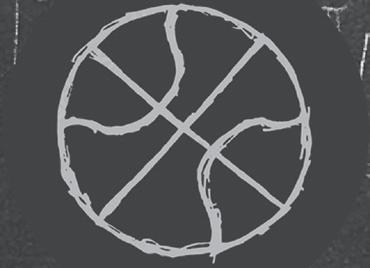



rulebook. We are, after all, expected to know the rules to mastery. That knowledge is essential to our success on the field, court or pitch.
However, each of our sports contains rules that resist our efforts to become experts in them. Some of that might be due to the complex language needed to cover the concepts. Sometimes the concepts

aren’t difficult, but in addressing all the possible variations, there’s a high degree of complexity.
Whatever the reason, some rules more consistently trip up even veteran officials. We know there are many officials who would secretly admit they hope “Rule X” never pops up in their game because they’d be forced to muddle through.

But we also didn’t feel it was enough merely to name these challenging rules. We wanted to give you tools to reach mastery. So you’ll find an accompanying story with learning advice from another environment that challenges students — medical school. Additionally, in each of the sports sections this
month, you’ll find an in-depth article that dissects these rules, arming you with critical information you can use as you study for the games and matches ahead.

By the time you’re done poring over this issue, we hope we’ve equipped you with the knowledge to say: “That rule’s not so tough.”

While designated hitter rules can get complex, few rules situations seem to universally strike fear in the hearts of more umpires than sorting out batting out of order. Like many tough rules, the basics are pretty straightforward. Teams have to bat in a certain order; otherwise, there will be penalties. But what penalties apply, if any, depend on when the infraction is caught. The penalty (an out) is assessed on someone other than the person who was improperly batting. Depending on the playing action, there may

be ramifications for other runners on base. Finally, there’s sorting out who is legitimately supposed to be in the box once all the dust settles.
Especially in a case where there are multiple instances of batting out of order, applying the rule to the situation requires complete mastery of every aspect of the rule. And because batting-out-oforder situations don’t come up all that often, it’s not a rule we get frequent practice applying. For those reasons, batting out of order ranks with us as the hardest rule in baseball.
The editors of Referee decided to dive deeper into this concept of the hardest rules. After careful deliberation and consulting with outside officiating experts, the editors arrived at what we consider the hardest rules in baseball, basketball, football, softball, soccer and volleyball. Our choices are outlined ahead.





At first glance, the definition for correctable errors found in the NFHS and NCAA rulebooks does not seem so onerous: a handful of specific situations, nearly all related to free throws, that officials may correct during a narrow window.

However, many officials don’t understand all of the elements that govern these situations. For starters, many aren’t even aware that every made goal results in a momentary dead ball, and knowing how many dead balls have occurred is a central tenet in determining whether a
correctable error is still eligible to be, well, corrected.
Officials also must have a keen awareness of the definition of point of interruption in order to know how play should resume, must understand which elements of game play that took place during the correctable error window remain in the official scorebook and which are discarded, and must possess the game management skills to pacify understandably upset coaches who are forced to suffer the consequences that result from the error.
Any time a rule takes a page or more to explain, it typically means it is complex. This is true when it comes to the DP/ Flex rule. While some coaches use the rule in much the same way a baseball coach uses a designated hitter, there are many nuances and subtleties to the rule that can keep even the most veteran coaches and umpires on their toes.

Ask most umpires about the DP/Flex rule, and they will tell you it took them at least a couple of seasons before they understood it. Some will tell you they still don’t understand all the technicalities of the rule. It is one of those rules when a coach asks a question about it, it gives you pause and makes you think. It is imperative umpires understand the intricacies of the rule and understand all that is allowed when it comes to adjudicating this rule. Failure to do so can lead to anything from an inaccurate lineup card to an illegal player. Understanding the rule may take a year; mastering it can take a career.
While attaining mastery of the rulebook may not be easy, it’s also (if you’ll pardon the cliche) not brain surgery.
But are there lessons from learning to be a doctor — after all, medical school is one of the most demanding environments for students out there — that can apply to sports officials who merely need to learn a rulebook? That’s a question Referee magazine set out to answer as we reached out to Ellen Kaplan, learning specialist at the Johns Hopkins University School of Medicine in Baltimore.
Kaplan works with medical students both preclinical, which is years one and two, and clinical, which are years three and four, helping them understand different ways we learn and how to approach the curriculum, including study strategies and test preparation. While there are certainly vast differences between medical school and learning the rules and mechanics of a sport, Kaplan said there are learning strategies that will work no matter what subject you’re
tackling — some of the same principles for studying pharmacology can help you master pass interference.
It’s important to first understand there are different levels of learning. Kaplan pointed to Bloom’s Taxonomy, a pyramid that classifies learning or educational objectives. At the bottom is the ability to remember something. Moving up the pyramid, there is the ability to understand it, then the ability to apply that knowledge. Moving higher up are the abilities to analyze, evaluate
and then, finally, create with what has been learned.
Sports officials need to go beyond the lowest level of the pyramid, mere knowledge and the ability to recall facts and basic concepts — but it's a starting point.
“Knowledge is retention of information at a very low level,” Kaplan said.

“It’s remembering the facts and that’s the basis of all learning.” While officials need to start there, to truly be able to master the rulebook and be able to deploy that knowledge to officiating a


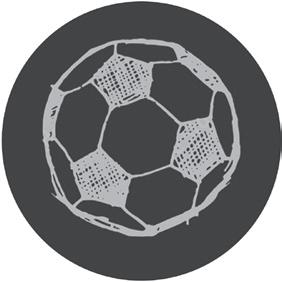

Law/rule 14 is straightforward in the reasons for awarding a penalty kick and how the penalty kick is to be taken. The rule becomes difficult for all soccer officials because over 90 percent of penalty kicks taken result in a goal. The decision by the referee to award a penalty kick could decide the match. This becomes even more difficult in a highly contested match or a playoff situation.
The awarding of the penalty kick is difficult in itself. It's important to handle the procedures accurately to avoid the need to award a second kick or caution players who commit infringements.
It is imperative the referee exhibit extreme confidence when making the penalty kick call and be in good position to make the call. Once the decision is made, the referee must quickly take total control of the situation to prevent retaliations, dissent or other possible problems. When the players are taking their positions for the penalty kick, the referee must make sure they are not encroaching, committing misconduct or acting in a manner that will disrupt the kicker or goalkeeper. The referee must accomplish all of this while being in complete control of the players and their own emotions during this critical moment.
game or match, officials need to attain a deeper understanding so they truly understand the rules and are able to apply what they’ve learned to what they’re seeing in gameplay.
Attaining that level of understanding requires working with the material in some different ways. Here are some techniques that can help sports officials establish a firm base on Bloom’s Taxonomy and move up the pyramid:

Remember using “Roy G.Biv” to help recall the colors of the rainbow (Red, Orange, Yellow, Green, Blue, Indigo, Violet), or “HOMES” to name the five Great Lakes
(Huron, Ontario, Michigan, Erie, Superior)? Both of those are examples of mnemonic devices that help with recall.
“Mnemonics are great for things that are related,” Kaplan said.
Creating your own mnemonic device to remember some aspect of the rules is a great way to engage with the material — and improve your ability to recall it later.
There’s nothing like creating good old-fashioned flashcards for helping to learn something.


“Flashcards are great for rote memorization,” Kaplan said.
But flashcards can also
be used to help develop a deeper understanding. If you’ve got something where you’re trying to learn all the facets and then how it needs to be handled and applied, put all those things down on different cards, she said. Then, scramble the cards and try to put them back in the proper order.
“Learning is not just one direction. When we learn, we need to learn forward, backward, up and down. Things are not always presented to us in the exact way we learned them or reviewed them,” she said.
What we encounter on the field or court might not be the “textbook situation,” outlined exactly in the order it was presented. But as sports





officials, we will need to be able to figure things out from the middle of a situation, and being able to sort out the flashcards will help when facing the actual situation.
Another good technique for forming long-term memories is called the memory palace technique, which is a type of mnemonic device. This involves connecting familiar visualizations with the concept you’re trying to remember.
Kaplan provided an example of how it’s used for medical students. A student studying pharmacology — or how drugs work — needs to learn a specific medication,
The kicking team may not be the first to touch a scrimmage kick — usually but not always a punt — that has crossed the line of scrimmage. It is not a foul but a violation. If the receiving team recovers the ball but winds up not having it at the end of the down due to a fumble recovered by the kicking team, the receiving team may choose to take the ball at the spot where the kicking team first touched it.

Where it gets complicated is if either team fouls during the period between the touch and the end of the down. A foul by the receiving team during that period can cancel the ability to invoke the first touching option. A foul by the kicking team can increase the receiving team’s options regarding where it will wind up with the ball.

Additionally, who ultimately winds up with the ball at the end of the down impacts the penalty enforcement and the teams’ options. Because that situation happens so infrequently and there are so many possible permutations, it is, in Referee’s opinion, the hardest football rule to master.
side effects, how it’s used, what the warnings are and mechanism of action. So for a common glaucoma drug, pilocarpine, a student could start by drawing a picture that incorporates imagery the word suggests, such as a pile of cars and a pine tree. Then, the headlights can be bulging because bulging eyes can be a symptom of glaucoma. Glasses can go around the eyes because corrective lenses might be part of that. And those connections continue with the other elements the student is trying to learn.
“It’s really again about making connections,” Kaplan said. “We have a lot of information in our longterm memory. Anytime we can combine or attach new
information to something already embedded, when we recall that embedded information, that new stuff is likely to come with it.”
It can even be helpful to have a specific place where you study. During the pandemic, Kaplan advised students stuck in their apartments to have a dedicated study space. If they were at the same table where they ate their meals, she advised sitting in a different spot.
Then, if something comes up, you can visualize sitting at that particular place of study going through the material and it can help with retrieval of that information.
While this may sound like a new concept, it’s actually something we do all the time, she said. When you can’t find your keys, you retrace your steps and think about where you were last when you had your keys.
Visualizations involve connecting imagery with concepts.
For example, someone studying baseball rules could visualize locations on the field, the situations that can happen in those places and the rules that apply. Further, an umpire could think about positioning to handle those plays.
The visualization can help in the retrieval process for
that rule's information during the game.
You can’t expect to learn something complex in one sitting.


To get to automatic recall of information, it’s helpful to have seen that information multiple times over a period of time, Kaplan said.
“Basically, your intention is to see it, recreate it by your own hand and then put it away,” Kaplan said. “And then 24 hours later, you go back to it.”
At first during those reviews, you may know you reviewed something previously, but you haven’t yet reached a point of instant recognition or recall. But the more you do it,
Tomost non-volleyball officials, volleyball seems like a pretty easy sport to grasp. It quickly becomes clear that it isn't so simple when they realize they need to know where 12 athletes are on the court at any given time, those 12 generally have substitutes who come in and out for them, there is a libero player who can play multiple positions in the back row and the players switch spots on each rotation.
Ask most referees, and they will agree figuring out rotations is their toughest job. Needing to know which players are in the front row versus the back row, which players

are each others’ opposite, where each player must line up before the serve, what each player can and cannot do based on court position, etc., it can get complicated very quickly.



Failure to understand rotations can lead to a lot of confusion and potentially provide teams an unfair advantage. It can also lead to missing other rules, such as illegal back-row attacks and blocks. It can also lead to a wrong server, which can be a big headache to clean up. In general, rotations set the foundation for all other rules, and referees need to master this rule in order to succeed.
Just like many of our calls on the field or court, we know not everyone will agree with us on the hardest rules. You’re welcome to throw the challenge flag. Although our calls will stand, you’re welcome to make a different call. Share your thoughts and we may share them in a future issue.
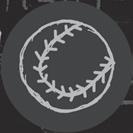





letters@referee.com

the more you should be able to recall each time.
Once you’ve reached a point with rulebook material that you can easily recall it, one of the best ways to get to a higher-level understanding is to teach the material to others.

Being able to summarize the rule and repeat it to others in your own way shows you’ve moved to that next level, to understanding.
But what if you’re not the instructor at your officials association training? Who can you teach?
“Talk to your plants,” Kaplan said. “Talk to your pets." A good tool to use is a recording app on your phone. “Teach it to yourself, then
listen back for correctness,” she said. See if you got the information correct or if you forgot to add some important part.
Another great way to get to a deeper understanding of a rule is to write a test related to the application of the material.
“That’s something I suggest to my students all the time,” Kaplan said. “When it’s something that difficult to master, learn it as best you can. Then write a test question for your peers to have them answer. When they answer the question, if they get it wrong, you as the content expert get to explain it to them.”

Plus, writing the test question in a way that is
similar to how you’ll encounter the material on an officiating test will help your own testtaking.
In your own testing, look at the questions you got wrong and understand why you got them wrong, she said.

We all know the study of game film is a great way to critique our mechanics, but it’s also a great way to learn how to apply the rules.
“When we think about application, it’s how do we take what we know and use it in a new way,” Kaplan said.

Looking at game film is a way to help develop this level of knowledge — watching three different related videos and recognizing not only what

meets the requirements for enforcement of a particular rule, but also what doesn’t meet the requirements, and being able to say why that doesn’t meet the requirements.

All of the techniques can help you master challenging material. Just remember, it’s not necessarily going to be effortless. In fact, it helps when it’s the opposite.
Learning is an “effortful struggle,” Kaplan said. But continuing to work with the material will make it easier.
“The more we retrieve it using what we already know, it becomes easier and easier, faster and faster, until it becomes rote,” she said.

If you look at film clips of MLB games from years ago, you’ll often see umpires dashing madly about and calling plays on the run. Conversely, I think we’ve all seen umpires who seem glued to one spot even when the situation calls for movement.

How we move on the field can affect our performance. Too much and our ability to see and accurately process action will be impaired because our heads, and thus our eyes, will bounce around. Too little and we may end up so far away from a play, or with such a poor angle, that we can’t see all of its elements.
Our image can also suffer. Excessive movement can make it look like we’re trying too hard and are in over our heads. This includes false, or needless, hustle that is usually done just to put on a show. Not enough motion and we can look lazy. Neither of these extremes enhances our image and, as you’ve probably heard, perception can be more important than reality.
We should strive for a happy medium where we move in a brisk but controlled manner that gets us where we need to be, when we need to be there, and makes it look like we know what we’re doing. For many of us, this is something that requires thought, effort and experience. Even with the aid of mechanics manuals and the sage advice of veteran umpires, it’s a trial-and-error process that takes time. This is one reason why I’ve always talked about the need for umpires just starting out not to get over eager and want to advance too quickly. We can’t know how much we don’t know until we’ve been at this for a while, and it takes time for each person to experiment until we figure out what works best.
Obviously more movement will be needed the smaller the crew, but we can still do it in a controlled manner.
Ultimately, the angle we get on a play is more important than being on top of it.
When I had the plate I got in my stance and looked at warmup pitches in both halves of the first inning. This helped me to focus on my timing, get a sense of what and how the pitcher throws and how the catchers receive the ball, and have a get-acquainted chat with the catchers. Plus, I thought this made it look like I took my job more seriously than if I just stood to the side like I wasn’t engaged. But recognizing impressions of us can be formed before the first official pitch is thrown, I neither dragged myself back there nor got there in an overly exuberant manner. Instead, I strove for something in between that looked crisp and businesslike. I also did this when I dusted off the plate.
Say the batter hits an infield grounder with no runners on base. We need to get a few steps down the line to be able to help the base umpire if the throw is awry and the first baseman tries to tag the batter-runner or pulls his foot off the bag. If we take only a step or two — or none — we look like we’re loafing and we’re 90 feet away from being able to provide help if it’s needed. But if we sprint down the line we can’t provide much help because so much movement and head-bobbing make it difficult to process what we see. Again, strike a balance: Briskly move down the line a few steps, get set before the play happens, watch it, provide help if necessary, then crisply trot back behind the plate.
We may not think much about between-inning movement, but it can be important. Eyes may be on us, especially if we made a pivotal call to end the inning. I didn’t bounce out from behind the plate and yell at the team taking the field, “Let’s hustle, guys” because I thought that was corny, but I also didn’t slouch around, get down on a knee, etc., while the teams changed sides. I took a few steps down the line and stood there in an upright but not rigid manner. If I got together with a partner on the bases (which we should keep to a minimum) I made sure I was back in position to start the inning.
Depending on the size of the crew and whether an umpire goes out on a trouble ball, we may have coverage responsibilities at any base. If we move too slowly we may never get correctly positioned to make a call, so we’ll have to make it long distance; right or wrong, this will open us up to criticism. But if we take off like a sprinter out of the blocks we may interfere with players or throws, needlessly get to a base when no play is developing, overrun the play and be out of position, or otherwise make ourselves useless. When the ball is hit, glide, in a controlled manner, a few steps toward the base we may need to cover, stop and read the play. If it looks like action may develop, we need only take a few more steps and we’ll be there in time to stop, get set and make the call.
When there’s a trouble ball in the outfield, each base umpire should pause, read its direction and trajectory, and react by going out (trying to make sure that another umpire doesn’t do so) or rotating on the bases if another one does. If you go out, don’t keep running, because your head and eyes will be moving at the crucial time when you have to make a ruling. Go out briskly, but not full tilt, and then, while you may end up farther away from the play than you’d like, stop so you’ve got a controlled look at whether the catch is made, the ball is fair or foul or whatever. As is the case with plays on the bases, getting a good angle on a trouble ball is more important than being on top of it. Jon Bible, Austin, Texas, worked seven NCAA Division I College World Series. In 2019, he was inducted into the National College Baseball Hall of Fame in Lubbock, Texas. *
The number of years of full-time MLB service for the seven onfield umpires selected to work the 2022 World Series: Dan Iassogna (19), Lance Barksdale (16), James Hoye (13), Alan Porter (10), Jordan Baker (nine), Tripp Gibson (eight) and Pat Hoberg (six).
Whether you are one of the fortunate few who has the opportunity to work baseball in a warm-weather state whose season is just around the corner, or if you won’t see a pitch for a few more months, now is a good time for a gear checkup Make sure your uniforms fit and you’ll be able to meet any new requirements such as the style of shirt, a cap featuring a new logo, etc. Examine all of your equipment to ensure it is safe and will keep you protected for another season. Determine whether you have enough of the proper accessories (indicators, ball bags, shoe polish) to get you through a full campaign. Don’t be that umpire who is scrambling to mark an item off your checklist with less than 24 hours to go before first pitch.







Are you a high school baseball umpire looking for a one-stop shop to improve your game?

The Prep Baseball: 2023 book is a collection of the best Referee has to offer, providing high school umpires with challenging rules reviews, detailed mechanics, bestpractice strategies and real-world quizzes and caseplays — all in one clean and easy-to-read format.
The full-color, magazine-sized, 96-page book costs $18.95 and is available at store.referee.com/ baseball.
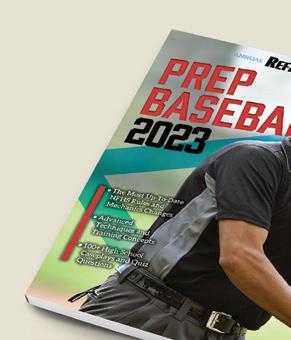
When the ball is hit, glide, in a controlled manner, a few steps toward the base we may need to cover, stop and read the play.
In each question, decide which answer is correct for NFHS, NCAA or pro rules. Solutions: p. 85
1. B1 hits a deep and high fly ball into the right-field corner. F9 gets under the ball at the fence near the foul pole, standing in foul territory. F9 jumps and touches the ball with his glove while the ball is over fair territory. The ball deflects off his glove and travels over the fence on the foul side of the foul pole.
a. Home run. The ball was fair and traveled over the fence in flight.
b. Foul ball. The fielder was in foul territory when he touched the ball, and the ball was foul when it went over the fence.
c. Two-base award. The ball was fair but traveled over the fence over foul territory.

2. The home team players are all dressed in gray uniform pants and shirts. When a coach comes out to coach third base, the plate umpire notices he is wearing khaki shorts.






a. The coach will be ejected from the game.
b. The coach may coach with khaki shorts on.
c. The coach will be restricted to the dugout.
d. The coach will be told to return to the dugout until he is dressed in the team uniform.
3. The starting pitcher listed on the lineup card is required to:

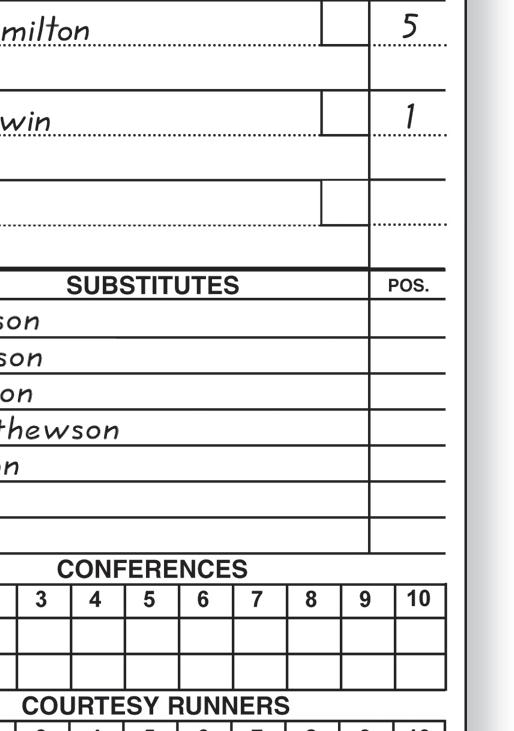




a. Pitch until the first hitter becomes a runner or is put out.
b. Pitch until the first inning is over.
c. Pitch to a minimum of three consecutive batters.
d. There are no requirements for the starting pitcher.
4. An illegal substitution may be discovered by:


a. Only the umpire.
b. Only the opposing team.
c. Only the illegal player’s team.
d. The umpire or either team.

out of order is one of the most difficult baseball rules, if not the most difficult one, for umpires to grasp. It generates more questions than any other rule. A local high school coach claimed he was fired from his minor league managerial job primarily because he had a player called out for batting out of order — he had posted a different lineup in the dugout than what he gave to the plate umpire. Most of the time though, the wrong batter is caused by confused players. Once the lineup is accepted at the pregame conference, no changes can be made unless it is a legal substitution (NFHS 4-1-3; NCAA 4-4a; pro 4.03d). Except where noted, the material applies equally to NFHS, NCAA and pro rules.
On the surface, the batting out of order rule is very simple. When a player bats in the wrong spot in the order, the proper batter is called out, but it is one of the few appeal plays in baseball and correctly timing the appeal is essential. Appeals may be premature, proper or belated, and that determines how the umpire deals with the situation. There are also a variety of special situations that may further complicate the ruling. Only the defense can make a proper appeal (NFHS 7-1-1; NCAA 7-11a; pro 6.03b7 Cmt 1). However, sometimes a scorekeeper or fan will shout out the alleged infraction. When that happens, the umpire should ignore it, but it’s likely a member of the defense will be alerted and speak up — it then becomes a legitimate appeal. More than one
In this scenario Edwards, listed as the No. 5 batter in the lineup, should have been at the plate, but Daniels batted instead and reached base.
The defensive coach appeals to the plate umpire that the offensive team batted out of order.
The umpire rules Edwards out.








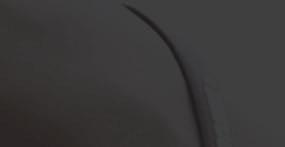






































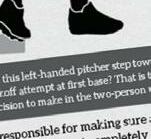













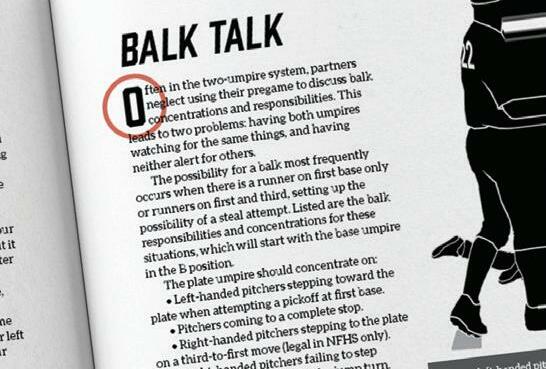
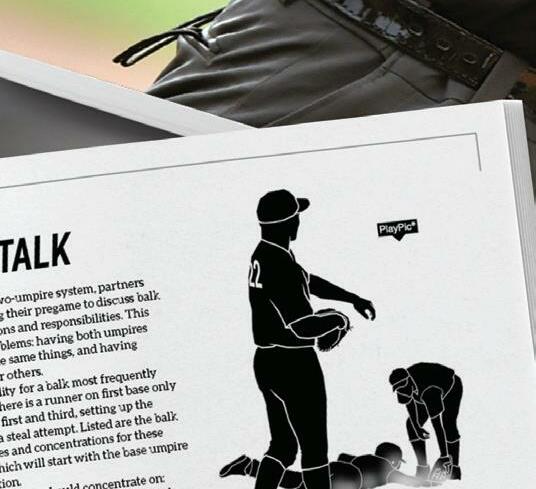





















Play: With R1 on first, B2 singles to right. R1 makes it to third but misses second base. B2 takes a big lead and F1 unsuccessfully tries to pick him off. An appeal is then made that R1 missed second. Ruling: In NFHS and NCAA, it would be too late for an appeal because a play was initiated by the defense when F1 threw to first for the pickoff. In pro, it would also be too late for an appeal; it doesn’t matter which team initiates the play (NFHS 8-2 Pen.; NCAA 8-6b4; pro 5.09c).
Play: With no outs and R1 on first and R3 on third, B3 grounds to F6, who flips to F4 for the force. R1 slides directly at the base with his upper leg waist high to F4 and contacts F4’s glove. The relay throw retires B1. Ruling: R1 is guilty of interference and the ball is immediately dead. B1 is also out on the interference and not on the throw to first. R3 is returned to third (NFHS 2-32-2b, 8-4-2b; NCAA 8-4c3; pro 6.01j).
Play: Charles bats in Baker’s turn and flies out to end the bottom of the fourth inning. Ruling: In NFHS, a proper appeal must be made before the infielders leave fair territory. In NCAA and pro, a proper appeal must be made before the first pitch in top of the fifth inning (NFHS 7-1-2 Pen. 2; NCAA 7-11a2; pro 6.03b3).
Play: With the bases loaded and two outs, B6 hits a long fly ball toward the right-field fence. R1 is not sure if the ball will go over the fence, so he goes halfway to second and watches the ball, which is not caught. Meanwhile, B6, running at full speed, passes R1. When that occurs, only R3 has touched the plate. Ruling: B6 is out for passing R1 and a time play is created. Only R3’s run scores (NFHS 8-4-2m; NCAA 8-5m Note; pro 5.09b9).
scorekeeper has been removed from a game for snitching.
If an appeal is made while the improper batter is still at bat — a premature appeal — there is no penalty. The proper batter simply takes his place in the box and assumes the count accrued by the improper batter, if any (NFHS 7.1.1A; NCAA 7-11a1; pro 6.03b2).

During an inning, a proper appeal must be made after the improper batter completes his turn at bat (gets on base or is declared out) and before the first pitch (legal or illegal) to the next batter, a play or attempted play or an intentional base on balls (NFHS 7-1-1 Pen. 2; NCAA
7-11a2; pro 6.03b3). Any advances by a runner while an improper batter is at bat, not resulting from a batted ball, are legal. Those include a balk, passed ball, wild pitch, stolen base, errant pickoff throw, etc.
Play 1: With runners on first and second, B3 should bat, but B4 bats instead. On the first pitch the double steal is attempted, with R2 thrown out at third and R1 safe at second. On the next pitch B4 triples. The defense then appeals that B4 is an improper batter. Ruling 1: R2 remains out while R1 returns to second; B3 is out, with B4 coming to bat next in his proper turn.
If a runner is retired while an
improper batter is at bat because of a pickoff or being caught stealing, the out stands. Runners who advance as a result of a batted ball are returned to their position at the time the improper batter took his position in the batter’s box. In NCAA and pro, any outs or advances resulting from a batted ball of an improper batter who is properly appealed are nullified because the out on the proper batter for not batting in turn takes precedence. Thus, it doesn’t make sense to appeal an improper batter who hits into a double play. In NFHS, any outs made on the play stand (NFHS 7-1-1; NCAA 7-11a2; pro 6.03b32).
Play 2: With runners on first and second and no one out, B4 should bat, but B5 hits instead, grounding into a potential 6-4-3 double play, but F4’s throw to first is not in time to nip B5 for the final out of the inning. The defense then appeals that B5 is an improper batter. Ruling 2: In NFHS, R1 remains out. B4 is also out for missing his turn. B5 will lead off the next inning. In NCAA and pro, R2 and R1 return to their bases. B4 is out and B5 bats (again).
If the violation occurs during a play that ends a half-inning or the game, the appeal must be made before the defensive team leaves the field. That means before the pitcher and all fielders have crossed the foul lines, and before the catcher has left his position on the way to the bench (NFHS 7-1-1 Pen. 2; NCAA 7-11a2; pro 6.03b3).

If an appeal is made after any of the limits on a proper appeal have occurred, it is a belated appeal and is the same as no appeal and there is no penalty. That legalizes the improper batter’s at bat and the next batter is the batter who follows the batter whose at bat was just legalized (NFHS 7-1-1 Pen. 3 and 5; NCAA 7-11a3; pro 6.03b7).
Play 3: B2 bats in B1’s spot and triples. The defensive team appeals after the first pitch to B3. Ruling 3: B2 stays on third and B3 is the legalized proper batter.
In a rare circumstance, the proper batter could be on base. If that should ever happen, his turn at bat
is skipped without penalty (NFHS 7-1-1 Note; NCAA 7-11a5; pro 6.03 AR Play 6).

Play 4: The lineup is Abel, Baker, Charles, Daniel, Edward, Frank, George, Hooker, Irwin. Daniel walks and Abel comes to bat. Daniel was an improper batter. There is no appeal and a pitch is made to Abel. Daniel’s walk is now legalized and Edward thereby becomes the proper batter. Edward can replace Abel at any time before Abel is put out or becomes a runner. He does not do so. Abel flies out, and Baker comes to bat. Abel was an improper batter. There is no appeal, and a pitch is made to Baker. Abel’s out is now legalized and the proper batter is Baker. Baker walks. Charles is the proper batter. Charles flies out. Now Daniel is the proper batter, but he is on second base. Who is the proper batter? Ruling 4: The proper batter is Edward. When the proper batter is on base, he is passed over, and the following batter becomes the proper batter.
A pitfall for umpires can occur in NFHS and what may appear to be batting out of order is actually an illegal substitution (2-36-3b).

Play 5: In the third inning Jones replaces Smith, who is playing first base and batting seventh. In the sixth inning as the team comes to bat, the coach tells Smith to re-enter. The sixth spot in the order is Green and he is to lead off. Smith steps to the plate to start the inning. Ruling 5: If detected (by anyone), Smith is out as an illegal substitute and Green is the next proper batter. That is not batting out of order. In NCAA and pro, where re-entry is not allowed, there is no question about the illegal substitution (NCAA 5-5j1; pro 5.10d).
A helpful hint for umpires is to consider umpires need only concern themselves with the previous two batters. No matter who batted last, the batter immediately before him was legal; therefore, the correct last batter will always be the name that follows the player who batted immediately before the last batter. George Demetriou, Colorado Springs, Colo., is the state’s rules interpreter. *
As another high school and college baseball season beckons, so does the reality that when it comes to officiating, umpires are often viewed as the redheaded stepchild of the officiating avocation.
Football officials? Here’s your locker room. Basketball officials? Here’s your locker room.
Baseball umpires? Yeah, the parking lot is right over there.
As such, we often succumb to a bit of a Grumpy Gus attitude when we’re in that crucial 30- to 60-minute window before a ballgame, which can cause us to lose sight of what we should be doing: having a productive pregame meeting with our partner(s) for that day’s game.

With a new season beginning, now is a good time to examine just what that pregame discussion should look like. This is adapted from the “pregame conference outline” that appears in Baseball Umpiring: Mechanics Illustrated, which Referee produces and updates on a two-year cycle.
Once all members of the crew have arrived at the ballpark, the first order of business should be making contact with whomever is responsible for game administration. This allows the crew to confirm its arrival, putting administrators and coaches at ease they will indeed have umpires for the game, no small consideration given the shortage of game officials that has emerged in many areas. It also gives the crew knowledge of who to consult should the services of a game administrator be required during the course of the game (i.e. dealing with an unruly spectator). This meeting is also a good time to confirm the time of first pitch, whether there will be any unusual pregame festivities that could delay the start of the game and any other initial housekeeping matters.
Much of this can be handled with proper communication even before arrival on site. Whomever is serving as the crew chief for the game should be reaching out to partners to discuss what time everyone will arrive, where everyone will park, who will be working the plate/bases, etc. Still, once everyone is in tow, a quick refresher is in order. Are we wearing black or blue shirts? Jackets, long sleeves or short sleeves? Are you still good with working the plate? Once the logistics are sorted out, the discussion can shift to that day’s game.
Pregame meetings are not the time to have a full-blown rules clinic. They are the time, early in the season, to discuss rule changes that are now in effect, points of emphasis and any part of the rulebook that is causing a particular crew member to have some indigestion. Start your actual pregame with these discussions before moving on to specifics for that day’s ballgame.
It’s the first item in the order of operations whenever the ball is put in play: Is it fair or foul? Therefore, the crew must know who has fair/foul responsibilities based on how many umpires are on the field and where they are located in a given situation. There also must be discussion about any situations where the crew is going to deviate from accepted mechanics — for example, if the home-plate umpire is giving up fair/foul responsibilities on a ball that has yet to reach the firstor third-base bag.
This is the second order of operations after fair/foul rulings. Again, based on the number of umpires working the game and where they are located in a given game situation, the crew must understand who has responsibility when a catch/ no catch judgment is required on a play. This is where outfield coverage also must be discussed, so the crew is in agreement on who is responsible for routine fly balls, trouble balls with converging fielders, trouble balls
along the foul lines and trouble balls involving the fence and possible home run rulings.
The only thing worse than having two umpires standing at a base waiting to make a ruling is having no umpires at a base waiting to make a ruling, especially at home plate. The crew must discuss basic rotation mechanics, understanding they will be different depending on the number of umpires on the field. The crew should also discuss how it will pre-pitch signal to one another and who will initiate such signaling whenever a rotation situation is in play.





Along with rotations, the crew must be in agreement on non-verbal signals that will be used for infield fly situations, double tag situations, time plays, appeals and whether or not an umpire has information to share with

a partner about a ruling. Nothing is worse than standing on a field, giving a pre-pitch signal to a partner and getting a “deer in the headlights” look in response. Thus, this pregame communication is crucial.
The crew should discuss how it will handle rulings that may involve more than one umpire, such as checked swings, possible batted balls hitting the batter before/after he leaves the batter’s box, the force-play slide rule on the front end of a double play, base touches and tag ups that lead to appeals, etc. Again, do not allow a lack of pregame communication to lead to situations where more than one umpire is making a ruling, or worse yet, no umpire is in position to make one.


Part of being a good partner and a good crew is knowing the people you are working with will take care of
business when it’s necessary. Discuss among the crew how you will handle excessive noise from a given dugout, the administration of restrictions and warnings and when it will be necessary for an umpire to intervene in an onfield discussion between a partner and a coach or player.
With all of the key points covered, give everyone on the crew one last opportunity to address any lingering question or concern, remind one another to work hard and be the best crew on the field, toss the lawn chair into the trunk, give yourselves a once-over to make sure zippers are up and shoes are tied, and walk as a crew to the field, knowing you have mentally prepared for a solid performance.
Scott Tittrington is an associate editor at Referee. He umpires college and high school baseball, college and high school basketball, and high school football. *







How many times have you seen a great move by a ballhandler, heard a fan or a coach yell, “That’s a travel!” and you react and rule it a traveling violation?
Every official has likely been guilty of this on some occasion. And when it happens, it means we are guessing on these plays and might be penalizing a great play just because it looked ugly or funny. A good mentor once told me, “There is no rule for ugly.” As such, we can’t whistle traveling violations on a play just because it’s ugly or atypical.
In order to correctly officiate a traveling violation, we must first know what the traveling definition is by rule. In all three rulebooks, traveling occurs when a player moves a foot or feet in any direction in excess of prescribed limits while holding the ball (NFHS 4-44; NCAAM/W 9-5.2). If a player catches the ball with both feet on the playing court, either foot can be the pivot foot; when one foot is lifted, the foot that remains on the floor becomes the pivot foot (NFHS 4-44-1; NCAAM/W 9-5.3). This principle also applies when an airborne player catches the ball and lands on the playing court with both feet simultaneously.

However, if we have an airborne player who lands on the playing court with one foot, the principle is not the same. When both feet are off the floor and the player lands with one foot followed by the other, the pivot foot would be the one he or she first landed on (NFHS 4-44-2a2; NCAAM/W 9-5.4.a.2). When the player lands on one foot, he or she is allowed to jump off that foot and then land simultaneously on both, in which
able to identify a ballhandler’s pivot foot is the biggest factor in allowing Clayton Brooks, Paris, Ky., to accurately rule on traveling violations.
case neither foot can then be the pivot foot (NFHS 4-44-2a3; NCAAM/W 9-5.4.a.3).
It’s very important we know these key points about traveling violations because it will help us get rulings involving footwork correct. If we can quickly identify the pivot foot in any of these situations, we more than likely are going to get the call right. It is a lot easier said than done, and it takes a lot of self-training and selftalking.
Missing these types of calls, like any others, puts one team at a disadvantage. If we call a travel on a legal move just because we’ve never seen it before or it looked ugly, as noted earlier, we take away the chance for a player of that team to beat his or her opponent to the hoop with a great play and potentially put points on the board. Conversely, if we let a ballhandler drag the pivot foot, lift it and return it to the playing court, or give that offensive player an illegal extra step to attack, that player is taking advantage with a move that can’t be defended by the opponent, potentially costing points to the defending team. Either way, we must do our very best to identify that pivot foot early and penalize it when it’s warranted and not call it when it’s a legal move.
Will we still miss these plays occasionally? Yes. Players move quickly and officials are human. If you believe you missed a traveling violation, the most important thing you can do in the moment is understand why that happened, whether you misapplied the rule itself or were not in a good
position from a mechanics standpoint, and move on to the next play determined to not repeat the mistake. That’s the first step in improvement on how to officiate these plays.
The next step comes away from the playing court. If you know you have trouble identifying legal footwork, you should be committed to watching film and finding another official whom you trust to sit down and break down plays with you. Whether it’s game film of a contest you worked or from a game featuring other officials, video work provides a great opportunity to watch plays in real time and then slow them down to take a more detailed look at the items you need to be observing to properly officiate these plays. The more plays you watch and the more virtual repetitions you complete, the more you learn and the more you will improve.
Have your trusted advisor quiz you while you are breaking down these game films and use rulebook language to defend your rulings. Do this throughout the season and during each offseason and you will find yourself becoming more comfortable finding the pivot foot and officiating footwork plays.
Again, will all of this film study translate into oncourt perfection? No. But it will put you in position to become the best official you can be. Vladimir Figueroa, Orlando, Fla., officiates college women’s and high school basketball, and high school football. He has worked both the Florida High School Athletic Association and Georgia High School Association state basketball tournaments. *
With Haywoode Workman no longer employed by the NBA after a 12-year stint as a staff official, Leon Wood becomes the lone former NBA player on the current officiating staff.
Wood played six seasons in the NBA and is now in his 27th season as an official, having worked close to 1,500 regularseason and 25 playoff games.
Other than games at UNLV, college hoop officials used to steer clear of Las Vegas to avoid the appearance of impropriety associated with sports betting.
Now, the pendulum has swung completely in the opposite direction, with the 2028 NCAA Men’s Final Four slated for Sin City’s Allegiant Stadium.
The four newest sites announced by the NCAA in November: 2027 — Detroit 2028 — Las Vegas 2029 — Indianapolis 2030 — Arlington, Texas
The NCAA also announced five new sites for the Women’s Final Four: 2027 — Columbus, Ohio 2028 — Indianapolis 2029 — San Antonio 2030 — Portland, Ore. 2031 — Dallas
Identifying a player’s pivot foot is key to accurately ruling on potential traveling violations.
All high school and youth level officials should make sure the pregame and halftime discussions with their partners in the locker room include these three topics: pregame technical fouls, stateadopted “mercy rules” (if applicable) and overtime procedures. Nothing looks worse than a crew that is not prepared to handle these administrative situations and has to have one of the officials go darting off to the locker room to grab a rulebook and seek additional guidance. Understanding each of these situations is essential for good game management and will make your crew appear educated and prepared when they occur.

In each of the following, decide which answer or answers are correct for NFHS, NCAA men’s and NCAA women’s rules, which might vary.
Solutions: p. 85.
1. A team’s uniform consists of all of the following, except which?
a. Game jersey.
b. Game shorts.
c. Socks.
d. All of the above are part of the uniform.
2. Which of the following items in a player’s hair are legal if they are securely fastened to the head and do not present a safety risk?
a. Barrettes.
b. Bobby pins.
c. Beads.
d. All of the above.
e. None of the above, as all are illegal.
3. A1 is fouled while dribbling, and team A is in the bonus. B2 is replaced by substitute B6. When is B2 allowed to re-enter the game?
a. Before A1’s first free throw.
b. After A1’s first free throw, if successful.
c. After A1’s second free throw, if successful.
d. After A1’s first or second successful free throw, and only if team B calls a timeout.
e. During the first opportunity to substitute after the game clock has properly started.
4. A1 commits a player-control foul (NFHS, NCAAM) or offensive foul (NCAAW) in team A’s backcourt. Which is true of the throw-in spot and shot clock?
a. Team B shall be awarded a throw-in nearest one of the four designated spots, and the shot clock is set to 20 seconds.
b. Team B shall be awarded a throw-in nearest one of the four designated spots, and the shot clock is set to 30 seconds.
c. Team B shall be awarded a throw-in nearest the spot of the foul, and the shot clock is set to 20 seconds.
d. Team B shall be awarded a throw-in nearest the spot of the foul, and the shot clock is set to 30 seconds.

e. Team B shall be awarded a throw-in nearest the spot of the foul, and the shot clock is set to 35 seconds.
of experienced basketball officials hope they never have to apply the correctable errors rule (NFHS 2-10; NCAAM/W 2-12). It rarely comes up and, when it does, it’s because the crew and/or the scorer have made a mistake. So, in addition to fessing up to the mistake for all to see, repairing the damage can be anywhere from simple to game-changing. The way the rule is written doesn’t help much and the average official might have trouble sorting it out, leading to the wrong decision.

Let’s start by distinguishing a mistake from an error. Officials and the table can make mistakes in a game. The referee can report the wrong number for a foul, or the table can add a foul to the wrong team’s total, for example. These are bookkeeping issues that can be fixed without incident for the most part and there’s generally no time limit to do so. The errors that we’re referring to are cases where points are incorrectly put on or
taken off the board. In these cases, the officials must fix the problem within a set time frame so it doesn’t change the course of the game.
When it comes to points scored being incorrect, there are two basic correctable errors: failure to award or shoot free throws properly and failure to award the correct number of points for a goal. Most of the time, the freethrow issue comes up when officials don’t recognize the seventh (NFHS, NCAAM) or fifth (NCAAW) team foul and restart play by a throw-in. They can also not catch the 10th team foul (NFHS, NCAAM) and erroneously let play go on after a miss on the first throw.
There is also the possibility of taking “unmerited” throws, like shooting the bonus on the sixth team foul or allowing the double bonus for the 10th foul when there were only nine (NFHS, NCAAM): No problem there; just take the points off the board for the unjustified throws. So far so good, but the rule also provides for the wrong player shooting merited throws
or merited throws somehow being taken at the wrong basket. When that happens, it’s a do-over, done properly.

The more likely correctable error is awarding the incorrect number of points for a goal. It usually boils down to the covering official witnessing a shooter’s foot on the three-point arc or not and signaling the incorrect score. It can also involve awarding baskets incorrectly, such as allowing a three-point goal on a throw-in going directly into the basket. Where things get hairy is the official signaling the correct number of points, but the scorer recording the wrong number of points. A simple error by the scorer can be corrected any time up until the officials leave the floor after the game. The error by the official, like the free-throw errors, must be corrected within the allowable window. When is that?




Despite the complicated wording of the rule, the officials have until the end of the next play to solve the problem. The rules address whether or not the clock is running, but we just
Error correctable to this point






When an error occurs with the ball dead and the clock stopped (point A), applying this sequence will help in determining if the error is still correctable.





need to remember the clock is always running when tries and taps are being attempted and always stopped when a free throw is being administered.



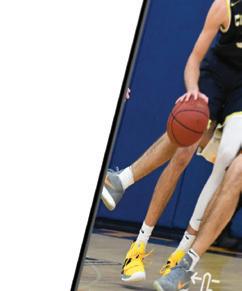
So, the rules add up to the same ending: The error is made, the ball is put in play and then becomes dead — through the officials stopping play or by a violation, foul or score being made. The officials must recognize and fix the error by the end of that dead ball before it becomes live again.






So, then what? After the error is corrected, how is play restarted? Again, the rule uses a lot of words to describe a simple concept: The ball is
put in play at the point of interruption. Let’s say the error is realized after team B has gone down the floor and scored a basket. If team A shot unmerited free throws, any points are canceled and the game resumes where it was stopped. If a score is corrected from a three to a two, it’s the same outcome. If free throws are to be taken or retaken, it’s the same deal with one exception because using the point of interruption is designed to minimize disruption to the flow of the game: If team A is denied a merited free throw, team B gains control (by throw-in or rebound)
See “Correct Correction” p.31
 Clock is stopped
Error occurs
Dead ball A B C
Dead ball Live ball Clock starts
Clock is stopped
Error occurs
Dead ball A B C
Dead ball Live ball Clock starts
Foul After Three-Point Try Play: A1 attempts a threepoint try on the wing. Clearly after shooter A1 has released the ball and returned to the floor, A1 is fouled by B2. The ball strikes the ring, but the try is not successful. Team A is not in the bonus. Where is the ensuing throw-in, and how much time shall be put on the shot clock? Ruling: Since A1 had released the ball and had clearly returned to the floor prior to the illegal contact by B2, A1 is no longer an airborne shooter, and the foul is not a foul during an unsuccessful try for goal. Since team A is not in the bonus, they shall receive a throw-in. In NFHS, the throw-in shall be at the outof-bounds spot nearest the foul, and the shot clock shall be set to 35 seconds (7-4-6, 7-5-4a, Shot Clock Operator Guidelines #6.b.i). In NCAAM, the throwin shall be at one of the four designated spots as in rule 7-3.2, and the shot clock shall be set to 20 seconds (2-11.6.d.2, 7-3.1.g, 7-3.2). In NCAAW, the throw-in shall be at the out-of-bounds spot nearest the foul, and the shot clock shall be set to 20 seconds (2-11.6.d.2.a, 7-3.2.b).
Play: A1 is dribbling the ball near the sideline in team A’s frontcourt. A1 dribbles the ball off his or her foot, it rolls away from the player and remains inbounds rolling along the sideline. A1 runs after the loose ball and while doing so steps on the boundary line while not touching the ball. A1 steps back inbounds and is the first to touch and pick up the basketball. Has a violation occurred? Ruling: When A1 momentarily lost control of the basketball while dribbling, an interrupted dribble has occurred, and A1 does not have player control of the ball. When A1 stepped on the sideline while not in control of the ball and not in the midst of a dribble, A1 may do so without violating. A1 is furthermore allowed to re-establish position inbounds and recover the interrupted dribble. Therefore, no violation has occurred, and play shall resume uninterrupted (NFHS 4-15-5, 4-15-6d, 9-3-1; NCAAM 4-13.5, 7-1.2, 9-2.1; NCAAW 4-12.5, 7-1.2, 9-2.1).
Good officiating crews discuss how to handle pass-and-crash scenarios during their pregame. Great officiating crews understand these types of plays can happen anywhere on the floor, not just when a ballhandler drives into the lane, and understand how to adjudicate them.
Take the play shown in the accompanying MechaniGram — a situation every official has encountered and one that can catch an unprepared and undisciplined crew by surprise. On this play, as the offensive team secures a rebound and begins a fast-break transition up the court, a wily defender (as indicated by the number two in the MechaniGram) steps in front of a ballhandler who has just made a backcourt pass.
Which official is responsible for the ballhandler? Who is taking the pass and who is taking the crash?
From a primary coverage area standpoint, the new trail official will have responsibility for the ballhandler, whom the trail is
following up the court, and will stay with the play to rule on the crash. Just one problem: This is a ripe scenario for the trail to become straightlined, as the quick nature of this transition up the floor prevents the official from being able to reach the sideline and advance far enough up the court to see through the play.
This is where an alert center official can earn his or her paycheck for the evening and make a crew-saving ruling. As shown in the MechaniGram, if the center identifies a potential pass-and-crash transition scenario, this is a great time to make a position adjustment, close down a few steps from the sideline onto the court and create a strong viewing angle to help rule on the play.
If nothing develops that requires the center official’s attention, another quick position adjustment puts that official back on the sideline in preparation for advancing toward the free-throw line extended to observe action in the center’s new primary coverage area. *
and still has control of the ball when the error is detected, the merited free throw is taken and play resumes normally per the result of the throw, as if nothing happened.
The final piece of the puzzle is what to do about fouls and points scored during the detection period. If fouls occur during an unmerited free throw, they’re canceled unless technical, intentional or flagrant. In any other case, all fouls, points and time consumed stand.
Play: Team B commits its 10th team foul of the half, but it is mistaken by the officials as the ninth. A1 attempts the first free throw and misses. Instead of the ball becoming dead, B1 rebounds the ball and dribbles down the floor. The officials recognize the error and stop the game (a) when B1 is dribbling, (b) after B1 has made a goal and the ball is rolling on the floor, or (c)after A2 picks up the ball to make a throw-in. Ruling: In (a), since there has been a change of possession since the error was made, A1 attempts the second throw with the lane cleared, followed by a throw-in awarded to team B at the point of interruption. In (b), B1 has made a basket and the ball was dead in no team’s control while rolling on the floor. The error is correctable and A1 will attempt the second throw, but with the lane cleared because team B was not in control of the ball at the stoppage. Play restarts with team A’s non-designated spot endline throw-in after B1’s score. In (c), the error is not correctable because the ball became live again when it was at A2’s disposal. B1’s score counts in (b)and (c) and the elapsed time on the clock is gone forever. If B1 had been fouled in the act of shooting, that foul would have counted with B1 taking two free throws at the point of interruption after everything else.
Affirmative communication among the crew and with the table is vital and good crew mechanics always involve one member auditing all the transactions we’ve addressed.
Tim Sloan, Davenport, Iowa, is a high school football, basketball and volleyball official, and former college football and soccer official. *


Age: 41 | Hometown: Lake Elmo, Minn. Officiating experience: Coordinator of Officiating Services with the Minnesota State High School League. Responsible for the educational development and eligibility of 6,000 high school game officials. 20-year NCAA Division II and III men’s basketball official. Football center judge in the Big Ten Conference.
REFEREE: When was the restricted area (RA) rule first implemented? Was there a time period of planning prior to putting it into action?
NICKLEBY: The rule was initiated for the 2017-18 season. It was a discussion for a period of about two years leading up to implementation of the rule.
REFEREE: Was there resistance from the officials in enforcing the new rule?
NICKLEBY: There was minimal pushback from the officials, but it was a very steep learning curve for those officials that had no experience working NCAA ball. Over the years, there have been adjustments made to both NCAAM and NCAAW rules that make it difficult for the novice official to “pick right up with the college rules.” The RA is one of those rules. While the RA was not a foreign concept — everyone has seen it on TV for years — it was still challenging for those who had not experienced it during live game action. Seeing something on TV and then actually implementing it is a totally different animal.
REFEREE: Did you realize any additional challenges with the implementation of the rule other than the normal “learning curve”?













NICKLEBY: You have to admit, the RA is a challenging rule — it is always going to be puzzling at first. The high school official now has to take into account the double team, the offensive rebound and the fast break. And then there are the officials who are already working college ball. There are different interpretations when you are working men’s ball and women’s ball and then adjusting to the high school level as it pertains to the spirit of the rule.
REFEREE: Any advice for the official that is new to the adjudication of the rule?
NICKLEBY: It is like any other rule change or mechanics change — you just have to experience it in live
game action and see as many plays as you can. The good thing these days is that there are video libraries everywhere so you really can “see plays” a lot. Realizing that, especially with the implementation of a new rule, you are not going to be perfect at first. It takes work. Even the NCAA officials are not perfect all the time. We teach our officials that if they are ever in doubt, call it a block without a grounded secondary defender. Most likely, that is the case anyway.
REFEREE: What was the biggest argument against having the RA?
NICKLEBY: The major argument is that it is not an NFHS rule. Many of the other states are hesitant to adopt the rule because they want to be in compliance with the NFHS. Between having the RA and running games with two halves, instead of four quarters, we are different in that we are not NFHS aligned. … I view it like any other rule change. If you can demonstrate the positive outweighs the negative, we are in good shape.


REFEREE: What was the best reason for having the RA?
NICKLEBY: We liked the idea that it was a big rule for player safety. We didn’t want to incentivize pileups by taking charges under the basket. Without the RA, some officials called the contact plays by the book while others used their personal philosophies. That made it hard to be consistent. By adding the RA rule, we cleaned up that inconsistency and eliminated the philosophy disconnect.
REFEREE: How does having the RA improve the game?
NICKLEBY: Observationwise, I have looked at every state tournament game each year as I gather clips. We have seen the overall number of major crashes in the paint have dwindled dramatically. From seeing a crash one or two times a game before to seeing a crash one or two times a day now. What has been the major impact is the players policing themselves. They have figured out the rule and they are very conscious of where they are on the court.


or the second year in a row, the top-ranked story of the year is the national spotlight on the shortage of sports officials. It’s a significant, ongoing challenge. The NFHS estimated in 2022 the ranks of high school officials in the country down 50,000 since the 2018-19 season, the last full school year unaffected by the pandemic. And other levels are down significantly in numbers as well.

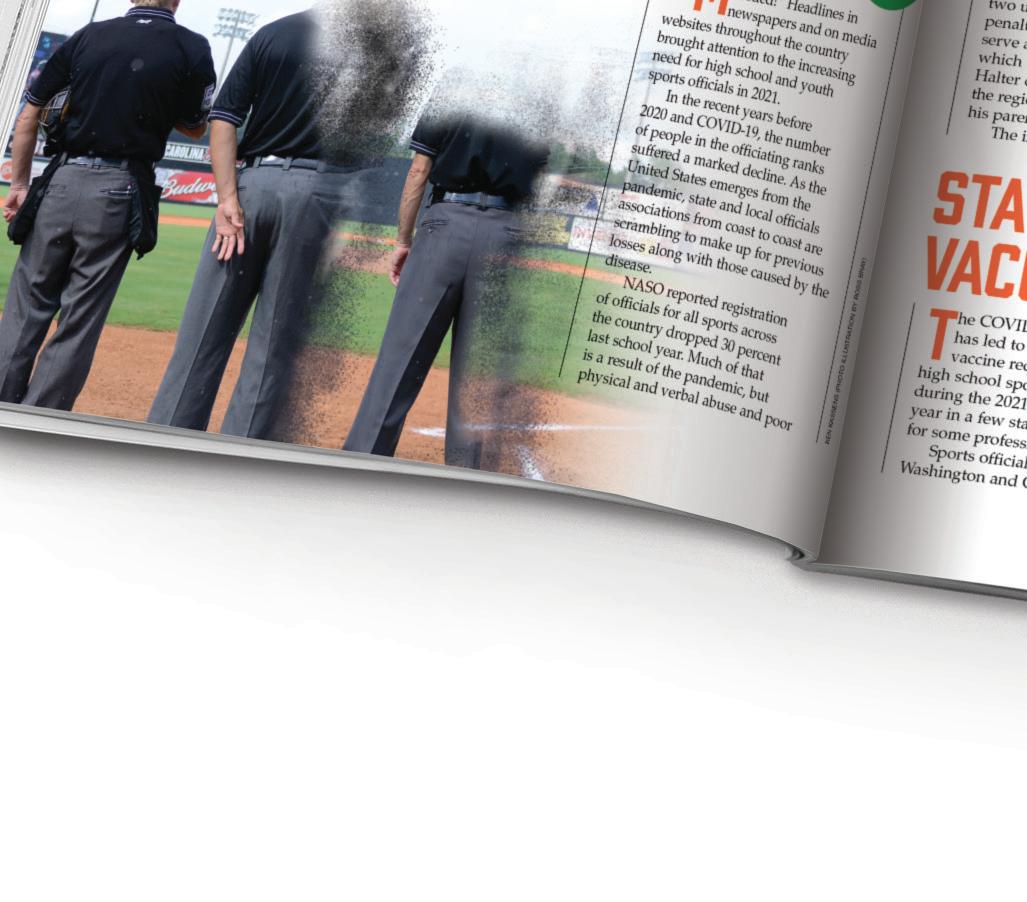


The shortage is not only affecting officials, but also schools and games. People have been taking notice over the last two years now that they’re having to cancel varsity games or move sporting events to days on which they never had to play
before. It’s significant the amount of national media attention the shortage has received. The absence of officials is a major topic in newspapers and on media websites across the country. The press, local, state and national organizations and leagues are drawing attention to the issue and working to solve it.
The NFHS hosted its firstever Officials Consortium from April 12-14 in Indianapolis to discuss officials’ recruitment and retention. NASO covered the topic at its Denver Summit in August. In addition, NASO sent its “Say Yes to Officiating” PSA/commercial to hundreds of organizations and has customized the video more than 50 times. Other organizations have supported officials by waiving officiating registration fees, increasing game fees and cracking down on unsporting behavior and abuse.



Several major assaults of sports officials made headlines this year, bringing attention to increasing safety concerns for officials.
• Softball umpire Kristi Moore was punched by Kiara Nichelle Thomasof Laurel, Miss., following an April 10 game involving 12-year-olds. Moore suffered a contusion and nerve damage in her eye. Thomas, charged with assault, pleaded guilty and received a fine, 30-day jail time suspended and a no-contact order.

• Referee Sidney Freeman suffered a gash to the head that required stitches when he was attacked by players and spectators following an April 3 eighth-grade basketball game in DeKalb County, Ga


•Umpire Sam Phelps of Denton, Texas, was pushed to the ground by Robbie Johnson, coach of the 10U Texas Phenoms, after the coach was ejected from an April 10 baseball game. Video showed the umpire on the ground for several minutes.
• Basketball referee Perry Woodward of Las Vegas was attacked after a May 17 rec

basketball game. The coach involved, his wife and their teenage son confronted another official, Shawn Rowe, in the parking lot. When Woodward stepped in to assist, he was sucker punched in the head and then his face. He was treated for a concussion, bleeding on the brain, five fractured teeth, neck bruising and an ankle fracture, and needed sutures on his chin and forehead. The coach was charged with battery and the wife and son face misdemeanors.
• James Neely, a 72-yearold umpire from Middlesex Borough, N.J., was attacked by New York Prospects coach Jerry Otero, 40, while umpiring a 13U amateur baseball tournament on June 4. Neely suffered fractures to his jaw and a concussion. Otero faces third-degree aggravated assault and fourthdegree assault charges
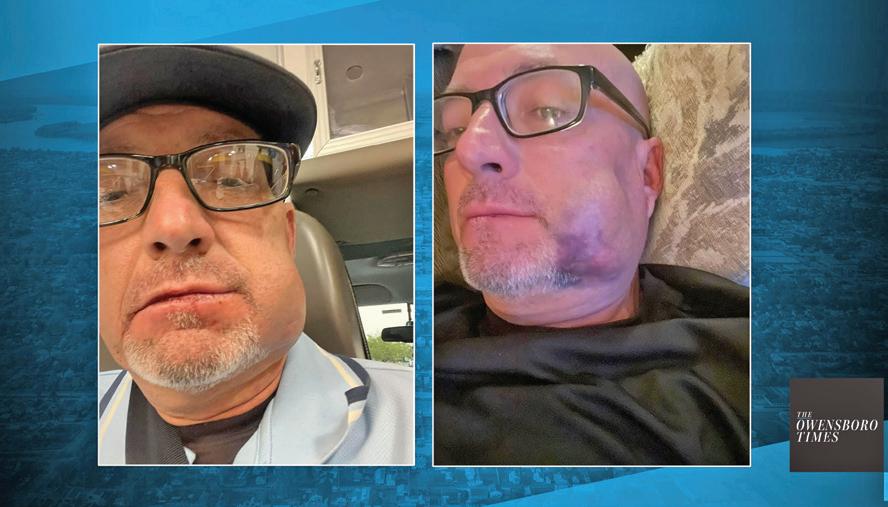
• Umpire Craig Crawford was struck by Glendle Cain of Owensboro, Ky., during a Sept. 15 Little League baseball game for 6- to 8-year-old players. Cain, who faces charges of assault of a sports official and intoxication, punched the umpire in the face, knocking him to the ground.
Art McNally, considered “The Father of Modern Officiating” in the NFL, made history Aug. 6 by becoming the first onfield official inducted into the Pro Football Hall of Fame in Canton, Ohio. McNally’s bronze bust was unveiled by his grandchildren, Shannon and Connor O’Hara.

The 97-year-old McNally, who watched the ceremonies
at home, was inducted in the contributor category and spoke via a brief prerecorded video. McNally spent nine years as a field judge and referee before joining the league office in 1968 to oversee the officiating department. During his tenure, he brought technology to NFL officiating, including introducing a film study program and instant replay.
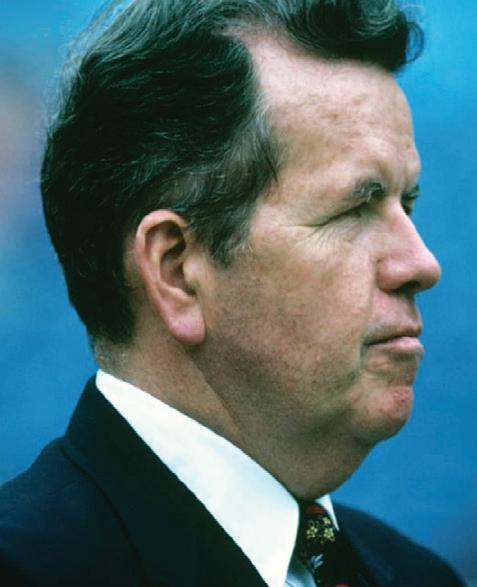
In August, MLB announced a monumental change in the hiring process for umpires looking to pursue a career in professional baseball. The new path takes away the “pay-to-play” model and replaces it with one that is no cost to participants.
Instead of paying to attend the Minor League Baseball (MiLB) Umpire Training Academy or the Wendelstedt Umpire School, umpire candidates now may attend a free, one-day camp held throughout the country. Select candidates from those one-day clinics will then be chosen to attend MLB’s Umpire Prospect Development Camp, which will be held at the Jackie Robinson Training Complex in Vero Beach, Fla. Travel, meals and board are all included in the fourweek development camp and graduates of that camp will be placed in various levels of Minor League Baseball to begin their careers. January 2023 will be the first time for the new camp. Dusty Dellinger, who previously led the MiLB Umpire Training Academy, and Rich Rieker, MLB director of umpire development, will oversee the new four-week development camp.
National and state organizations supported officials in 2022 by taking different approaches to crack down on those who abuse them.
The Texas Association of Sports Officials (TASO) announced a policy in July that could lead to no longer assigning officials to schools that demonstrate a repeated culture of abuse. If a school fails to address the issue, or its plan does not control the unruly behavior, TASO may withhold assigning officials to the school’s home games until the issues are addressed.
The Oklahoma Secondary School Activities Association enacted a policy in August intended to create accountability for fans, players and coaches who verbally or physically harass or assault officials, coaches or
other players. Two incidents of “egregious” unsporting behavior can lead to a suspension for the season.
The Utah Youth Soccer League announced in early May it would enforce a zerotolerance policy for any abuse of referees. Any coach, player or spectator who berates, harasses or threatens an official risks forfeiting the game and losing spectators for the season.
In addition, organizations cut ties with those who assaulted officials. For example, the U.S. Premier Hockey League banned Paul Halloran, a junior hockey player for the South Shore Kings of Foxborough, Mass., for life for violently punching a referee during a February game. At an April 25 hearing, the University Interscholastic League in Texas banned a freshman soccer player from O.D. Wyatt High School in Fort Worth for the rest of her time in high school for knocking an official to the ground during a March 5 JV match.
Several states approved fee increases for high school officials in 2022.
•The Louisiana High School Athletic Association approved a 2022-23 pay raise for officials on Jan. 27. In addition, pay will increase every two years if it falls below a regional average. Basketball, football, volleyball and wrestling fees increased $10 per game. Soccer increased nearly $10 per match. Baseball and softball increased $4 and $5 a game, respectively.
• In April, the California Interscholastic Federation-
Southern Section approved a new fee structure to pay officials at least $35 per hour for their varsity assignments, with the fee calculated using an estimate of the average time spent working contests. The new pay rates will be incrementally phased in over three school years, starting with the 2022-23 school year.
• The Washington Interscholastic Activities Association and the Washington Officials Association approved in April a game fee increase of $20 per game per official with the increase coming over
three years. The increase was front-loaded with a $15 per-game per-official increase in the 2022-23 school year. In 2023-24, there will be a $2 increase, and in 2024-25, a $3 increase.
• The University Interscholastic League approved a 10-year plan for game fee increases with the Texas Association of Sports Officials on June 14. Game fees for officials will increase by at least $5 starting with the 202324 school year and by $5 every third year through 2031-32.
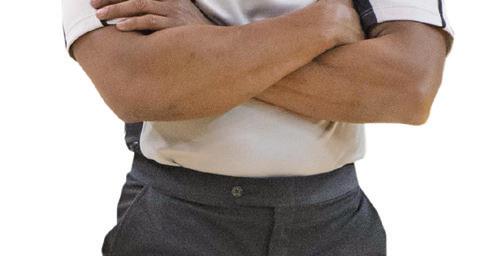
In one of the most severe punishments to be assessed for an assault against a sports official, Keyon Menifield, 43, of Flint, Mich., was sentenced to six years in prison Jan. 12, 2022, for punching basketball referee Kenny Culp, 64 (pictured above). The attack occurred following a disagreement in April 2019 during a 14-andunder youth basketball tournament held at the Paducah Regional Sports Plex in Paducah, Ky.
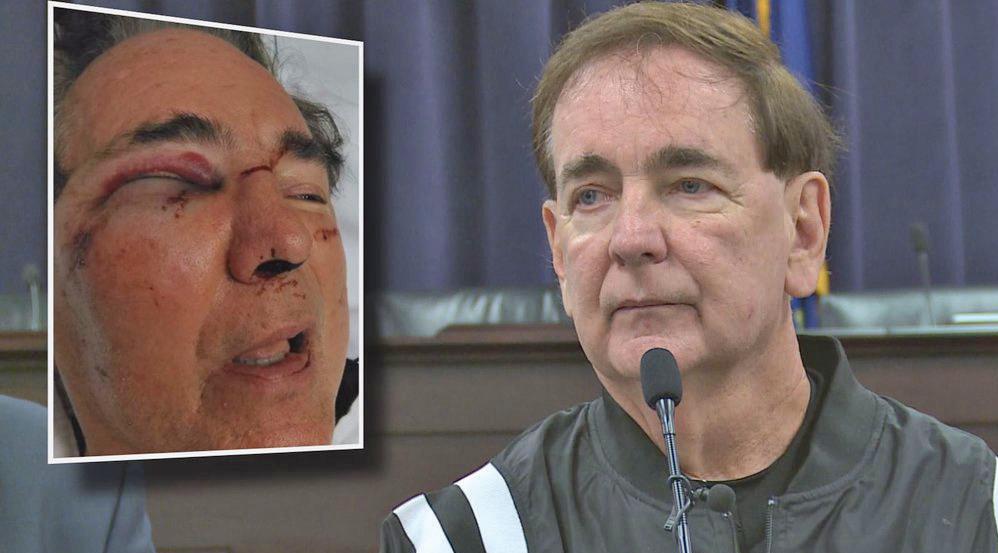
Menifield was coaching one of the teams and struck Culp after the referee turned and walked away from an argument. Culp was knocked unconscious and suffered a broken collarbone, a fractured sinus cavity and brain trauma. He spent nine days at the Vanderbilt University Medical Center in Nashville, Tenn., for treatment.
NBA referee Tony Brown, one of the top officials in the league, lost his fight with pancreatic cancer Oct. 10 after an 18-month battle following his April 2021 diagnosis. He was 55.Brown officiated more than 1,100 games in 20 seasons as an NBA staff official. He worked 35 postseason games and made his NBA Finals debut at the conclusion of the 2019-20 season. A graduate of Clark Atlanta University, a Historically Black College and University (HBCU), he was also a member of the 2021 NBA All-Star Game officiating crew in Atlanta that honored HBCUs. Following his Stage 4 cancer diagnosis, Brown missed the 2021 NBA postseason, but briefly returned to work in the NBA Replay Center during the 2021-22 season





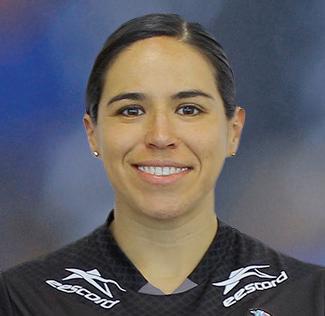


Six women made history when they worked the FIFA World Cup Qatar 2022, held Nov. 21 to Dec. 17.The female officials who worked the international men’s soccer championship were referees Stéphanie Frappart of France, Salima Mukansanga of Rwanda and Yoshimi Yamashita of Japan, and assistant referees Neuza Back of Brazil, Karen Díaz Medina of Mexico and Kathryn Nesbitt of the United States. According to Pierluigi Collina, chairman of the FIFA Referees Committee, the selections were the result of a process that started several years ago with the deployment of female referees at FIFA men’s junior and senior tournaments.

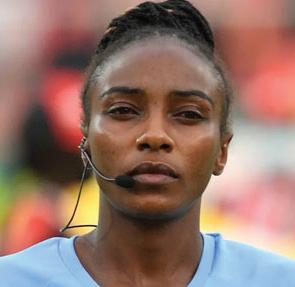
Longtime NBA referees Mark Ayotte, Ken Mauer and Jason Phillips sued the league in the Southern District of New York on Nov. 12, claiming the NBA violated their federal civil rights law as well as human rights laws by rejecting their requests for a religious exemption from taking a COVID-19 vaccine (see “The News” on page 8 for more). They are seeking more than $100,000 in damages for front and back pay as well as compensation for “reputational damages and for emotional pain and suffering.”
In 2021, the NBA and NBRA agreed that referees had to be vaccinated or face a suspension and eventual termination. The




policy permitted referees to request an exemption.
Ayotte, who had 17 years of experience, Mauer, who had 35 years of experience, and Phillips, who was serving in the NBA’s replay center after 19 seasons on the floor, were denied an exemption and suspended from the 2021-22 season. The referees said the league refused to reinstate them despite lifting the vaccine requirement for the 2022-23 season.
Two professional officiating labor unions reached major agreements in 2022.
The National Basketball Referees Association (NBRA) announced Sept. 15 the ratification of a new collective bargaining agreement (CBA) with the NBA. The seven-year agreement began with the 202223 season and runs through the 2028-29 season. The NBRA said the contract addressed salary, travel, pension and marketing rights issues and was ratified by an “overwhelming majority” of NBA referees.The previous CBA was ratified in midAugust 2015 and ran through 2022. That was also a sevenyear agreement.
The Professional Soccer Referees Association (PSRA) announced July 13 it had reached an agreement with the Professional Referee Organization (PRO) regarding the unionization process of the PRO2 officials working in NWSL, USL and MLS NEXT Pro matches. PSRA and PRO agreed to a No Strike/No Lockout agreement that runs through the end of the 2022 season and agreed to begin bargaining immediately for a CBA before the 2023 season. In 2021, NWSL and USL officials had voted, 68-3, in favor of unionizing.

Dallas Cowboys quarterback Dak Prescott was fined $25,000 by the NFL and criticized by the National Basketball Referees Association (NBRA) and NASO for his comments praising fans for throwing garbage in the direction of game officials following the Cowboys’ Jan. 16 Wild Card loss to the San Francisco 49ers. At the postgame press conference, Prescott called the fans’ actions sad when he

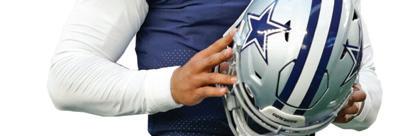


thought they were directed at players, but then changed his stance when the media informed him the trash was thrown toward the officials, stating, “Credit to them then. Credit to them.” In the aftermath, the NBRA and NASO released statements condemning the comments. All NFL officials are members of NASO. Prescott later apologized via Twitter for his postgame comments, and he was fined by the NFL on Jan. 20.

The officiating industry event of the year returned in person in 2022 for the first time since the COVID-19 pandemic hit. After a two-year hiatus, during which the Summit was held virtually, the NASO Summit returned at The Westin Westminster in Colorado from July 31-Aug. 2. With the theme “Make Officiating Count,” the 40th installment of the annual event brought more than 400 officials and officiating leaders from around the world together to celebrate officiating and tackle the critical topics impacting all aspects of the industry.

High school basketball referee William Ripple was found not guilty of misdemeanor assault May 4 by a Muskegon County (Mich.) district judge, stemming from an oncourt incident during a March 19, 2021, game. Muskegon High School head coach Keith Guy alleged that Ripple, 71, grabbed his wrists and used his hands to push Guy away during a discussion. Ripple contended he pushed Guy away in self-defense and only after Guy put his finger on Ripple’s chest and acted aggressively. Ripple is now retired from refereeing basketball. He is still a football official but will not officiate any Muskegon games.
Violence during 2022 matches resulted in the deaths of referees in El Salvador and Canada. Jose Arnaldo Amaya, a 20-year amateur soccer referee in El Salvador, was attacked after showing a second yellow card to a player during a June match at Toluca Stadium in San Salvador. Amaya, 63, received blows that caused internal hemorrhaging and he died at a nearby hospital.
Longtime referee Edwin Farley Alvarado Quintero, 49, of Woodbridge, Ontario, was shot and killed Oct. 9 when he was attempting to break up a scuffle between opposing players at an indoor sports complex. Quintero was not the target of the bullet, which was fired by a spectator.
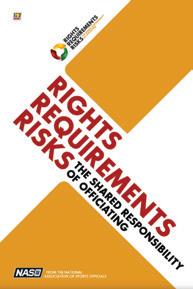

Making officiating count is vital not only to the officiating world, but also to the larger sports world. Better officiating leads to a more enjoyable experience for the participants and ultimately to the overall improvement of the game.

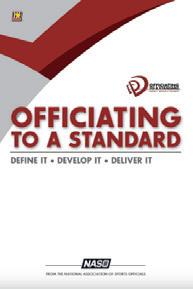








There are a variety of situations that could lead to a conference of the officiating crew in volleyball. Let’s highlight a few situations when a conference could be needed between the first and second referee, with the entire crew and between one of the referees and one of the line judges.
A close play at the net occurs in which a blocker reaches for the ball while the setter is in the action of setting the ball. The referees have to determine the location of the ball,
whether the blocker touched the ball and maybe who touched it first. It is possible both coaches jump up and argue — one wanting reaching over the net and the other wanting a backrow attack or block (if the setter is a back-row player).
If the first referee did not whistle and play continued, he or she may ask the second referee for an opinion at the conclusion of the rally. This could be done by requesting the second referee cross the court or by asking through a headset, if in use.
When communicating, ask direct questions and keep the conversation brief. After any necessary information
has been obtained, the first referee will make the final decision and the second referee will communicate with the coach. If the decision leads to a changed call, the second referee would also want to communicate with the scorekeeper to avoid potential errors.
There is a possible challenge situation here for coaches if they disagree with the decision.

Team A attacks the ball and it lands out of bounds past the opponent’s endline. The first referee does not gather information from
the entire crew before awarding the point to team B. Apparently though, the line judge on the attacking team’s side had signaled touch because a blocker made contact with the ball as it crossed the net — the team A coach saw the line judge make the call and wants a reversal of the decision.
In this case, the first referee has decisions to make. First, he or she can overrule and accept the out call by the other line judge if certain it was not touched. Second, the first referee can change the original call by whistling and awarding the point to team A because he or she is now accepting the touch call by the other line judge. Third, the first referee can call a conference with both line judges and the second referee to determine if whether or not the touch call should be accepted. The caveat to option three is the second referee may not need to cross the court if headsets are in use.
A conference creates the optics of a team trying to get the call correct. That walk to the first referee gives team members time to replay it in their heads and consider their own view of the play. Additionally, we know that sometimes we have a gut feeling, think we see something, or we see the reactions of the teams. A top-level referee will use as much information as possible to assist in the correct team being awarded the point.
There is a possible challenge situation here for coaches if they disagree with the decision.
Team A attacks the ball near the second referee’s antenna. The ball is blocked by team B and the ball lands out of bounds on team A’s side. But the line judge on the second referee’s side signals a touch. The line judge provides no other information and the touch call slowly fades. Maybe the line judge made the wrong signal or is doubting what was seen? Interestingly enough, neither team is reacting they want a touch or they did touch it.
In this scenario, it is important for the referees to gather information before awarding a point and moving on. Here are possible options for
how to conference (or not) and get the call right: 1. The first referee can request that line judge to come to the referee stand to question him or her. There would be no need to ask others over because this particular official saw something that nobody else did. 2. The second referee can move to the line judge and conference at or near the line judge’s position to ask what was seen. This makes the entire process much quicker, and if headsets are in use, information can be immediately relayed to the first referee. 3. The referees can discuss the play through the headset and make a decision, either ignoring the signal or overruling the line judge.
Of course, I would encourage option two as it doesn’t delay the match and it allows the referees to gather important information, eventually resulting in the correct team winning the rally.
There is a possible challenge situation here for coaches if they disagree with the decision.
It is important for us to use conferencing when needed during a volleyball match. In almost every other sport, we see the officiating team come together and share information. If we are attempting to “get it right” and display fairness to both teams, let’s use all of our resources. However let me add a word of caution. Over-conferencing could be perceived as a lack of rules knowledge, insecurity due to an overdependence on others or a lack of control of the match — none of which is a good perception.
Here is something to take away — whistle, slow down your decision, make eye contact with line judges, center with your partner and gather as much information as possible. Put these steps together (much faster in real time) to look more confident and competent in your decision-making. But when a situation arises that may require more time, take advantage of your ability to conference.
Bill Thornburgh, Shelbyville, Ky., is a National USAV and PAVO referee, as well as a FIVB International referee. He works in the Big Ten, Atlantic Coast, Southeastern and other D-I conferences around the Midwest. *


Are you tired of getting to your match and the game balls are either flat or hard as a rock? Then the Molten Digital Air Pressure Gauge and Ball Pump is perfect for you. Take the guessing game out of measuring the air pressure in game balls. The gauge has a builtin pump and is lightweight, measures psi in .05 increments, includes a lithium battery and includes a protective case, lubricating solution and two needles. The gauge sells for $72 and can be found at your favorite volleyball officiating retailer.
While earplugs are not required equipment, more officials are starting to wear them, especially in large tournaments where there are multiple whistles and crowd noise coming into play. Protecting your hearing can be as inexpensive and simple as silicon earplugs from the drug store or as expensive as having custom earplugs made by a specialist. Choose the option that is right for you.
Utah and Minnesota voted to sponsor boys’ volleyball starting with the 2023-24 school year.
The Utah High School Activities Association voted to sanction boys’ volleyball and it becomes the fifth sport the state has sponsored since the 2016-17 school year. In December, the Minnesota State High School League voted to allow boys’ volleyball as an emerging sport in 2023-24 and allow it to become a fully sanctioned sport for the 2024-25 season.
In each of the following, you are given a situation and possible answer(s). You are to decide which answer(s) are correct for NFHS, NCAA or USAV rules, which might vary Solutions: p. 85
1. For the prematch conference and coin toss, how does the first referee indicate to the teams the prematch conference is ready to begin?
a. The first referee approaches each team’s bench to notify the team captain and coach (or representative/ NCAA) to attend the prematch conference.
b. The first referee blows the whistle and raises one of the hands and shows a “C” with the fingers to indicate the captain and team representatives should approach.
c. The first referee double-whistles and raises a coin in the air to notify both teams the prematch conference is ready to begin.
2. A1 attempts to save a teammate’s errant pass by using an open hand to reach for the ball. Upon contact, the hand is positioned under the ball, palm facing up. In which case is that underhand contact illegal?
a. All underhand contacts with the ball are considered illegal.
b. It is considered an illegal contact only if the ball spins off the hand/ fingers during that action.
c. Provided the ball is not caught/ thrown (USAV/NCAA) and there is no prolonged contact (NFHS), no fault has occurred, and play should continue. The player’s unusual technique or body position should not be used to judge the legality of the contact.

d. Provided the ball only contacts the fingertips and not the palm of the hand, that contact is legal.
3. Three substitutes approach the substitution zone, and the second referee whistles to recognize the substitution request when the first substitute enters the zone. After authorizing the first substitute to enter the court, the second substitute enters the zone. After releasing the second substitute, the third substitute returns to the team bench.

a. No action is necessary provided there has been no further delay to the resumption of play.
b. The third substitute approached the substitution zone with the other two and is required to complete the third substitution, otherwise an unnecessary delay/delay sanction is assessed.
The hardest rule in volleyball to adjudicate properly is alignments. Referees must know where 12 players are at all times. Throw in substitutes and liberos, not to mention those players all rotate on every sideout, and it is a mathematical equation just waiting for disaster.

For referees who grew up playing the sport or who coached at some point, it is a little easier than for those who did not. And those who have a mathematical mind tend to better understand the rule as well. It is important to understand alignments and rotations because referees must know which players are in the front and back row, when the libero can legally be on the court, if there is an illegal server and if a team is lined up incorrectly.
So how do referees figure out alignments and stay on top of where everyone should be during a match?
The most important person to identify is the setter. If a team happens to run a 6-2 instead of a 5-1, it is important to know both setters. A team may opt to run a 6-2 instead of the traditional 5-1 because it allows for a back-row setter at all times and for three front-row hitters at all times. In a traditional 5-1, the setter will be in the front row for three rotations and only allows for two front-row hitters.
The best advice to offer is watch each team warm up before the match. This will allow you to quickly assess which players may set during the match. During warmups, come up with an identifying feature for each setter (hair color or hairstyle, shoe color, or best yet, uniform number if not wearing a pullover over it pregame).
Once you know who the setters are, look at the lineups when each coach turns them in. Quickly identify where each setter is starting the set. Usually, but not always, the team will have the setter start rightfront or right-back. Generally, setters are trying to get to the right-front part of the net to receive passes. In a traditional 5-1 setup, coaches like to have their setter start setting so she starts in the back row and allows for three front-row hitters to start the match. If the team is receiving first, a lot of time coaches will start the setter in the right-front position so she rotates back to serve on the first rotation.
In a 6-2 setup, the two setters are opposite each other so one of them is always front row and the other is back row. This makes it easy to know each one’s opposite. You should be able to quickly identify if the setter is front or back row before authorizing service and say to yourself the setter for each team is front row or back row.
Generally, the setter is responsible for the vast majority of illegal backrow blocks and attacks. The majority of these faults occur when the setter tries to save an errant pass near the net while in the back row and accidentally sets the ball over the net or ends up getting hit by an attack while above the height of the net. This is why it is so important to know the setter and the setter’s opposite at a minimum. More advanced officials will know where all 12 players are much quicker than new officials.
The key to knowing the alignment for each team is figuring out a system to easily identify the rotation. Take a look at the PlayPic for a sample lineup. In this lineup, figuring out
the rotation is easy as the player’s numbers go up by two. You also can see 6 and 12 are opposite and 6 is half of 12. That makes it easy to remember those opposites. When a match starts, you should already know the setter and her opposite. Then try to quickly fill in the rest of the gaps as the match goes along. If a team is using a libero, you always know the libero is in the back row. So, if you know the setter, the setter’s opposite and the libero’s position, you are halfway there before a serve is ever authorized.
In general, the same substitutes go in and out for the same players. The same is also true for libero transitions. After you go through each team once, you should get familiar with the substitutions and libero replacements. You should be able to quickly identify when the libero is in the left-back position. Once that libero is forced to rotate, the libero either has to come off the floor or switch to the service position if she hasn’t served already in a different position. The libero can never rotate to the front row so you should be able to quickly identify when she is going to come off the floor or go back on.
Before each serve, the first referee should visualize or even say the numbers of the three front-row players on each side of the net. If using a headset, the first and second referee can remind each other of the front-row

Prior to each serve, referees must ensure players are in their proper positions. While teams get more and more creative with how they stack players, it is imperative referees know which players are front and back row and if all players are in the proper alignment before authorizing service. Joe Cullumber, Milleville, Utah
players. The second referee should keep a running log as well in order to give discreet signals to the first referee if there is an illegal back-row block or attack. Second referees can always take a peek at the lineup sheets during dead balls if there is doubt in a lineup.
One of the more difficult calls during a match is an illegal backrow attack by a setter. This is especially true when setters are very tall or very short. It forces the first referee to focus hard on whether the ball is completely above the height of the net when the back-row setter makes contact.
The nice thing about this call is the size of the setter really doesn’t matter. All three codes are in agreement on what constitutes an illegal back-
row attack. The only stipulation is a back-row player, on or in front of the attack line, cannot contact the ball completely above the height of the net and complete an attack (NFHS 9-5-4; NCAA 14.5.4.1; USAV 13.2.3).
However, judging the height of the ball at the net is easier said than done. Depending on the height of the setter, the optics of it all can throw off the first referee. Take, for example, a team that has a shorter setter, as in PlayPic A on
Many teams will run stacks during serve receive in order to hide the setter to make sure the setter does not have to make the first contact. Teams will also try to hide their weaker passers and allow the better defensive players the opportunity to make the first play on the ball in order to run an effective offense. When teams do this, players are often in close proximity. As long as the players are close, let it go. If a team is gaining an advantage (for example, a back-row setter is leaving her spot and overlapping her frontrow counterpart well before the serve so she can get to the net), whistle the fault. If the timing is close or a player is just out of alignment, a quick conversation with the captain or coach can quickly fix this as well.
These are just some of the tools officials use to keep matches on track and figure out the location of all players. It can be exhausting and those who don’t officiate the sport don’t understand how mentally draining a match can be, especially a five-setter when both coaches use all their subs.
Use some of these tools in your next match and talk to veteran referees if you are having trouble figuring out alignments. When the light bulb goes on, it will click and will make you feel much more confident as a referee.
Brad Tittrington is an associate editor for Referee. He referees college and high school volleyball, umpires D-I softball and officiates women’s college and high school basketball and high school football. *
the next page. The setter can jump and fully extend her arms and still not be at the top of the net. However, because she is jumping, it may give the illusion she is higher. Because of this, a first referee may accidentally whistle the setter for an illegal back-row attack if she sends the ball over the net, despite the fact she never contacted the ball above the height of the net.
Conversely, a tall setter (as in PlayPic B, next page) may not have to
Play: Team A’s libero has not served in the current set. She enters the court from the bench and prepares to serve. After the first referee authorizes service, the libero realizes this is not the rotation where she intended to serve. The libero does not serve; after the maximum time allowed for service (five or eight seconds), the first referee whistles and signals illegal service. The referee informs the coach the libero is considered to have served in that position, and may not serve in another position in this set. Ruling: Correct procedure. Service delay is one of several faults listed as an illegal service (NFHS 8-2-5c; NCAA 13.2.2; USAV 12.4.4, 12.6.1.2). When any of those faults occur, a loss of rally is recorded for the serving team and the player in the service position is considered to have served. Therefore, the libero may not serve in another position in this set.
Play: A fan in the bleachers becomes unruly and begins yelling at the visiting team while the ball is in play. The first referee stops the match with an official’s timeout, orders a replay, sends both teams to their respective benches and has the second referee contact the proper person in charge to address the issue. Ruling: The first referee’s decision is correct. The first referee has the authority to suspend the match until the spectator issue is addressed. The teams cannot be penalized for spectator conduct (NFHS 12-3; NCAA pg. 76; USAV 17.2).
Play: A1 is a front-row blocker. During play, setter B2 goes up to set a ball that is passed close to the net. A1 reaches across the net and does not contact the ball but touches B2’s hand after the ball is set. The first referee does not blow the whistle and play continues. Ruling: In all codes, correct procedure. If there is no interference on the play, play continues (NFHS 9.6.3; NCAA 15.1.3.3, 15.2.3; USAV 11.4.1).

leave the ground and can extend her arms and be above the top of the net. The back-row setter may stretch her arms, set the ball and send it over the net. However, because she is standing on the court and never jumps, it may give the impression she has legally contacted the ball below the height of the net.
Referees can pay attention to setters during pregame warmups. Some referees like to walk behind the endlines and watch the setters to get a feel for what the setters will do during the match. If a team has a particularly short setter, it can give the referee the opportunity to see if the setter jump sets or stays on the ground. If the setter prefers to jump set, it can give the first referee an opportunity to see where she generally contacts the ball (above or below the net) and whether it may be an issue during the match.
The same goes for tall setters. A referee can get a sense of how the setter likes to set the ball and if, when her arms are outstretched, she is above the net when making contact with the ball. This warmup can help give the referee a sense of the height of the setters, the style of play the setter likes and the speed at which the setters move. This doesn’t mean the setter will do exactly


the same thing under game situations as in warmups, but it will give the first referee at least a reference point.

There are different things that help the first refere determine potential back-row faults. First, focus on the hands as the setter sets the ball. If the hands are completely above the height of the net at contact, then the ball has to be completely above the height of the net as well. The opposite is also true; if the hands are completely below the height of the net during contact, the ball has to be below as well. If in doubt, the set is legal.




Second, use your partner. If you have doubt about a setter, have a conversation over the headset, if you are wearing one. If not, during a timeout or between sets, ask your partner for an opinion.




The most important thing is to never guess a fault. Be 100 percent sure the ball is completely above the height of the net on contact. Once the setter contacts it, make a decision if the contact is above or below the height of the net. If below, no issues. If above, wait and see what happens to the ball after contact. If it ends in a completed attack, then you have an illegal backrow attack. Whistle and award a point to the opponent. * B A

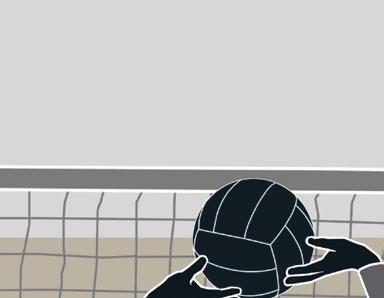
























How much money have you earned as an official this year?
Whatever the amount, you’ll want to make sure you have all of your officiating deductions lined up before you file your taxes.
Officiating-related expenses such as your uniform, travel expenses and professional dues and subscriptions are a few of the many deductions you’re entitled to.
If you’re not keeping track of your potential officiating-related deductions with the same diligence as you track your officiating game checks, you’re likely passing up money that is rightfully yours.
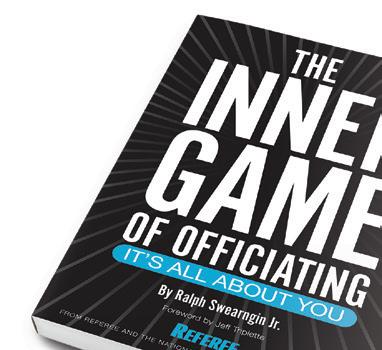
Exclusively for NASO members we have prepared a special digital booklet titled Sports Officials Tax Guide, which has been completely updated for 2022 tax year, that is full of all the information any official would ever need in regard to taxes. The digital book is being e-mailed absolutely free to the more than 25,000 NASO members who have provided us with their email address and have opted in to receive email communications. (If you are an NASO member and












you’re not currently receiving NASO communications, please drop us a line at LockerRoom@ naso.org and request to be added.)
The Tax Guide includes sections on understanding the tax rules when it comes to independent contractor officiating work and sections on income, expenses and frequently asked questions. Sample tax forms and a handy game log are also included in the 32-page booklet.

WE’RE ALL IN THIS TOGETHER!
THESE ORGANIZATIONS SUPPORT OFFICIALS
If
you’re not already a member, now is a great time to join before the April tax deadline. In fact, you could save up to $36 from your NASO membership alone depending on your tax bracket and your state’s laws.
Of course, tax laws differ from state to state, and change regularly, so the information is intended to serve as a general guide. You should contact a professional for advice pertinent to your particular situation.
The Internal Revenue Service takes a critical look at the income tax filings made by sports officials — professional and amateur — and NASO is here to help you prepare for those situations.







It’s time to join the rest of us in the National Association of Sports Officials. Not only will you continue to receive the world’s #1 officiating publication, you’ll enjoy all of the additional benefits NASO members enjoy.

Go to naso.org/upgrade2023 to join NASO for the special introductory price of $114 and receive these two FREE books!

As I’ve grown over the years, I actually look back at early times in my career and laugh. Many times, when enforcing rules, “winning” discussions and when the inevitable ejection occurred, I simply got louder. Today, that is no longer the case. Yes, there are times when we need to be
loud. There are times when we have to be that umpire and enforce something no one likes to, or for that matter, wants to.
Those times are few and far between, but a notable example of being quietly big is checking rosin bags to begin the game. A quick check of the bag prior to the inning starting lets us know it is legal, and if
It is important for umpires to convey confidence while on the field. Body language goes much farther than being boisterous to show that confidence.

Reggie Johnson, Tacoma, Wash.
we determine an illegal substance is being used it’s a quick and easy fix to remove at that time. Often, I’ll have
pitchers bring them to me and have me check them on their way to the circle. Unfortunately, there has been a time or two when the pitcher, the coach or the parent in the stands doesn’t understand the rule. Those are the times when we just have to be big and remove the foreign substance.
What exactly does being quietly big mean? I’m grateful for the recent change in the NFHS jewelry rule, but we have had to enforce players not wearing jewelry for years. A few years ago, I began asking the coach to identify the team leader. I will go to that player and simply ask her to check her team for jewelry so we do not have to address it during the game. I’ve never had a player tell me no, and usually they look forward to it. I actually had a player at the collegiate level (I had called many of her high school games) come up to me and smile, tug on her earring and say, “I can wear them here!”
Being quietly big has a lot to do with being aware of the game. Understand when a pitcher or catcher, while batting, has safely achieved a base and glance to the coach to see if time will be requested for a courtesy runner or pinch runner. A simple look of acknowledgement can keep the coach from having to holler to request time. It’s a small thing, but how often have we seen a coach have to request multiple times due to the umpire failing to even realize the coach is trying to get his or her attention?
Awareness of the game also helps us when a conference may be about to happen. When the pitcher has walked a couple of batters, chances are the coach may want a conference. We often see an umpire take out the plate brush and start cleaning the plate while the coach is exasperatedly trying to get said umpire’s attention.
Being comfortable making changes on your lineup card, having an indicator you are not constantly looking at and using ball bags that will hold your gear so you aren’t fighting with them are all small things that can not only make us more proficient, they also help ensure we aren’t drawing unnecessary attention to ourselves. Nothing is more irritating to a fan base on a time limit than seeing umpires
struggle to find a pen, dig around and take what they deem to be forever when writing down a conference or a lineup change.
Sometimes a coach approaches even when you’re doing everything right. You’ve got a great game going, game aware, great positioning and you just nailed a perfect call. But sure enough, here comes the coach and he’s not happy. A good friend and I discussed this response, and I’ve actually used it a time or two: “Hey coach, did you have a substitution for me?”
The misdirect with the question can at times cause him to forget why he’s even out there. It may not be the best approach to take, but is most definitely a far better approach than loudly stating, “That’s a judgment call, coach! Get back to your dugout!”
It is also a better approach than “appeasing” the coach by going to your partner every time the coach disagrees with you.
When we have enforcement of a rule that only happens once in a blue moon, that’s the time to find that team leader. “Hey catcher, can you help me speed up your team between innings?” goes a lot farther than hollering out to the coach to hurry up between innings. The catcher will often even take it to heart and it becomes her responsibility to hustle her team up. Building a solid working relationship is vital. While we don’t want to ever make it a full-on conversation with players, sometimes a few words get their attention and will allow us to fix small issues. “Hey, 21, can you make sure coach remembers to keep the bucket in the dugout?” Again, small things that, when taken care of quietly and collectively, become big.
Let’s not forget the ejection. Occasionally, we do have to remove a player or disqualify a coach from continuing to participate in the game. It is at this point we have two options. We can calmly address it with a coach. Let them be the purveyor of bad news to the player. I had one last year when a catcher did not like the strike zone. She turned to me and dropped a not-so-nice four-letter word on a ball

See “Quietly Big” p.47


Umpires should draw as little attention to themselves as possible. It helps to avoid being a walking billboard. Use a Sharpie or black spray paint to black out any company logos on your mask and buy all-black shoes.
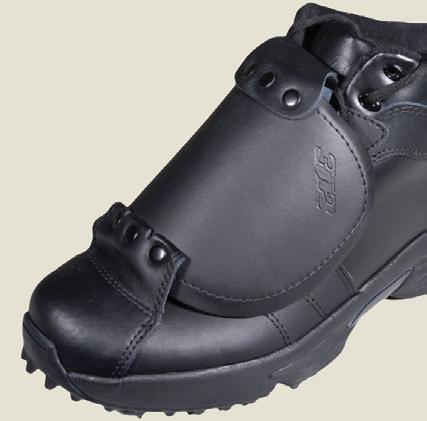


No matter how many games you have worked, there is still something to learn. The Stuff Nobody Told You shares information you may not necessarily find in the rulebook or umpire manual but that you definitely need to know to polish your game and present a professional image. The guide sells for $3.95 digitally, $5.95 in print or $7.95 for the combo and can be found at store.referee. com.

“The slight difference between them is an appellate judge gets to sit back and think, evaluate, assess, and can take time to make a decision. An umpire has to see what happens on the field, react to it on the field, and make an immediate pronouncement. We’re expected to be perfect on day one and only get better each game afterward.”
–University of New Haven professor Brian A. Marks, who has also been a softball umpire for nearly 50 years, describing the difference between judges and umpires.

Each of the following includes a situation and possible answer(s). Decide which are correct for USA, NFHS, NCAA or USSSA rules and which might vary. Solutions: p. 85

1. At the pregame conference, the home head coach presents a lineup card with the DP listed in the fourth spot in the batting order and the pitcher listed in the Flex position. After the cards have been exchanged and verified, the home head coach announces the DP is going to pitch.
a. Legal. The team drops to nine players.
b. Legal. The team drops to nine players and a substitution is charged to the player in the Flex position.
c. Legal. The home team loses the right to use the DP/Flex option for the remainder of the game.


d. Illegal. Once accepted by the plate umpire, no changes may be made to the lineups until a pitch is thrown, unless there is an injury.



e. Illegal. The player listed as the pitcher on the lineup card verified by the plate umpire must throw to at least one batter.

2. With R1 on first and one out, B3 hits a ground ball sharply to right field. R1 touches second and tries to advance to third base. F9 charges the ball, picks it up and throws to third base. The throw hits R1 in the back of the helmet. The ball ricochets off R1’s helmet and rolls out of play. At the time of the throw, B1 had not yet reached first base and B1 was between first and second when the ball rolled out of play.

a. R1 is ruled out for interference and B1 is awarded first base.
b. R1 is awarded third base and B1 is awarded second base.
c. R1 is awarded home and B1 is awarded second base.
d. R1 is awarded home and B1 is awarded first base.
3. B1 hits a ball off the plate that bounces high into the air. B1 drops the bat next to the plate, in fair territory, and starts running toward first. F2 allows the ball to drop to the ground, where it strikes B1’s bat, now lying motionless in fair territory. The ball then rolls into foul territory, where F2 picks it up and fires it to F3 standing on the bag. F3 catches the ball just before B1 reaches the base.
a. The ball is dead and B1 is out.
b. The ball remains live and B1 is ruled out at first base.
c. The ball is ruled foul once F2 touches it in foul territory and B1 returns to bat with a strike added to the count.
While it would be ideal to always umpire in fully enclosed stadiums with fully enclosed dugouts, those opportunities are few and far between. Most high schools, parks and even college facilities utilize out-of-play lines and feature dugouts with multiple openings. When working in these facilities, it is important to understand the rules surrounding catch-and-carry situations. Even if you are working in a pristine, state-of-the-art stadium, there are still opportunities to have catch-and-carry situations. Here are some tips to nailing these situations when they arise.
Three of the four codes agree on what constitutes a catch-and-carry situation. In NFHS, NCAA and USA Softball, it is easy to remember a fielder is considered out of play the moment an entire foot makes contact with dead-ball territory or the fielder falls into dead-ball territory (NFHS 5-1-1i; NCAA 9.4 Notes; USA Softball

1-Catch/No Catch). As long as a fielder’s feet are in contact with liveball territory, including the out-ofplay line, or a foot is in the air, the fielder has not left live-ball territory. As soon as an entire foot is in contact with dead-ball territory, the ball is now dead and an award must be given. In USSSA, both feet must leave live-ball territory or the fielder must fall into dead-ball territory in order to have a dead ball (USSSA 10-1i).
All codes agree runners are awarded one base from the last base legally touched at the moment the fielder enters dead-ball territory. There are two exceptions to this rule. The first is if the ball is a legally caught fly ball, the batter is out and is not awarded any bases. The second exception is if the fielder intentionally carries the ball into dead-ball territory. In that case all runners are awarded two bases (NFHS 8-4-3i; NCAA 9.4 Eff.; USA Softball 8-5k Eff.; USSSA 10-1i Note).
See “Catch and Carry” p.48
four with the bases loaded. I waited until the run scored, called time and approached her coach. I said, “Coach, I’m removing your catcher for use of profanity toward an official. I need a replacement player please.” He looked at me a bit shocked, asked what she said and I told him. He turned to the bench, pointed at another player and told her to gear up. Then he went to his catcher and informed her she was no longer allowed to participate. I’m not saying it was the best way or the only way. I’m saying I quietly took care of business in a big way. We cannot allow the players to dictate behavior like that.

I learn as much as I can from each umpire I work with, and I’ve used quite a bit of it over the last several seasons. A couple of seasons ago I was working a game together with someone I’d never worked. It was at a preseason tournament using threeperson mechanics, and we pregamed








for several minutes beforehand. This game sticks out because we had two pretty good teams, three pretty decent umpires and good weather conditions. In all likelihood, this was a game that would take care of itself. Lo and behold, during the middle innings, one of the specific things we went over happened. U1 chased a ball to the outfield, I as U3 came across the diamond and the plate umpire came up the line. We had an attempted diving catch in right field, a throw to first base and it was a banger of a play.
I was probably as pumped up as the team was as the plate umpire rang up the out on the appeal at first


base for leaving early. Why? Because the three of us had talked about this situation, it had occurred and all three of us were doing exactly what we were supposed to do. Perfectly executed by the third team on the field. And what could the first-base coach say? We were all quietly big. Ray Burwell, Pea Ridge, Ark., is an NCAA D-I umpire. He has worked multiple state high school championships as well as multiple USSSA national championships. He serves as a UIC for USSSA Nationals. He is the co-founder and coordinator of the NWA Umpire Academy and is a contributor to the book Umpire Mentors *

Play: In the bottom of the seventh inning with a tie score, B2 comes to bat with the winning run (R2) on second base. The defensive coach holds a charged conference with the pitcher to discuss strategy. On the first pitch, the ball gets by the catcher and R2 advances to third. The defensive coach requests to have another conference at the pitcher’s circle. Ruling: In NFHS, USA Softball and USSSA, it is legal, provided the defensive team still has remaining defensive conferences (NFHS 3-7-1; USA Softball 5-7b; USSSA 4-8a). In NCAA, it is not permissible to hold two defensive conferences between a team representative and a player in the same halfinning, unless there is a pitching change. The umpire should not allow the conference to take place and if it does, the team representative shall be ejected, but there is no penalty to the pitcher (6.12.7.1 and Eff.).
Batter Leaves Ready Position
Play: As F1 releases the pitch, B1 steps completely out of the batter’s box. Ruling: In NFHS and USSSA, the umpire will call a strike regardless of the location of the pitch (NFHS 7-3-1 Eff. 2, 7.3.1B; USSSA 7.8 Pen.). In NCAA and USA Softball, the umpire will call the pitch a ball or strike according to the actual location of the pitch (NCAA 11.2.2 Eff.; USA Softball 7-3f Eff. 2).
Play: With R1 on first and one out, B3 hits a fly ball to center field that’s caught by F8. R1, nearly halfway to second, must return to first base. F8’s throw is offline, but F3 catches the ball in her glove and, while falling toward first, tags the base with her throwing hand just before R1 slides into first. Ruling: R1 is out in all codes. On a force out at a base, a fielder possessing the ball just needs to make contact with the base to record an out. However, a runner off base must be tagged by the ball or by the fielder’s glove with the ball inside the glove (NFHS 8-6-3; NCAA 12.9.1.1.2; USA Softball 8-7c; USSSA 8-18m).
continued from p.46
There are a couple of areas where this rule can get tricky. One is dealing with collapsible fences. NFHS, NCAA and USSSA rules do not allow a player to stand on a fence that has fallen over and is lying on the ground beyond its original plane (NFHS 2-94; NCAA 9.3.7; USSSA 3-Catch). In USA Softball, as long as the player is still in contact with the fence and the player is not touching anything beyond the fence, it is legal to stand on said fence and make a catch (R/S 20).
In all codes, a player may jump in the air, catch a ball and then land in dead-ball territory. This includes going over or through a fence. In these instances, the ball is legally caught and the batter is out. However, once the fielder contacts dead-ball territory, the ball is dead and runners are advanced one base from the last base they legally touched.
It is vitally important to always walk the field prior to a game or tournament. If you are working the same field multiple games or days in a row, it is not necessary to walk the field before each game as playing conditions most likely have not changed from game to game. However, just because you worked a facility earlier in the year does not mean you don’t need to walk that same facility later in the year. With changing weather and facility management, there could be the potential for different holes in a fence, out-of-play lines, etc., you need to understand. Always walk the facility as a crew so you know what you are in for that game. Collapsible fences, out-of-play lines, dugout entrances, fence openings, etc., should all be checked pregame and the crew should talk about what to do in cases of players going over or through those fences, openings or lines.
It is extremely important to discuss ground rules during the
pregame meeting with coaches. When dealing with collapsible fences and dugout openings, it is vital to make sure all umpires and coaches are in agreement on what is considered live-ball and dead-ball territory. This way, you can be consistent when ruling on potential catch-and-carry situations. Coaches will also relay that information to their players. On fields where there may be stairs that go down to the dugouts, coaches and umpires need to know where live-ball territory ends (are you determining the top step to be in play or out of play?). Remember to take player safety into account when determining the ground rules.
Any time there is a ball near an out-of-play area, an umpire, if available, should provide coverage. In the two-umpire system, and in some limited situations in the threeumpire system, this is not possible. However, if there is a fly ball near a fence or out-of-play area and it is in an umpire’s chase area, that umpire should go. These situations can be extremely difficult for a plate umpire to determine from potentially 200 feet away. There is much more credibility when an umpire chases and can get a better angle and view of the play. The key to getting this call right is making sure you come set and watch the play. If you are moving during the catch, you may miss the feet and whether or not they were in live- or dead-ball territory during and immediately after the catch. Watch the play to conclusion before signaling. Make sure the fielder indeed caught the ball and then focus on the feet to make sure they remain in live-ball territory. It is better to give the dead-ball signal late than rush and accidentally kill the play when the fielder never left live-ball territory.
Catch-and-carry situations happen quite frequently and it is important for all umpires on a crew to be cognizant of them. Any time you work on a field with collapsible fences or multiple out-of-play lines, your antennas should be up. Be ready for them and then confidently rule on them when they happen. *
No matter how many games you’ve worked there’s still STUFF nobody told you. Until now! Referee has collected all the STUFF you need to know to polish your game and present a professional image. Don’t work another game without all this valuable STUFF.







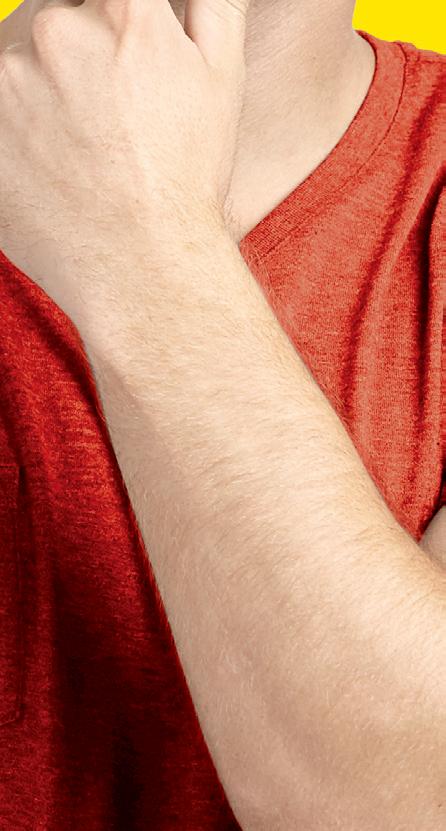











The DP/Flex rule has been around for over two decades. Yet it continues to be one of the most talked about rules and one of the most difficult to understand, especially for new umpires.
In theory, the rule was designed to allow coaches more flexibility with the lineup and get more players involved in the game. However, in practice, it causes a lot of confusion with coaches and umpires alike. This particular article is going to focus on games using nine position players and a DP/Flex. While some codes allow extra hitters, for the sake of simplicity, this article will not explore that avenue. Here are some tips and techniques, followed by some caseplays, to help break down the DP/Flex rule.

Make a list and check it twice. When coaches hand you a lineup card at the pregame conference, double check it. It is rare in today’s game to have a coach not use the DP/Flex. If you notice only nine players listed in the starting lineup, check with the coach to make sure that coach understands the DP/ Flex must be listed to start the game in order to be used in the game. If the coach says there is no DP being used, that is fine, move on. If the coach simply forgot to list the DP/ Flex on the lineup, allow the coach to make a change to the lineup. You have not yet accepted the lineup card and made it official, so there is no penalty for making the change. It is better to double check and make sure during the pregame then to realize an error once the game starts.
Highlight the DP/Flex on the lineup card. The DP and Flex are often referred to as twins. One way to always make sure you know which spots in the lineup are
connected is to highlight the player in the DP position and the Flex position. This way, you can quickly look at your lineup card any time a coach wants to make a change involving those two players and you can make sure the change is legal.
Study the rule yearly. While the DP/Flex rule hasn’t changed much in the past two decades, it is necessary to have a refresher course on the intricacies of the rule before each season. Lineup card management separates the great umpires from the good ones and knowing the DP/Flex rule inside and out is key to being a good lineup card manager.
Know what the twins can and cannot do. In a lot of games, a coach is going to use the DP/Flex similarly to how a baseball coach uses a designated hitter. A coach may have a really good defensive player who simply can’t hit, yet has a really good offensive player who may be lacking in the fielding department. In that case, the coach will have the good hitter bat (DP) and have the defensive player simply play defense and never hit (Flex).
However, this is not always the case. Coaches are being more clever on how they utilize this position and they don’t simply use it as a straight designated hitter. We will break that down more with some caseplays at the end of the article, but let’s focus on what each player can and cannot do.
First, remember that both the DP and Flex are starting players. Both have reentry rights and there are only certain instances when they have officially left the game. The easiest thing to remember about dealing with the two players on offense is they both share a spot in the batting order. Whichever spot the DP is listed in the batting order
handed to the plate umpire during the pregame conference is the only spot the DP and Flex may play offensively. If the Flex plays offense, it may only be for the DP and the DP has left the game and the team has dropped to nine players. The DP may go back in offensively, and then the team is back to 10 players.
On the defensive side, it is a bit more complicated and coaches have more flexibility. Think of each of the 10 positions listed on the lineup card as a defensive position. If the DP goes in to play defense for the Flex, the Flex has left the game and the team has dropped to nine players. The Flex may come back into the game to play defense again and the team can go back to 10 players. Otherwise, those 10 “defensive” positions can be moved about and no player has left the game. If the DP plays defense for someone other than the Flex, that player is still in the game offensively, but is no longer playing defense (known as the OP, offensive player, in NCAA). Some umpires refer to this person as the “temporary DP.” That terminology is technically incorrect and can add some confusion and should be avoided. The Flex is tied to the DP, so if you call someone the temporary DP, it would imply the Flex is tied to that player, which they are not. This is why it is important to know which player is listed as the DP on the lineup card as that position is the DP position for the game, regardless of which player is playing offense only.
Just remember, the DP may never only play defense and the Flex may never only play offense. If the DP is in the game, the DP must be on offense. If the Flex is in the game, the Flex must be playing defense.
Substitutions are allowed for both the DP and Flex. A coach may use any eligible substitute to play

for the DP or Flex. The DP or Flex has now left the game. Provided neither has been substituted for yet, they would be allowed to come back into the game as they have reentry rights. Once the DP or Flex has been removed twice, that player is no longer eligible to play, however other players may continue to substitute in to those positions.
Practice lineup card management. If you are struggling to get a handle on making lineup changes while dealing with the DP/ Flex, create a lineup (as shown in the PlayPic) and come up with scenarios utilizing both of those positions. Then practice making those changes on the lineup card. The rule is one of those you need to see visually to make it easier to understand. And practice makes perfect.
Play 1: At the pregame conference, after the lineups have been exchanged and verified, the home coach tells the plate umpire the DP is going to pitch for the Flex. Ruling 1: Legal. The team will drop to nine players, the Flex has left the game one time and has one reentry remaining.
Play 2: Adams is listed in the first spot in the batting order and is playing second base. Baker is listed in the second spot as the DP. Jones is listed in the Flex position and is pitching. In the third inning, the coach tells the plate umpire Baker is going to play second base. Ruling 2: Legal. In this situation, the team stays at 10 players, Adams becomes offensive only (OP in NCAA) and no substitution has occurred.
Play 3: After making the change to the lineup as in Play 2 above, Adams hits a single. The coach approaches the plate umpire and wishes to have Jones run for Adams. Ruling 3: Illegal. Even though Adams is now offensive only, Adams is not the DP. Adams may only enter the game offensively in Baker’s position.
Play 4: Same lineup scenario as in Play 2. Baker leads off the inning with a single. The coach asks to put Jones in to run for Baker. In the next half inning, after one pitch,
196T.Harris
174S.Able
208E.Thomas
247P.Jones
153C.Alexander 6 222M.Moore 7 25DPA.Cooper 8 75M.Morris 9 39S.Rodgers 10 181T.Brown(FLEX) 11 12 13
Any time a coach makes a change to the lineup that involves the DP/Flex, take your time and make sure the change is legal. An issue with the DP/Flex can lead to anything from an inaccurate lineup card to an illegal player and can cause major headaches. Steven Thompson, Huntington Beach, Calif.
the offensive coach approaches the umpire and says there is an unreported substitute since the opposing coach did not reenter Baker. Ruling 4: No penalty. Jones ran for Baker and Baker is no longer in the game. The coach does not need to reenter Baker unless Baker comes back to bat the next time her spot in the lineup comes up.

The coach can also choose to leave Jones in that spot or enter another substitute. The coach does not have to reenter the DP until the DP bats again.
Brad Tittrington is an associate editor for Referee. He umpires D-I softball and officiates women’s college and high school basketball, college and high school volleyball and high school football. *

 By Jason Franchuk
By Jason Franchuk
Julian Tackett likes to say, “Don’t let process get in the way of progress.”
In this day and age, when camp attendance and various other tedious rites of dues-paying passage are still the norm, the commissioner of the Kentucky High School Athletic Association has made it possible to stop worrying about outdated requirements and start focusing on genuine opportunities for advancement.



“We’ve had second-year officials in some of our state events. Is our staff totally comfortable and sleeping well at night when you put them in there? No,” Tackett said. “Do they generally do as good or better than perhaps the people that were working before? Yes. So sometimes we’ve got to be willing to take a chance. The last thing, and this is really for my state association
brethren because we’ve all got different roles here, leadership is not simply repeating the status quo.”
Tackett went way beyond the status quo last spring, when he introduced a female official to the largest-classification boys’ basketball championship game.

Now, Hannah Reynolds did not come out of nowhere. She’s been an official for 10 years. The Kentucky native started primarily on the girls’ side and has done three state tournaments, including the 2021 title

game. But she’s also heading into her eighth year of officiating collegiate women’s basketball, working in the Sun Belt, Missouri Valley and Horizon League among others, with her big goal being a crack at the SEC. (Full disclosure: The author has officiated a handful of games with Reynolds at the junior college level in Illinois.)

Yesterday’s approaches to recruiting, retention won’t get the results needed for the industry’s future.
a whole lot of people that really

history as the first female to be the lead referee, it was a huge accomplishment and could be once in a lifetime for some.

Reynolds plans to give up high school officiating for the foreseeable future, though she has kept her license.


But beyond Reynolds, Tackett sees plenty of virtue in


“We’ve got to all be in this together, and that’s the first step, recognizing you can’t do it the way you did it before,” Tackett

promoting Reynolds all the way to the top of the local ranks: possible. said.

That means taking some

chances. Younger people have plenty of reasons to get out of officiating around age 26, when life — careers, families, etc. — tend to take over priorities.
But Tackett’s hope is to get people interested early and give them reasons to want to come back. Perhaps young men and women seeing Reynolds reach the top — even if they’ll never advance like she has in the college game — will be the carrot to lure more talent.
Reynolds is consistently professional and optimistic and her passion carries from the parking lot to pregame and into the entire game. But her charisma still isn’t always enough.
“Over the last several years I have tried to bring several females in,” Reynolds said. “But I haven’t had much luck. None of the three officiate any longer. It just wasn’t for them. They actually coach now. Officiating isn’t for everyone. It’s super hard getting new officials to commit after seeing the news of all the abuse. Not to mention the travel time involved and the time spent away from family and social events. Females may not feel comfortable or competent in a maledominated profession.”
“I was just a young JV official at that time,” Reynolds said. “I have so much respect for Julian for opening the doors for us as females and never doubting me. He has believed in me from the start.”
Tackett couldn’t have asked for a better environment. It’s no secret that there can be cliques and jealousies in the officiating world when it comes to assignments, particularly at the state level. Reynolds hardly felt any of it, though.
“When we all arrived in Lexington, all the guys kept saying I was ‘Queen of the Court’ and that I would be throwing the ball up in the championship game,” Reynolds said. “Mind you, I had just met some of
Allowing others to see what’s possible — taking chances on younger or underrepresented officials as a carrot to get others involved — wasn’t the only idea discussed during the “Say Yes to Officiating” session at the 2022 NASO Sports Officiating Summit in Denver.
Panelists shared a variety of approaches to recruit and retain officials at different levels.
Ryan MacDowell, USAV and D-I volleyball official, spoke about a USAV program aimed at attracting players into officiating.
Julian Tackett Commissioner of the Kentucky High School Athletic AssociationReynolds’ pitch: “The best part of officiating is the camaraderie. We all need work friends. Camaraderie is more than just having fun, though. It’s also about creating a common sense of purpose and the mentality that we are in it together. Having these relationships form a strong social support network for each other, both personally and professionally.
“There can be downsides to these work friends,” adds Reynolds, who officiates full-time during the season and runs a lawn-care business during the offseason. “Professional jealousy, negative cliques, split loyalties and broken friendships. But these are all manageable and the benefits of positive relationships far outweigh any negative outcomes. I tell people all the time that I’m out here living the dream, because at the end of the day I’m making a living doing what I love. Anyone that knows me, knows that I am very passionate about my job.”
Tackett has been a believer in Reynolds since meeting her in 2015.
these guys for the first time so it made me feel really special that 15 men believed in me.
“The experience is unlike anything in the world. It’s a very special moment. It’s an honor of a lifetime. Not many people get the opportunity to work a state tournament.
“There were so many doubters out there who didn’t want to see me succeed,” Reynolds added. “But I did. And I went out with a bang doing it. As far as the crowd goes, there was some criticism but I got several compliments as well being a female working the boys’ state tournament because it’s very rare. Several people stopped me in the stands telling me how great of a job that I did, that I looked professional and my self-confidence demeanor was like none other, and that I was able to communicate assertively with the coaches and handled the criticism well.”
Jason Franchuk, Carbondale, Ill., officiates high school and junior college women’s basketball.
The program takes high schoolaged players and gives them the chance to officiate lower-age competition. “We make sure that it’s a super safe area for them to go into,” MacDowell said, noting that coaches and parents are warned to be on their best behavior with the newer officials.
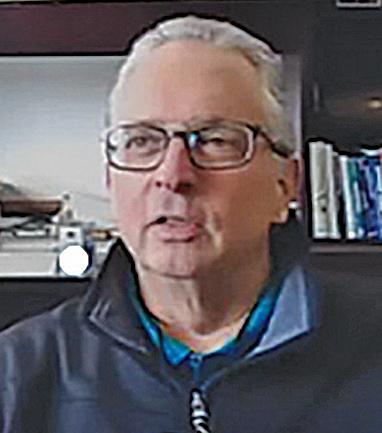
Lee Sanders, assistant executive director at the Louisiana High School Athletic Association and director of officials in Louisiana, said camps were good for creating a supportive environment. But it was important to go beyond rules and mechanics.
“We usually try to do a meal and a social and give everybody a chance to kind of tell their why, their officiating story, and to find that common ground, and to see some of the success,” Sanders said. “Because really it’s about relationships, right? So to give opportunities for new officials to come together and learn their craft, but really to lean on each other and to network.”
Raquel Wagner, MLB’s manager of umpire operations, outlined changes that will allow minor league umpires to move up more quickly through the ranks, skipping levels similar to what can happen with players who show talent. Additionally, MLB changed the future path to pro umpiring jobs, screening candidates at free one-day umpire camps and offering all-expenses paid prospect camp in Florida.
“We’ve got to all be in this together, and that’s the first step, recognizing you can’t do it the way you did it before.”






On a Friday night three years ago, Toledo, Ohio, native Dean Grzegorczyk, while on the way to the football field with his crew, noticed a young boy in a wheelchair. Grzegorczyk returned to the locker room and grabbed a penalty flag to give the boy. He told the boy any time Grzegorczyk made a mistake on the field, the boy should throw the flag on him. When the game was over, he returned and noticed the once pristine, yellow flag was now completely covered in dirt.

and coins) and a new game ball to give to an honorary captain each game. Within minutes, both companies were on board. And with those donations, the crew was able to have an honorary captain join them on the field to meet with coaches and conduct the coin toss.
“It’s so neat to see their reaction and their eyes light up,” Dartt said. “The kids’ reactions are awesome. It’s so fun for us and I feel selfish about it because sometimes I feel like we get as much joy out of it as the kids do.”
The idea caught the attention of Rossford High School head football coach Todd Drusback, who is also the president of Parker’s Purpose, a foundation dedicated to providing money to the parents of children going through life-threatening illness or disease. Drusback approached Dartt and mentioned he would like to partner up going forward.
The outpouring of support is not lost on the rest of the crew. For Randy Grant, the crew’s umpire, it hits close to home.
“I have somebody in the family who is autistic,” he said. “It means a lot to me to see a kid smile. It lets them know someone is thinking about them.”
Lee Durham, the back judge on the crew, has noticed people understanding officials are human and really do care.
“He laughed and I laughed and we had a good time with it,” Grzegorczyk said.
While Grzegorczyk would continue to hand out a new flag to a wheelchairbound or special-needs kid before each game for the past couple of seasons, it turned into something much more for the 2022 season. Grzegorczyk’s head linesman, Thom Dartt, had the thought to expand on Grzegorczyk’s generosity. Dartt emailed Fleming’s Referee & Sport and the Wilson Football Factory, both in Ohio, to see if they’d be willing to donate official’s gear (whistles, flags
“A lot of people have been appreciative of us doing this,” he said. “Every place we go, they post it (on social media) the next day. It’s not about us, though. Hopefully other officials will do it.”
And for line judge Drake Furey — whose girlfriend’s brother has cerebral palsy and was one of the captains the crew spotlighted — the gesture is something he won’t forget.
“The smiles almost bring a tear to your eye,” he said. “Sometimes on the day to day, we think life is tough. When you see it through that lens, we aren’t going through anything like these people are going through.”
Brad Tittrington is an associate editor forReferee *
In an effort to shine a spotlight on officiating, the NFHS has created the “Legends” program. The focus is to highlight the accomplishments of giants in the officiating industry.
“The premise was really to find a way to celebrate officiating,” Dana Pappas, NFHS director of officiating services, said. “It was something from our office we hadn’t done a whole lot of. We were trying to find ways to encourage people to officiate by listening to some of those big names in officiating and probably officials in those sports or potential officials in those sports people might be somewhat familiar with.”
Pappas interviewed legends from 17 sports — each sport for which the NFHS writes rules. The goal is to launch interviews for each sport in the season in which they are primarily contested. For the fall, interviews included Jerry Markbreit (football), Joan Powell and Marcia Alterman (volleyball), Esse Baharmast (soccer) and Steve Horgan (field hockey).
The interviews, which all can be found on YouTube, are anywhere from 15 minutes to an hour, and the goal is to make it a yearly program.
In October, the NBA and NBA Players Association (NBPA) announced a plan to encourage more respectful behavior within basketball, even at the youth levels.
Many groups, including the National Basketball Referees Association, are also involved with the “Respect for the Game” initiative.
“Respect and dignity are core values of both the NBA and the NBPA,” NBA Commissioner Adam Silver and NBPA Executive Director Tamika Tremaglio said in a joint statement. “We are reaffirming our commitment to promoting healthy and courteous relationships among players, coaches, referees, fans and parents throughout the game.”
Have you heard an inspirational or motivational officiating story? Send your ideas to GettingItRight@referee.com Send




















Ethics is defined as a system of moral principles, or rules of conduct, recognized in respect to a particular class of human actions. With that in mind, what can be considered ethical behavior by a referee and the referee team? This article will be broken down into three major categories that require ethical behavior: the referee, referee conduct and referee training.
Referees should always have the utmost respect for the game of soccer.
Referees are professionals and are to act in a formal or businesslike manner. This includes being a student of the rules/Laws and knowing how to properly interpret and apply them. It is every referee’s responsibility to maintain the dignity of the position.
Referees should always be loyal to fellow officials and never criticize/ discredit their efforts or abilities. If a referee or assistant referee should have a poor performance, it is up to the other officials to lift this official up and help that official to improve in the future.
Referees should always strive to do their best no matter the level of the match or the abilities of the players. Every match should be considered the most important match of the referee’s career.
Referees should always remember it is a privilege to officiate at every level and always strive for a superior performance. They should also work diligently so they do not interfere with the game and make the game more about them than the players. The best referees notice everything, but seldom are noticed.
Given the authority that referees are delegated, it is beyond essential for the referee’s integrity to always remain intact. Powerful tools, such as this caution issued by Ricardo Medina, Santa Ana, Calif., must be used appropriately and without conscious or subconscious bias. Match officials are strongly encouraged to read their respective organization’s code of ethics to review the referee’s responsibilities.
Referees should always work as a team. No one member of the team is greater than the other. Each member of the team must work together to achieve maximum teamwork and results. Stress this teamwork in the pregame conference.

Conduct by referees must always be professional in every aspect. When referees accept an assignment, they must honor that contractual agreement. Referees should never “shop around” for better matches and return an assignment because they have found a better match. If referees are requested to officiate a higher-level match and already have an assignment, they should contact the assigner and openly discuss options so the assigner is not left in an adverse situation.
Conduct also includes not soliciting any matches. Some referees have been known to contact coaches when there is going to be a playoff game and try and convince the coach the referee should be requested for the match. Others have contacted assigners requesting they be assigned a particular playoff or high-level match.
Conduct that is similar to the above guidelines is that referees should never accept an assignment where their immediate family is affiliated with the team in some manner. For example, an intercollegiate assignment should not be accepted at a school where the official’s spouse is employed or the official’s child is a student.
Conduct by referees that is professional includes not talking to the press or media about a match or a particular play in a match. Comments can be misconstrued and the referee making them can be placed in a compromised position because of what was stated. No comment is the best comment when approached by the press after a match. The only time referees should talk about decisions is when they are providing an interpretation of the rule/Law to a player, coach or athletic administrator.
Conduct by referees should never include the use of social media to promote themselves, demean others or talk about players or teams. Referees should never talk about an upcoming match and how it will be officiated or the perceived attitude of the players involved in the match. This creates an appearance of bias and will only result in problems for
the referees. Likewise, after the match the referees should never post social media comments about player or team behavior or issues that were encountered during the match.
The most important conduct every referee must remember is family comes first. Putting matches and the game in general ahead of the family will not only lead to problems in the referee’s personal life but more than likely on the field of play. A referee that takes “family baggage” on the field will have difficulty concentrating on the match and will more than likely have problems with match control.
Training for referees must be ongoing. Referees should take an entry level course to learn the basics of officiating. They must continue training on a regular basis by attending clinics, studying the rules and match situations, seeking out mentors, being assessed on a regular basis, listening to recommendations from higher-level referees and seeking all opportunities to improve.
Training is not only learning from studying but also includes physical training on a regular basis. Referees must continue physical training even when there is no season so they are physically fit for the first match of the season. Referees cannot officiate themselves into shape. They must be ready from day one. Proper physical training will help ensure referees are in the best position possible during the critical moments of the match. The theory of “they will come back so I do not have to chase them” is never to be used by referees.
Training also includes mental preparation. Many referees try to envision the match beforehand and think about how they are going to handle a situation if it happens during the match. This is a good method to help being thoroughly prepared during the match for any given play.
Referees must always act in a professional manner and strive for perfection. Their behavior must reflect the highest standard of ethics. They must work as a team and ensure the match is played fairly and safely. *
Kevin Stott, the last continuously serving player, coach or referee from the 1996 inaugural season of the MLS, retired after his Oct. 1, 2022 match.
Stott’s first match was an April 18, 1996, contest between the Dallas Burn and the Kansas City Wiz — the seventh match in MLS history. Stott’s final match between the LA Galaxy and Real Salt Lake was the 7,081th game in MLS history.
Stott is the all-time leader in MLS matches — including players — with a total of 540 regular-season contests. That total swells to 595 MLS matches with MLS Cup playoff matches factored in. He took charge of the MLS Cup in 2001, 2005 and 2009 and whistled the inaugural MLS All-Star Game in 1996. He also holds a remarkable streak of officiating at least one MLS Cup playoff match in every season of the league’s history.
Stott represented the United States on the FIFA list of International Referees from 1995 until 2008 and refereed 12 matches in World Cup qualifying between 2000 and 2005.
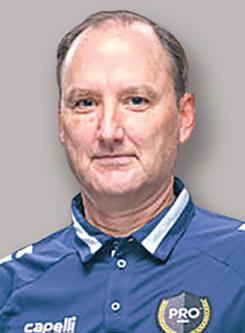 SOURCE: PROFESSIONAL SOCCER REFEREES ASSOCIATION
SOURCE: PROFESSIONAL SOCCER REFEREES ASSOCIATION
In June, 32 teams will converge on WakeMed Soccer Park in Cary, N.C., for a $1 million winner-takeall soccer tournament based on the popular “The Basketball Tournament.”
Dimensions include:
•Maximum field dimensions: 65 yards in length, 45 yards in width
•Goal dimensions: 18.5 by 6.5 feet
Each game will finish with “Target Score Time.” After two 20-minute halves are played, an untimed period is played based on a target score, established as one more goal than the leading team’s goal total at the end of regulation. With the game clock turned off, the first team to reach that target score wins. For every five minutes in the untimed period without a goal, the maximum number of players from each team is reduced by one player each.
SOURCE: ESPN
In each of the following you are given a situation and at least two possible answers. You are to decide which answer or answers are correct for NFHS, NCAA or IFAB rules/Laws. Solutions: p. 85
1. During the first half of play, A1 is cautioned for a reckless tackle. The match is tied and a winner must be declared. During the taking of penalty kicks, A1 is cautioned for dissent.
a. This is considered the first caution since cautions do not carry over to the taking of penalty kicks.
b. The referee displays the caution and then a red card for ejection.
c. The referee instructs A1 to leave the field and A1 cannot participate in the taking of the kicks.
2. During the field inspection, the referee team observes that the penalty area is 46 yards wide.
a. The game cannot be played.
b. The referee should make a note where the penalty area should be and use this invisible mark.
c. The game is played with the markings and the referee notifies the appropriate administrators after the game.
3. A1 takes a shot on goal from approximately 20 yards. A2 is standing at the edge of the goal area and only has the goalkeeper between A2 and the goalline. As the shot is heading to the goal, the assistant referee incorrectly raises the flag for offside and the referee, hearing the snap, sounds the whistle. The ball entered the goal prior to the referee’s whistle sounding.
a. The goal is awarded, and the referee advises the coaches that the whistle sounded after the ball crossed the goalline.
b. No goal and the match is restarted with a drop ball due to inadvertent whistle.
c. No goal and the match is restarted with an indirect free kick for team B as a result of the offside decision.
4. A goal can be scored directly from:
a. A throw by the goalkeeper into the opponent’s goal.
b. A drop ball.
c. A goal kick.
wants to decide the outcome of a match, especially by awarding a penalty kick. More than 90 percent of penalty kicks taken result in a goal. Therefore, if a match is tied, this decision will more than likely decide the outcome.
Many years ago, it was easier to deal with a potential penalty kick call. Spectators, players and even coaches were not as educated in the rules/ Laws of the game. In lieu of making the proper call of a penalty kick, many referees would award an indirect free kick and state the foul was dangerous play or obstruction. Another avenue of not having to call the penalty kick was when the referee would say the initial foul occurred just outside the penalty area and moved the infraction back. These tactics no longer work and only create controversy and confusion. If the defense commits a foul in its penalty area that would result in a penalty kick, it is a penalty kick. Plain, but not so simple.
Some fouls are so obvious that it is not difficult to call a penalty kick. A defender tackles an opponent in the penalty area and it was clearly a foul. A defender holds a shirt of an attacker to stop the attacker from advancing easy decision. A defender extends the arm and handles the ball. These examples are easy for the referee to deal with and award a penalty kick. However, many times, it is not that clear cut.
So why is it often so difficult for a referee to call a penalty kick when a direct-free-kick offense is committed by a defender in their own penalty area? Think about this scenario. The score is tied, 1-1, in the 89th minute of a match. An attacker moves the ball along the touchline and makes a pass toward the center of the penalty area. The ball flies into the penalty area and begins to land near the penalty spot. As it is heading

for the ground, a defender makes the body unnaturally bigger and extends the arm. The ball strikes the arm. As this occurs, the referee observes there is an attacker near the defender and the ball lands in front of the attacker’s foot and it is an obvious opportunity for the attacker to shoot and score from about 11 yards away from the goal. Is it a penalty kick or should the referee apply advantage and hope the attacker scores and the match is decided by that goal rather than a penalty kick? All of this runs through the referee’s mind in a matter of a second or two and the referee must make a decision. Who can honestly saythat is an easy call? If, as the referee is sounding the whistle, the attacker shoots and scores, the referee looks bad. Even worse, when the penalty kick is taken, the kick is missed. If the referee applies advantage and the attacker shoots and the goalkeeper saves the ball, again the referee appears to be wrong in the decision.
In addition to making the decision to award a penalty kick, the referee must always be thinking about other potential sanctions. Was the foul committed by the defender reckless and shoulda caution be administered? Did the foul deny an obvious goalscoring opportunity and an ejection is warranted? Was the defender who committed the reckless tackle already cautioned for a different offense and now must be ejected? Was the foul itself an act of violent conduct and therefore an ejection? Again, all of these items run through the mind of the referee as the whistle is being sounded for the initial foul and the awarding of a penalty kick.
Other factors considered by the referee when making a penalty kick decision may include: Was the foul clearly observed or is there some doubt about what happened? In the middle of the field, this is not a problem. When awarding or not awarding a penalty kick, this becomes a serious issue. More

often than not, a referee’s mind will immediately conduct an instant replay to verify what was initially observed and then the decision is made. Was the foul really inside the penalty area? Again, a quick instant replay or eye contact with the assistant referee for verification. It is better to be a little late in pointing to the penalty spot rather than pointing too quickly and realizing a penalty kick was not the accurate decision.
What can referees do to make the penalty kick decision easier and reduce the amount of potential dissent and other related player problems? First and foremost, be in good position to make the call. It will be most difficult to convince the defensive players and coach the decision to call a penalty kick was accurate when the whistle was sounded from 30 yards away from the play. Presence leads conviction
Next, when sounding the whistle, make sure it is forceful so everyone knows the referee is 150 percent sure the foul should result in a penalty kick. The same demonstration of confidence should be used when pointing to the penalty spot. Market the call with forcefulness and confidence. Remember in matches played under NCAA or NFHS rules, the referee must also signal to stop the clock.
Once the whistle is sounded, the referee should take a position near the side of the penalty area on the referee’s diagonal. This removes the referee from the players. Those players who wish to dissent or argue with the referee will normally initially move toward the penalty spot since that is where the ball is going to be placed. This means the players must “look” for the referee and the position taken provides some amount of time for them to regain their composure, and the referee has the opportunity to signal them not to come any closer. Once the players have settled down, the referee can begin the process of administering the penalty kick.
The referee must make sure there is no gamesmanship during the taking of a penalty kick. For example, the goalkeeper moving forward with the arm extended to shake hands with the kicker and wish them good luck. This is not sportsmanship. It is a clear attempt to disrupt the kicker. Stop the goalkeeper and have them return to the goal to take
Officiating Experience: Major Area Soccer League coordinator of officials since 2011; National Premier Soccer League official since 1999; NCAA coordinator of men’s and women’s soccer officials since 2012; U.S. Soccer National Referee (1998-2006); former NCAA match official (700-plus collegiate matches); U.S. Soccer National Referee Coach; member of PRO’s assessor staff; USYS referee committee chair.
Occupation: Worldwide Account Sales Manager, FedEx
REFEREE: What is your current role with professional indoor soccer?
CIGICH: In addition to being an active referee, I serve as the head of officials for the league. I have been in that position since 2011 and began officiating in the league in 1999. The league rules were initially developed by Dr. Joe Machnik and Dr. Herb Silva. I have worked with the league on keeping the rules up to date and making any necessary adjustments based on situations that develop during the season. I am also responsible for recruiting new officials for the league and overseeing assignments of officials.

REFEREE: How many officials work an indoor match?
CIGICH: There are four officials assigned to each match. Two are assigned to be on the floor. There is one assistant referee who is responsible for managing the benches, controlling the substitutions and assisting with any off-the-ball fouls that may occur. Since there are substitutions on the fly, the assistant referee is responsible for
ensuring that there are not too many players on the field. The fourth official is the record keeper. This individual monitors fouls. If a team commits four fouls in a half, there is a two-minute power play assessed (blue card). When there is a penalty, the fourth official is also responsible for managing the penalty box and releasing the player at the time the penalty expires.
REFEREE: Is there a video assistant referee for the professional matches?
CIGICH: No. Each team is allotted one challenge per game and can “throw” the challenge flag. The referee reviews the video to verify the decision. A referee may stop play to review a play and verify through video review what is the accurate decision.
REFEREE: What are some of the differences for an official when working an indoor match?
CIGICH: One of the biggest differences is the constant transition from lead to trail official as the play moves up and down the field. The referees on the field must be able to move quickly and constantly adjust their position so they can have a good angle on the play and not be in the way of the 12 total players on the field. The second challenge is the quickness of play means that there is more judgment as to what is a foul or what is a fair play. There is more player-to-player contact since the players are in a confined area.
REFEREE: What are some of the rule differences between the indoor and outdoor game?
CIGICH: There are several differences and I’ll try to cover some of the highlights. First, if a player receives a yellow card, the player must serve a five-minute non-power-play penalty. If a player commits a major foul, they serve a seven-minute penalty.
When the ball goes out on the sideline, the game is restarted with a kick-in from where the ball left the field. If the ball goes out over the goalline and last touched by the attacking team, the goalkeeper throws the ball back into play.
REFEREE: How would an outdoor referee become a referee in the league?
CIGICH: Current members of the indoor league and myself are always seeking new talent. If we observe an official who is working amateur, professional, college or other higherlevel games and appears to have the talent to transition to the indoor game, we work to get that official in the officiating pool.
Play: B1 commits a hard tackle on A2. The referee stops play, cautions B1 for the tackle and restarts the match with a direct free kick. Prior to the taking of the kick, the assistant coach from team B claps the hands in a sarcastic manner toward the referee. Ruling: The referee delays the restart of play and cautions the assistant coach for dissent. When the referee is in proper position, the referee is to sound the whistle for the taking of the direct free kick (NFHS 12-8-1c; NCAA 12.4.3.3; IFAB 12.3).
Play: A1 passes the ball in the direction of A2. A2 lowers the head well below the waist in an attempt to head the ball. B3, attempting to play the ball, kicks A2 in the side of the head. Ruling: The referee is to stop play and award an indirect free kick for team B. Although B3 made contact with A2, A2 created a dangerous situation by lowering the head (NFHS 12-6-1; NCAA 12.2.9.1; IFAB 12.2).
Play: A1 passes the ball into the penalty area. A2 runs toward the ball and B1, the goalkeeper, moves forward to attempt to save the ball. A2 and B1 make contact when they arrive at the ball the same time. The ball rolls forward over the goalline but not into the goal. Ruling: As long as A2 or B1 did not do anything other than make incidental contact, the match is restarted with a goal kick. The referee should make sure neither A2 or B1 are injured as a result of the contact. If the referee felt A2 attempted to kick or otherwise injure B1, the game would be started with a direct free kick for team B (NFHS 16-1-1; NCAA 16.1; IFAB 16).
Play: The referee awards an indirect free kick for team A. The referee fails to raise the hand to indicate an indirect free kick. A1 shoots and scores directly from the free kick. Ruling: No goal since the referee failed to signal an indirect free kick. The kick is retaken (NFHS 13-3-4; NCAA AR 13.1.3.b; IFAB 13.1).
up a position. Another example is the goalkeeper delaying taking position on the goalline. Again, this is an attempt to disrupt the kicker. Advise the kicker to take the proper position.
Can the kicker attempt to disrupt the goalkeeper? Absolutely. A kicker can continue to adjust the ball prior the kick so the goalkeeper has more time to think about the kick. Again, the referee should step in and have the kicker place the ball and take a position for the kick. After the whistle is sounded, the kicker could take time before moving toward the ball, as if the kicker is trying to decide where to kick it. Just another attempt to disrupt the goalkeeper. During any of these gamesmanship efforts, the referee has the power to caution the kicker or the goalkeeper. If this happens in a NFHS match, the player must leave the field and another player must take the kick or the substitute goalkeeper or a field player will be the goalkeeper for the penalty kick.
Every referee knows the penalty arc is 10 yards from the penalty spot. This includes the entire arc. Yet opponents often push and shove to gain a position where the arc and penalty area intersect. Again, the referee must get involved quickly and help defuse the situation. Allowing this action to
continue may lead to elbows or even a punch being thrown. A good tip is to get the players, kicker and goalkeeper in position as quickly as possible. The sooner the whistle is sounded for the kick to be taken and the quicker the kicker makes contact with the ball, the sooner play will resume and the penalty kick will be over. However, do not rush the kick and be so hasty there are players still in the penalty area and the kick has to be retaken because of encroachment.
The pregame conference should include a discussion about the penalty kick. What if a foul occurs in the penalty area near the assistant referee and the referee is on the diagonal or sprinting into position? Should the assistant referee signal for a foul? These are items that should be talked about by the referee team. For many years, referees would tell the assistant referees if there is a foul in the penalty area, only the referee will make the decision. Bad advice.
During the match, this situation occurs and the referee is screened from the play. No foul is called. This results in dissent, retaliation, coach problems and more. All because the referee wanted complete control. A better approach is for the discussion to be about what happens if the
assistant referee observes a foul in the penalty area and what portion of the penalty area is the assistant referee’s responsibility. Many times, during a pregame discussion, the referee will advise the assistant referees that their area of responsibility for fouls is an imaginary triangle that includes the touchline, goalline and a line drawn from where the touchline and halfway line intersect to the near goalpost. Any fouls in that area, including penalty kicks, are part of the assistant referee’s responsibility. First, make eye contact with the referee to see if the referee can see the foul clearly and is considering making the call. Second, if the referee is screened or does not have the best angle, raise the flag and wiggle it. Once the referee acknowledges the flag, move toward the goalline to let the referee know that in the assistant referee’s opinion, it is a penalty kick. If the referee motions to lower the
flag, do so. Remember, the assistant referee is there to assist, not insist. Everything is in place; the referee sounds the whistle for the penalty kick. The kick is taken and a goal is scored. The game can now continue without problems. Not really. Suppose an attacker runs into the goal and grabs the ball just as the goalkeeper is about to retrieve it? Could there be an issue here? The goalkeeper might take exception to the attacker’s decision and grab the ball away in a forceful manner. Does the attacker retaliate? Do players from both teams move toward the incident? These are possibilities the referee must be keenly aware of and do whatever is necessary to prevent them. After the ball enters the goal, it is no time for the referee and assistant referees to relax.
What happens if the referee sounds the whistle, the kicker shoots and misses and the assistant referee indicates the goalkeeper moved too
quickly or a defender encroached? Obviously, it is a rekick (see chart). However, it is the referee’s job to explain to the defending team that is the correct decision. This must be accomplished quickly and professionally. It is imperative the ball is spotted again, the referee sounds the whistle and the kick is taken as quickly as possible. Getting the ball back into play will reduce the amount of dissent and other potential problems for the referee team.
In summary, the penalty kick is a very difficult call to make and must be handled properly. Good positioning, sound people management skills and teamwork will go a long way to reduce any problems associated with the awarding of the penalty kick.
John Van de Vaarst, Ellicott City, Md., is a NISOA National Clinician, National Assessor and former State Level USSF Referee and Assessor. He is Referee’s soccer coordinator.*

It’s pretty rare to have a fumblefree game. Muffs are less common. Muffs and fumbles are treated differently.
A fumble is the loss of player possession and is characterized by an act other than passing, kicking or successful handing of the ball. A muff is an unsuccessful attempt to get possession of the ball and is always preceded by a touch. Also, an accidental kick is a muff (NFHS 2-18, 2-27; NCAA 2-221. 2-11-2)

Play 1: A1 receives the snap and attempts to hand off to A2. The ball falls to the ground. Ruling 1: A1 has fumbled; he had possession of the ball before it became loose.
Play 2: As A1 takes the snap, the ball falls to the ground. Ruling 2: A1 has muffed the snap; he never had possession
Under NCAA rules only, there is an exception. On fourth down or during a try, before a change of team possession, a fumble caught or recovered in advance of the spot of the fumble by a member of the fumbling team other than the fumbler results in a dead ball. The ball is returned to the spot of the fumble. If the fumble is caught or recovered behind the spot of the fumble by a member of the fumbling team other than the fumbler, the ball is dead at that spot.
Those restrictions apply only to team A; team B may legally advance any fumbled ball.
In NFHS, if team B recovers a fumble on a try, the ball is dead and the try is ended.
If the quarterback had control of this snap before he dropped it, the result is a fumble. If he touched the ball but never gained possession of it, it’s a muff. If the snap was such that it never got to the quarterback at all, it’s an illegal snap and a column for another day.
Play 3: Fourth and 10 on team A’s 30 yardline. A1 catches a pass at his 38 yardline and fumbles there. The ball is recovered at team A’s 32 yardline and advanced to team A’s 45 yardline by (a) A1, or (b) A2. Ruling 3: In NFHS, the play stands in (a) and (b) and it’s team A’s ball, first and 10 on its 45 yardline. Under NCAA rules, in (a), the play stands since A1 recovered his own fumble. In (b), the ball is dead when A2 recovers and it is returned to the spot where possession was lost, making it team B’s ball, first and 10 on team A’s 38 yardline.
Out of bounds. In NFHS play, when the ball is fumbled in the field of play and goes out of bounds, the ball belongs to the fumbling team at the out-of-bounds spot. That is the same ruling in NCAA if the ball goes out of bounds behind the spot of the fumble. However, in NCAA, a fumble out of bounds in advance of the spot of the fumble is returned to the fumbling team at the spot of the fumble.
Play 4: Third and 10 on team A’s 30 yardline. A1 pitches to A3 for a sweep. As A3 approaches the line, he is hit and fumbles at his 30 yardline. The ball goes out of bounds at (a) team A’s 28 yardline, or (b) team A’s 33 yardline. Ruling 4: In (a), in both codes, the ball belongs to team A at the out-of-bounds spot (team A’s 28 yardline) and it will be fourth and 12. In (b), in NFHS, the ball also belongs to team A at the out-ofbounds spot (team A’s 33 yardline) and it will be fourth and seven. In NCAA games, the ball is returned to the spot of the fumble, where it will be fourth and 10 for team A on its own 30 yardline.
Muffs. It is a muff when a defender deflects a pass he is attempting to intercept. A muff may also occur after a fumble as several players vie for the ball. Arguably muffs occur most frequently during kicks and present a challenge to officials. Muffed kicks cannot be advanced by the kicking team. The underlying reason for that is not because the ball is muffed, but because the status of the ball remains as a kick.
Let’s go back to the defender who muffs a pass in flight. If his deflection ends up in the hands of a teammate or an opponent (perhaps the intended receiver), the ball remains live and may be advanced. Certainly, there is no debate that either team can advance a fumble after it is muffed and recovered. While caught or intercepted passes and recovered fumbles may be advanced, kicks may not. When the kicking team gains possession of a free kick, the ball is always dead; on scrimmage kicks in NFHS, it remains live if team K recovers behind the line and in NCAA, if team K recovers behind the line and the ball did not cross the line (NFHS 4-2-2f; NCAA 4-1-3e).
Play 5: K1’s punt hits the ground at team R’s 30 yardline and rolls. R1 muffs the kick at his 26 yardline, and the ball is recovered at team R’s 24 yardline and advanced for an apparent touchdown by (a) R5, or (b)K5. Ruling 5: In (a), a legal play. In (b), since team R was the first to touch the kick beyond the line, team K is entitled to possession; however, the ball is immediately dead on the recovery and no advance by team K is possible. It is team K’s ball, first and 10 on team R’s 24 yardline.
Fumble or muff? In most situations, the distinction between a muff or fumble will not make any difference, but here is a play where that knowledge is essential.
Play 6: K1’s punt is very high and R3 decides to catch it without signaling for a fair catch. The ball hits R3’s chest at team R’s 30 yardline. R3 takes a step forward as he struggles to get a firm grip on the ball. K5 contacts R3 and the ball falls to the ground. K5 recovers the ball and takes it into the end zone. Ruling 6: The covering official must judge whether R3 had possession of the ball before he was contacted. If he had possession, R3 fumbled and K5’s touchdown stands. If R3 never had possession, his muff may be recovered by K5, but the ball is dead and cannot be advanced. It will be first and 10 for team K at the spot of recovery.
George Demetriou has been a football official since 1968. He lives in Colorado Springs, Colo. *
In the 2022 NFL preseason, selected players were required to wear Guardian Caps, a soft shell worn over helmets as a concussion prevention device. Concussions among players in those position groups fell by more than 50 percent compared to the previous three-year average.


According to the Guardian Caps website, the product was introduced in 2011. But the idea is nothing new.
According to an item in the Sept. 11, 1967, issue of Sports Illustrated, Ohio State coach Woody Hayes advocated a similar device.
“For 13 years we’ve padded our headgear at OSU inside and outside. We’re now using a synthetic rubber 20 times as absorbent as foam rubber,” Hayes said. “But we can’t get much support from other schools.”
The design and material may be different from that used by the Buckeyes, but you have to tip your helmet to Hayes for his foresight.
Should hits on the quarterback in the NFL be reviewable by replay?
Under NFL rules regarding punts, only eligible receivers on the line of scrimmage at the time of the snap, or an eligible receiver who is aligned or in motion behind the line and is more than one yard outside the player on the end of the line, are permitted to advance more than one yard beyond the line before the ball is kicked. The NCAA was actually first to pass such a rule, in 1967. But the rule was eliminated in 1968.
In each of the following you are given a situation and at least two possible answers. You are to decide which answer or answers are correct for NFHS and NCAA rules, which might vary. Note: In kicking situations, K is the kicking team, R the receiving team.
Solutions: p. 85
1. Team K is in a legal scrimmagekick formation with holder K1 on one knee and K2 in position as if to kick. K1 catches the snap and, with his knee still on the ground, pitches the ball forward to K3, who was positioned as a back. K3 catches the ball and advances to team R’s end zone. When the pass is thrown, the covering official should:
a. Do nothing; that’s legal.
b. Drop a flag but allow the play to continue.
c. Drop a flag and blow the whistle.
d. Blow the whistle only.
2. Fourth and goal on team B’s two yardline. With the game clock running and before team A breaks its huddle, B1 removes his helmet and exhorts his teammates. He does not curse nor direct comments toward team A.
a. No problem.
b. Unsportsmanlike conduct foul on B1.
3. K1’s free kick from his 40 yardline is untouched and goes out of bounds at team R’s 30 yardline. After the ball is dead, K2 knocks R3 to the ground.
a. If team R accepts both penalties, team K could rekick from its own 20 yardline.
b. If team R accepts both penalties, it could start a new series from the 50 yardline.
c. Either a or b.
4. Team A’s ball, first and 10 at its own 20 yardline. A1 catches a legal forward pass at the 50 yardline and is advancing toward team B’s goalline. B2 is able to catch A1 and punches the ball loose at team B’s three yardline. The ball rolls into the end zone, where it is recovered by B3. B3 is contacted before he can advance, fumbles and the ball rolls out of the back of the end zone.
a. The momentum exception applies; team B’s ball at its own three yardline.
b. Safety; two points for team A.
c. Touchback; team A’s ball at its own 20 yardline.
Early in my years as a college referee, I had a tough night. Team A’s offensive line was porous and defenders relentlessly pounded the quarterback. For whatever reason, although I knew instinctively some hits were late, I didn’t start calling roughing until the third quarter. It took several calls before the defense finally backed off. I got abuse from team B’s coaches because I suddenly put up a stop sign after letting them almost get away with murder the whole game. Had I taken care of business when the first defender approached or crossed the line, my life would have been easier.
There are two lessons. First, the standard we set at the outset of a game can make or break the rest of it. It will likely take the players a few plays to figure out the standard, but once they do they’ll play accordingly. If the standard is too lax, the game may degenerate into a sloppy affair and maybe become a war zone. If, by contrast, we’re too technical we may turn the game into a flag day event that bores everyone to tears.
I once graded a game film where, early in the first quarter, an official flagged a tackle for holding when the defender beat him and he grabbed the jersey. The official processed the action too quickly; the jersey stretch registered in his mind, but the fact the defender’s stride wasn’t altered didn’t. I wrote, “Do you really want to tell everyone that will be your standard for calling holding for the rest of the game?”
The need to be aware of what standard we’re setting applies at every position. How “handsy” are deep officials going to let defenders be with receivers? How much will umpires let linemen grab defenders? How technical will wing officials be with offensive formations and how much yapping will they let coaches get away with? What’s everyone going to do about players bickering and squaring off at each other? A
separate issue is whether we call things the same way everywhere on the field or change our standard depending on whether we’re at the five yardline or 50 yardline.
By setting a standard early I don’t necessarily mean throwing a flag. I believe in warning players if they’re on the edge of fouling but haven’t yet crossed my line. After the play, get word to a tackle who’s creeping off the line to move up. Warn a back that any more restriction and it’s holding. Tell a defender that if he hits the quarterback any later it’ll be roughing, and so on. Then get word to the coaches we’ve warned. We can’t expect the players to tell them that. That lets everyone know the ball is in their court and a marker may be dropped if they don’t fix things. Understand, I’m not advocating letting obvious fouls go. I’m talking about borderline cases.
It’s also good to compliment players when they let up, like the ones who could have hit a downed runner but didn’t. Those who receive praise tend to want to continue to do so, and that can have a calming effect on their teammates as well.
Of course, to talk about our standard begs the question: What should it be? Much has been said about using an advantagedisadvantage approach in foulcalling, where we don’t toss our flag unless something jumps out and puts a team at a disadvantage. I’m a firm believer in “call what matters and avoid the nitpicky stuff” approach at all levels, because I think it’s best calculated to produce a clean, fair game.
How do we know where that “make it big” line is? It takes study, effort and lots of snaps. People who have officiated for decades still devote hours to fine-tuning. Talk with veteran officials. Use available resources. If you’re in an association it may have helpful instructional material. NASO and this magazine have produced many worthy study guides on various topics.
See “Set Your Standard” p.72


It’s fairly obvious the player on the right is guilty of a foul. But what is the exact nature of the foul? A still photo is just that and we don’t know what happens next. Here are some possibilities.
Only NCAA has a specific foul for illegal hands to the face. This act could also turn out to be grasping and twisting the facemask or illegal use of hands. The penalty for the latter is 10 yards; the other
fouls carry a 15-yard penalty and, if by team B, an automatic first down.




The NFHS rulebook is not as specific; there is no hands to the face foul. Grasping and twisting the facemask carries a 15-yard penalty. This could also be illegal use of hands, which carries a 10-yard penalty.

Play: Team B has 12 players in its formation, and no player is attempting to leave the field. The snap is imminent. Quarterback A1, late in the play clock, is struggling to read the defense and the play clock expires. Ruling: In NFHS, when the officials count 12 team B players, both teams are in formation, no team B player is attempting to leave the field and the snap is imminent, the ball remains dead and team B is penalized five yards for illegal substitution. In NCAA, if the play clock expires in that situation, penalize team B for a dead-ball illegal substitution foul (NFHS 3-71, 3.7.1B Comment; NCAA 3-5-3, AR 3-5-3 VII).
Substitution
Play: A1 is a substitute for A2. Can A1 legally leave the game assuming the ball doesn’t become live? Ruling: In NFHS, during the same dead-ball interval, A1 must remain in the game unless a penalty is accepted, a dead-ball foul occurs, there is a charged timeout or the period ends (3-73). In NCAA, A1 must remain in the game for one play except during the interval between periods, after a score or when a timeout is charged to a team or to the referee with the exception of a live ball out of bounds or an incomplete forward pass (3-5-2d).
Out of Bounds
Play: Fourth and 10 on team K’s six yardline. Punter K1 is near his endline. After the snap, K1 takes a step backward and his foot touches the endline, but he has both feet inbounds when he catches the snap. The punt rolls out of bounds at midfield. Ruling: A team K player who goes out of bounds during a scrimmage kick down may not return inbounds during the down, unless he is blocked out of bounds and attempts to return inbounds immediately. In NFHS, K1 is guilty of illegal participation, a 15-yard penalty enforced under the all-but-one principle. In the play cited, the spot of the foul is behind the basic spot. Since that spot is in the end zone, it is a safety. In NCAA, the penalty is five yards from the previous spotor team R may choose enforcement from the dead-ball spot (NFHS 9-6-1; NCAA 6-3-12).
Also, there is video depicting what’s pass interference, holding, roughing the passer and kicker, etc. Some may come from NFL or college games, but it’s beneficial. Unless the applicable rules are different, what’s a foul at higher levels should pretty much be the same at lower ones. Officials and aspirants at the highest levels devote so much time to film study in and out of season the term “film junky” has been coined for them. Everyone at every level can benefit from that.


Whatever our foul-worthiness standard is, it at least has the benefit of consistency if we stick with it for four quarters. My second point is if we change our standard midgame, we create a whole other issue. Having been effectively told the game will be called one way, the coaches and players may have a hard time shifting gears, especially because there’s no practical way for
us to tell everyone in advance we’re about to change and to what extent.
Now, when it’s getting toward crunch time, they’ll have to figure out the new standard. They can’t do that until we toss a flag for something we’ve been letting go, or vice versa. Until we keep doing it, moreover, they can’t be sure it’s not a one-off and we won’t revert to what we were calling. And because they won’t know we have a reason for changing, they’ll likely chalk it up to inconsistency and poor officiating.
Sometimes we have no choice but to change our standard. If, for example, I had stuck with what I started with in my game, the quarterback may have been seriously injured, and I’ve seen officials loosen up after starting out being way too nitpicky. As I’ve explained, that is not ideal, but it’s better than allowing the game to become a farce.
Jon Bible is a replay official in the Southeastern Conference. A resident of Austin, Texas, he formerly officiated collegiate and pro football. *
From an enforcement standpoint, the rule that always makes my train of thought jump the track involves the kicking team being first to touch a scrimmage kick, followed by a foul, a recovery by the receiving team and a fumble that gives the ball back to the kicking team.
Consider this play as seen in the MechaniGram: K1’s punt is first touched by K2 at team R’s 42 yardline. The ball is picked up by R3 at team R’s 40 yardline. R3 is subsequently hit and fumbles at team R’s 48 yardline. The loose ball is recovered by prone K4 at the 50 yardline. During the kick, R5 holds at team R’s 42 yardline.
Mike Graf, a coordinator for the Minnesota High School League, offered some advice on how to handle such plays. After everyone takes a deep breath and the officials who have bags and flags on the ground communicate what they have, Graf says, “First thing I would try to do is figure out whether first touching might come into play. It is vital to remember team R cannot have the ball placed at the spot of first touching if team R touched the ball and subsequently committed a foul or the penalty is accepted for any foul committed by either team during the down.”
In the play cited, team K cannot keep the ball at the spot of the
recovery because if it declines the penalty for team R’s foul, team R will take the ball at the spot of first touching. If team K accepts the penalty, team R’s first touching option is canceled. Post-scrimmage kick enforcement does not apply as team K would be next to put the ball in play as a result of recovering team R’s fumble. The penalty for R’s foul is enforced from the previous spot, resulting in a first down for team K at team K’s 40 yardline.
Let’s change the play to a team K foul during the kick. Fourth and 10 at team K’s 30 yardline. K1’s punt is first touched by K2 at team R’s 30 yardline. The ball is picked up by R3 at team R’s 25 yardline. R3 is subsequently hit and fumbles at team R’s 28 yardline. The loose ball is recovered by prone K4 at team R’s 26 yardline. During the kick, K5 grasps and twists R6’s facemask at midfield.





If team R accepts the penalty, the first touching option is eliminated and the penalty would be enforced from


the previous spot. It would be team K’s ball, fourth and 25 from team K’s 15 yardline. Declining the penalty would give team R the first touching option.
As Graf notes, handling of the situation can be broken down this way: Team R cannot have the ball placed

at the spot of first touching if team R touched the ball and subsequently committed a foul, or the penalty is accepted for any foul committed by either team during the down.
Jeffrey Stern is Referee’s senior editor. He officiated high school and collegiate football and umpired high school baseball. *



Larry Norrell of Chippewa Falls, Wis., played football, basketball and baseball in high school. But once he went on to college, he knew his playing days were over. “I realized I wasn’t going to go professional, so why pretend you’re something you’re not?” he said.
With help from the athletic department at Stanley-Boyd High School, Norrell is mentoring and encouraging athletes to get involved in officiating.
“Larry has been a great benefit to our school,” said Nick Mahr, StanleyBoyd athletic director, who has known Norrell a long time. “Many people older than me have told me that he was their favorite teacher. I get to work with Larry now in my role as athletic director and dean of students. He cares about things being done well and continues to help with sports and substitute teaching. In all he does, he brings a smile and a patience second to none.”
“I kept up with (officiating) and I enjoyed working with the kids, and I’ve always enjoyed working with the kids,” Norrell said. “It’s kinda fun. You’re still in the classroom when you’re on the football field. Teaching is in my blood.”
After a distinguished five-decade career as an official, Larry Norrell is helping to organize training sessions he hopes will produce the next crop of officials.
But he still had a passion for sports and wanted to find a way to stay involved. So he took a class on refereeing and caught the bug.
Norrell, a retired biology teacher at Stanley-Boyd High School, first started refereeing football in 1969 and officiated basketball beginning in 1972. He officiated games at eight boys’ and girls’ state basketball tournaments before giving up basketball in 2002 as he found it harder to keep up with the players in a two-referee system.
“They beat me up the floor a couple times, and I said that’s enough,” Norrell said.
Fifty years — and lots of football and basketball games later — he’s working to ensure future games have officials.

Late last year, he participated in a meeting at which the possibility of a mentoring program for young officials was discussed. The longtime referee said he’d like to see a program established — be it at a city level or even a county level. He has already officiated alongside some younger officials and likes what he’s seen.
“The old (officials) are going out, and we need to replenish them or we’re not going to be having any football games or basketball games or baseball games,” Norrell said. “You’ve got to have referees out there to help out.”
Getting young people involved in officiating is just the start, Norrell said. Giving them proper training at the start will ensure they don’t just become warm bodies working games. The next wave will learn not just the rules and mechanics but all aspects of officiating.
“You’re not going to make the perfect call all the time, but you can stay in shape and stay with the game and make a couple dollars to defray your costs in college,” Norrell said. Reprinted with permission of the Chippewa (Wis.) Herald. *
Sophiyah Liu, Taiwan’s first female baseball umpire, was honored at the country’s Sports Elite Awards in December for her off-field efforts. Aside from publishing the Woman in Sports magazine, she has been raising funds to help female teenage athletes from underprivileged families obtain sports clothing.

Liu has given speeches on school campuses and in public advocating for gender equality. She hosted a workshop to teach adolescent and teenage athletes about the importance of maintaining physical boundaries and protecting themselves.
CONTRIBUTING SOURCE: TAIWAN NEWS
Carmen Doramus-Kinley Wichita, Kan.
Although she’s a veteran referee, Carmen Doramus-Kinley still enjoyed a career — and statewide — first last year.
Doramus-Kinley became the first female head referee in a varsity football game in Kansas history. She wore the white hat Oct. 14 when Wamego defeated Clearwater, 48-0.
Doramus-Kinley has officiated volleyball and basketball since 2011 and took up football four years ago. She also officiates small-college football in the area.

“I was very blessed last year to be hired full-time in the Kansas Jayhawk Community College Conference. We also work (Kansas Collegiate Athletic Conference) games. I was the first female on the line of scrimmage to be hired,” she said.
Doramus-Kinley notes she did have a predecessor, however. She was not the first female to work a football game in the state. “Taylor Dar actually led the way for me,” Doramus-Kinley said.
CONTRIBUTING SOURCE: KSN.COM
Do you know a person or group who should be profiled?
Send info to us at profiles@referee.com
Sophiyah Liu Taipei, Taiwan





















At the first in-person NASO Sports Officiating Summit since the pandemic, four officials from various sports and levels took to the stage in Denver to talk about defining moments and the lessons they have taken away from those moments.



Their stories are online at referee.com/voices.



“I didn’t ask to be the poster child for official abuse, but somehow I kind of wound up there. With that came an overwhelming sense of obligation and responsibility for me to share my story and get it out there in the hopes that it would prevent this from happening to someone else, and also to try to advocate for stricter laws in my state.”
“I would be lying if I said there were not some moments of fear that I had, and extreme anxiety, but I haven’t looked back. I just push through it and keep on going because I don’t want her to win. I don’t want her to take that from me. There’s only going to be one winner in this situation. I want it to be me.”


“Principles matter in life, and they matter in officiating. Fairness, honesty, integrity, excellence, finding balance, just to name a few. You should live out your principles based on who you’re called to be in your heart.”
“The only thing that I can take away with me is my word. One of my guiding principles is my priorities, and that’s my faith, my family, my business and officiating.”
 j.d. collins Retired as the NCAA national coordinator of men’s basketball officiating on Oct. 31, 2022
j.d. collins Retired as the NCAA national coordinator of men’s basketball officiating on Oct. 31, 2022
“Whatever it is that you may be facing in officiating, or your personal life, or your job, or whatever, you are way stronger than what you give yourself credit for.”
“… The NCAA tournament should be a tournament of advancement based on performance.”
“More times than not we remember our bad calls. It’s crazy because we’re so critical of ourselves. … I think it’s important that we pull those back and we start celebrating some of those good calls.”
“It’s important when (young people we’re mentoring) make a great call … that we concentrate on that positive play, and when we’re talking to them after the game, it’s, ‘That was a great job, that was a good call, and this is why.’ … We do enough of negative calls.”



“My wife says there’s a picture and there’s a video on the internet (showing my important World Cup call was correct). … I look at this and I’m like, oh my God, there is a God. Thank you, thank you, thank you. So all of a sudden I go from goat, to GOAT.”
“Let’s make sure that we provide more kindness, more respect, and pass it on forward. … If you can do that, not only are we going to be better referees, we’re going to be better citizens, and we’re going to make this country a much nicer and friendlier place than what it has been.”
“Why can’t we celebrate the good calls? When we do that, we can enhance the development of our young officials.”
“This referee family is not only in the U.S., it’s worldwide. You have friends all over the world.”
Even if you’re not a fan of classical music, you likely recognize the first eight notes of Beethoven’s Fifth Symphony when you hear them. Didn’t major in English lit? No matter. You probably know the Charles Dickens masterpiece A Tale of Two Cities begins with the words, “It was the best of times, it was the worst of times.”
The words and notes that follow those beginnings are classics and probably would be works of art even with less memorable starts. But those openers have burned themselves into our memories and are instantly connected with the overall compositions.
A positive start doesn’t guarantee success, but it is almost impossible to tackle any task without getting off on the right foot. So it is in officiating. The myriad tasks that must be

handled before the opening serve, tip, pitch or kick may seem like chopped liver, but that is hardly the case.
The process begins with accepting the assignment. If your assigner uses an online service, be sure your schedule is up to date. Don’t leave the impression you’re open when you know you’re already working a game or have a family commitment.
If you need to return a contract, do it promptly. Paper contracts are rare these days; there is no excuse
for dilly-dallying when it comes to handling such correspondence.
Contact your partner(s), preferably no later than the day before the game. Confirm a gathering place and time if you’re traveling together, or estimated arrival and meeting point if traveling separately. Account for traffic, weather and construction that may affect travel time. If officials in your sport have choices regarding uniform color and style, make those decisions at that time.
After your on-time arrival at the game site, seek out the game manager, who will greet you and guide you to the room you will use to change. That may be a locker room, coaches office, restroom, classroom or broom closet. Whether it’s the Taj Mahal or a dark, dank, crowded space, make the best of it. Like the weather, you can’t do anything about it, so keep a positive attitude. You’ll be spending comparatively little time there anyway.
You’re probably sick to death of reading about the need for a pregame meeting. Well, here we go again. Even if you’ve worked with the same partner or crew for eons, each game presents different challenges and opportunities. And if you haven’t worked together before, the need for a thorough discussion is even more important. Teams change players, coaches and strategies, not only from season to season but from one game to the next. As the season goes on, the less successful teams may overhaul their game plans hoping to shake things up. Discuss how you will react to those or other changes.
Enter the field or court together. Have a little bounce in your step, like you’re happy to be there. People will begin to see you at that point. If your shoulders are slumped, your feet are dragging or you have a sourpuss facial expression, you are sending all kinds of negative messages. Moreover, that attitude will carry over to the game at hand.
If the rules of your sport require a pregame meeting with each head coach, handle it professionally. Exchange whatever information both sides require, tell the coaches, “Have a good game,” and walk away.
When a coin toss or a meeting with captains is required, remember the “three B’s.” Be jovial. Be brief. Be done.

Meet with scorers, timers, chain crew members, etc., as appropriate. Make them feel a part of the officiating crew. If the stuff hits the fan, they may be the only ones who can bail you out, so don’t take them for granted. Often you’ll get a condescending, “Don’t worry, Sonny (or Honey). We’ve been doing this since you were in diapers. We can handle it.” Remain friendly but firmly insist on going over procedures anyway, since you may do things slightly differently from other officials. If a member of the support team is belligerent to the point he or she is impossible to work with, seek out the game manager to find a replacement. Play that card carefully, however. In smaller towns, that person may be the mayor, school board president or church pastor. In a tug of war between a visiting official and pillar of the community, you lose every time.
Observe the players before play begins. If you see a player is missing required equipment or a part of his or her uniform is illegal, bring it to the coach’s attention before it becomes an issue in the game. That’s also a good time to watch the players warm up and gain clues as to their abilities. Can the point guard hit the threeball? Does the center fielder have a cannon for an arm? Can the punter boom it? Any piece of information could be useful during the game.
If the national anthem is played, stand at attention. Don’t chit-chat with other officials, stretch or fidget.
When it’s finally time for the action to begin, be sure everyone is in place and ready to go. Then give a strong blast on the whistle or a commanding, “Play!” and let the fun begin.
How things go from there depends on a lot of factors. But your chances for success improve if you chart the right course from the get-go. Jeffrey Stern is Referee’s senior editor. He officiated high school and collegiate football and umpired high school baseball. *
Officials participating in a survey conducted last summer by the North Carolina High School Athletic Association.
Percentage of officials who said bad behavior by fans, coaches and players makes officiating no longer rewarding.
51
Percentage of officials who believe they are underpaid.
77
Percentage of the current officiating force older than 45.
51
Percentage of the current officiating force older than 55.
“Peer pressure is our number-one motivating factor. We all want to get to the Super Bowl, and to get there you can’t be a wimp. You’ve got to stand up and make the call. I don’t think fans appreciate how hard that is.”
— Former NFL official Al Jury, who worked five Super Bowls
SOURCE: SPORTS ILLULSTRATED






Former NBA referee Bob Delaney, an internationally respected and experienced figure in the field of post-traumatic stress, is the co-author of Heroes Are Human: Lessons in Resilience, Courage and Wisdom from the COVID Front Lines. Although aimed mostly at health care workers who have been besieged by the pandemic, the book also offers invaluable self-care insights in the face of trauma. The book is available from Amazon in Kindle, audio and hardcover versions in prices ranging from $5.95 to $26.99.

Noone likes braggarts. You know them. The officials who rattle off a list of their most impressive assignments and drop names of prominent associates like leaves off an autumn tree. Still, it takes a bit of self-promotion to get ahead in this business. Talent is essential, but your ability alone won’t get you as far as you want to go.
In addition to self-promotion and talent, you have to handle the business end of your officiating. Your work ethic, your commitment, your response in accepting assignments and returning phone calls is critical. Your willingness to help when needed, support your association, gain experience in any fashion at all levels and your ability to work and be loyal to your crew or partner are crucial.
Every official you work with, every contact you make along the way may be the one that helps get you the break you are looking for. The respect of your peers will pay dividends your entire career at any level you achieve.
Work to get better each year. It doesn’t matter if you have
worked five, 15 or 30 years — keep improving. That’s the foundation you must have before you can be truly effective at “selling yourself.”
Make a point to surround yourself with excellent officials and positive people. You need to have that great balance with a positive attitude on and off the field or floor. You also need to be patient. Don’t be negative, don’t complain about your schedule and don’t badmouth other officials.
If you’ve built a strong reputation and you feel the time is right to move up a level, there are many resources out there to help you. Camps are, first and foremost, instructional, but you can make some important contacts. But your focus must be on impressing the instructors with your hard work, desire to improve and commitment to the game. Keep your mouth shut, eyes open and leave the camp guru alone.
When introducing yourself to officiating supervisors, the softsell approach is the best. A call to introduce yourself or to let someone know who you are is OK. Letting them know your availability and interest in working and asking college assigners what is necessary to move to that level are all OK.

But if you shove your past experiences and successes down their throat, it sends a negative message. Written communication, email and following that league’s formal application process are all professional means of promoting yourself.
Creating a networking list is vital. That list should include the most accomplished officials with whom you currently work or have worked with in the past. Maintain contact with the people on your list. Make them aware you’re looking to move up and they may be contacted by someone for a reference. Remember, the street runs both ways — be willing to be on their list if they ask.
You can improve your nonofficiating visibility by joining Toastmasters, participating in community fundraisers and other events. It is important to show you care about people and to model a balanced life.
We all know the big break can hinge on timing, contacts and performance. Even if we do a solid, professional job of promoting ourselves, that upward opportunity might not come. You can still be the best junior high, city league or high school official in the area. *
Every official has struggled with the concept of consistency. From the first time you blow the whistle to the day you decide to hang it up, you are haunted with finding and holding onto the elusive “consistency.” Every fan, every coach, every player demands it. Every official searches for it.
The difficulty with consistency begins with the definition. Officials generally define consistency as reacting the same way when the same situation occurs. But how often does that happen during the course of a game? Single events appear to be similar, but appearances can be deceiving. No matter how comparable on the surface, each is different because each may involve different participants, preceding events, and physical and emotional environments.
What are some of the contributing factors that make consistency so difficult not only to
articulate but to accomplish? Here are just some of the factors:













Officials are not manufactured in a secret laboratory. They are human beings and have different styles they believe work for them. Some officials talk to players while others are stoic and quiet. Some officials are “by the book” and others follow their instincts. The only consistency from one official to the next is they are different in the way they approach their officiating. With training, all officials, regardless of their “style,” would ideally use a common set of mechanics, procedures and guidelines for doing their jobs. But that is not always the case.

Every game and team are different. Not every team uses the same style of play. Differences in




physicality, play tempo and play strategy make them unique.

The physical team does not want an official who will whistle only fouls having an impact on fairness and safety. Up-tempo teams want few stoppages and want action to resume quickly when play is stopped for fouls, violations or the ball going out of bounds. That requires officials to adjust to accommodate the teams, but cannot put the other team at a disadvantage as a result.




A youth game requires a completely different mindset from a collegiate or high school game. The age and the skill level of the players dictates how much and what should be called. In youth games, officials may call fewer violations or minor fouls and do more correcting (not coaching) than at higher levels.
The manner in which officials deal with players during the game must be one of the constants for the officials. Any inconsistency gives the perspective of a lack of fairness and equity. Officials cannot handle or manage every player the same, however. Some players respond to a quiet word, while others demand more strict treatment.

Every official must understand the importance of consistency. It is equally important officials understand inconsistency is caused by the built-in differences found in the game, the environment, the participants and the level of play. Officials must not become robots to become consistent. Instead, they must understand the sources of the appearance of inconsistency and use that awareness to mitigate those circumstances whenever possible. *

Terry Cooney —
The 20-year AL umpire, whose career included infamous run-ins with the likes of Billy Martin and Roger Clemens, died March 4. He was 88.He made his MLB debut as a 40-year-old rookie on Sept. 27, 1974. The AL hired him in 1975, and he remained there through the 1992 season, working 2,233 games, two MLB All-Star Games, three AL Championship Series and the 1981 World Series.
Johnny Grier — The first Black referee in the NFL died March 9. He was 74.Grier was hired by the NFL in 1981 as a field judge before moving to referee in 1988. He was assigned to 15 playoff games in his 23-year career, seven as a field judge and eight as a referee. His highest achievement was Super Bowl XXII, his last game as a field judge. In total, he worked two Wild Card games, nine Divisional games and three Conference Championships. After his retirement, he worked in the NFL office and was coordinator of football officials for the MidEastern Athletic Conference.

The NFL vice president of officiating evaluation and development and a longtime NFL official died unexpectedly March 24. He was 62.Mackie was a head linesman in the league from 2007-16. He officiated eight playoff games, including two Conference Championship games and Super Bowl 50. After 10 years on the field, he joined the NFL officiating department in 2017.
Tom Robinson
— The associate commissioner for the Colorado High School Athletic Association (CHSAA), chair of the NASO board and a longtime college football official died
April 4. He was 76. For 20 years at CHSAA, Robinson oversaw officials. He served as a college football official for the Western Athletic and Mountain West conferences, and later served as a replay official in the CFO West. Robinson served two terms on the NASO board and was elected chair for 2021-22.
Paul Albright — The longtime FIVB referee died April 14. He was 55.Albright traveled the globe officiating the highest levels of volleyball including men’s and women’s world championships, Olympic qualifiers, World League and Volleyball Nations League. He also officiated domestically for all levels of indoor and beach volleyball, including NCAA Women’s Division I championship assignments and two Final Four appearances.
Hugh Evans — The renowned NBA referee who was enshrined in 2022 to the Naismith Memorial Basketball Hall of Fame (see Recognitions) died July 8. He was 81. During his 28-year NBA career, he officiated 1,969 regular-season games, 170 playoff games, 35 NBA Finals contests and four NBA All-Star Games. After retiring, he worked as the NBA assistant supervisor of officials from 2001-03.
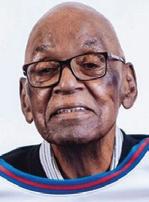
Bill Haller — The AL umpire, whose argument with Baltimore Orioles manager Earl Weaver has been viewed hundreds of thousands of times on YouTube, died Aug. 20. He was 87. Haller joined the AL staff in 1963. He retired in 1982 having worked four World Series, four AL Championship Series and four All-Star Games.

Greg Brewer — The retired Alabama High School Athletic Association (AHSAA) director of officials






died Sept. 2. He was 65. Brewer joined the AHSAA in 1976. He became director of officials in 1988 and held the position until 2016. He founded the Alabama Sports Officials Foundation in 2016 to support officiating, including establishment of the Officials Hall of Fame.
Dale Williams — The former NFL Super Bowl linesman and College World Series umpire died Sept. 18. He was 82. Williams officiated in the NFL from 19802003, working five Wild Card games, 12 Divisional games, three Conference Championships and Super Bowls XX, XXVI and XXXVII.He spent 32 years as a collegiate baseball umpire, working 21 NCAA D-I regionals and eight College World Series. He also umpired at the 1984 Olympic Games. He served as a coordinator of umpires for the Big West, Western Athletic and Pac10 conferences.

Tom Zimorski —
The Atlantic Coast Conference replay official died Oct. 1 after working the Clemson-North Carolina State game. He was 75. He was a referee and replay official in the ACC for more than 20 years, the Old Dominion Athletic Conference for seven years and the Atlantic 10 for two years. He was also a longtime member of the NFHS Football Rules Committee.
Ed Camp — The NFL down judge retired after 21 years in the league, previously serving as a head linesman as well. He worked four Wild Card games, seven Divisional games, two Conference Championships and Super Bowl LIII.
Gary Cavaletto — The NFL official retired after 19 seasons, serving as a side judge and field judge. He worked three Wild Card games, four Divisional
games, five Conference Championships and Super Bowl XLVI.
Tony Corrente — The longtime NFL referee retired after 27 years in the league. Corrente was hired by the NFL in 1995 as a back judge and promoted to referee for the 1998 season. He worked eight Wild Card games, five Divisional games, six Conference Championships and Super Bowl XLI.
Scott Edwards — The NFL official retired after 23 years as a field judge and side judge. He worked three Wild Card games, 11 Divisional games, three Conference Championships and Super Bowls 50 and LII.
Greg Gautreaux — The NFL official retired after 19 seasons as a field judge and side judge. He worked five Wild Card games, one Divisional game, two Conference Championships and Super Bowl XLIII.
Rich Hall — The NFL umpire retired after 18 seasons. He worked seven Wild Card games, two Divisional games and three Conference Championships.

Joe Larrew — The NFL field judge retired after 19 seasons, working previously as a side judge as well. He worked five Wild Card games, one Divisional game, two Conference Championships and Super Bowl XLVII.
John McGrath — The NFL replay official retired after five seasons. He previously worked as a head linesman in the league from 2002-16, working three Wild Card games, three Divisional games and Super Bowl XLIV.
Mark Steinkerchner — The NFL line judge retired after 28 years in the league. He worked three Wild Card games, 14 Divisional games, one Conference Championship and Super Bowls XXXVII and XXXIX.
Steve Zimmer — The NFL field
judge retired after 25 years in the league, including a year in the back judge position. He worked two Wild Card games, 14 Divisional games, one Conference Championship and Super Bowls XL and LIII.
Dan Ferrell — The NFL umpire retired from the league after 19 seasons. He worked two Wild Card games, six Divisional games, two Conference Championships and Super Bowl LI.


Fieldin Culbreth — The MLB crew chief, who worked three World Series, retired ahead of the 2022 season. His 29-year career also included one Wild Card, eight Division Series and seven League Championship Series.
Kerwin Danley — The MLB crew chief, who umpired 30 years in the league, retired ahead of the 2022 season. During his career, he worked one Wild Card, seven Divisional Series, two League Championship Series and two World Series.
Greg Gibson — The 24-year veteran MLB umpire retired following the 2022 season. His career included three Wild Card games, 11 Division Series, five League Championship Series and the 2011 World Series. Gibson was promoted to crew chief prior to the 2022 season.
Kevin Stott — The 27-year MLS referee announced his retirement in September. During his career, he worked five MLS Cups, including three as a referee (2001, 2005, 2009) and two as a fourth official (2000, 2006). Stott was selected MLS Referee of the Year in 2010. Stott was a FIFA referee from 1995-2008.
NBA — Kane Fitzgerald, a 13-year NBA officiating veteran, left the floor to become the NBA’s vice president of referee operations
and replay center principal. He finished his onfloor career working 779 NBA regular-season games and 66 playoff games, including four Finals games. He started in the new role on Sept. 18, taking over for Jason Phillips, another former onfloor NBA official.

PRO — Professional Referee Organization (PRO) General Manager Howard Webb will replace Mike Riley as chief refereeing officer for the Premier League. Riley announced in late June he was stepping down. Webb, who formerly officiated in the Premier League, has been general manager of PRO since 2018.
NCAA — Chris Rastatter, who has 27 years of college basketball officiating experience, was named the NCAA’s national coordinator of men’s basketball officiating in late August. He replaced J.D. Collins, who retired in October from the position he held since 2015.
WCC — Joanne Venditto, who serves as the softball coordinator of officials for the Pac-12 and Big West conferences, as well as a regional advisor for the NCAA Softball Umpire Program, was selected in September to add coordinator of softball umpires of the West Coast Conference to her duties. She replaced Terry Ching, who served as the coordinator since 2014.
SEC — Peter Vaas, a 40-year veteran of college football officiating and coaching circles, was named assistant coordinator for football replay by the Southeastern Conference. Vaas, who served as the replay official for the 2022 national championship game, oversees replay for both the Southeastern and the Sun Belt Conferences.

Western 5 — Joan Powell, a distinguished official, trainer and evaluator who served as the NCAA national coordinator of volleyball officials from 2011-15, was selected as coordinator of women’s volleyball officials for the Western 5 in April. The newly formed consortium consists of five D-I conferences: Pac-12, Mountain West, West Coast, Big Sky and Big West.
Mountain West — Cody Little, who served as an umpire in six Division I conferences, was named the Mountain West Conference coordinator of softball officials on Aug. 1. Little umpired multiple NCAA Division I postseason events, including the Women’s College World Series (2016-17). He served as an NCAA softball regional advisor.
Hugh Evans — The longtime NBA official, who died July 8 (see Deaths), was inducted posthumously into the Naismith Memorial Basketball Hall of Fame on Sept. 10 in Springfield, Mass. Evans was regarded as one of the best officials in the NBA and was previously enshrined in the New York City Basketball Hall of Fame and the North Carolina A&T Hall of Fame, which is his alma mater. Evans was one of the first NBA officials from an HBCU.

The former FIFA referee was inducted to the National Soccer Hall of Fame on May 21 in the builder category. Baharmast was a FIFA referee for six years. He officiated two matches at the 1998 World Cup, three at the 1996 Olympic Games, one at the 1997 Copa America and five at the CONCACAF Gold Cup in 1996 and 1998. He is also a former MLS and MISL referee. He later served as director of officials for U.S. Soccer, a member of the CONCACAF
Referee Committee and a FIFA technical instructor. He is now director of referees for the Colorado Soccer Association.
Joan Powell —

The coordinator of the W5 women’s volleyball officials consortium received the NASO Gold Whistle Award on Aug. 2. Powell was the first person to be named NCAA coordinator of volleyball officials (2011-15). She was also a five-term president of the Professional Association of Volleyball Officials (1996-2010). During her 40-plus years as an oncourt official, she officiated nine NCAA D-I championships, three NCAA D-II championships, one NCAA D-III championship as well as NJCAA and NAIA championships. Powell served two terms on the NASO board.

Jim Host — The founder of Host Communications was the 2022 recipient of the Mel Narol Medallion, which recognizes contributions to NASO. He was a strong advocate in the early days of NASO and was among the architects of the NASO conventions (now Summits). He was also involved in developing the formal relationship between NASO and Referee Enterprises Inc., the publisher of Referee and NASO’s management services partner. He is a former NASO board member.
Bobby Dibler — The coordinator of men’s basketball officials for the Western Officiating Consortium received the NASO Inspire Award. He officiated Division I men’s basketball from 1973-93, working 14 NCAA tournaments and three Final Fours, including two championship games. Dibler was honored for his courage and perseverance in the wake of great personal tragedy.
A memorable quote from the past 15 years states, “Elections have consequences.” While it is true those we put in power can either enhance our lives or cause great damage, the president of your local officiating association, while important, will not increase the value of your 401(k). However, since sports are a microcosm of life, it is important to recognize that election integrity is crucial to running a successful officials association.
Association elections do not fall under state, federal or local election laws, so the association must govern itself. Essentially there are few if any legal repercussions for allegations of election violations, so it is vital the voting body has full faith and confidence that elections are conducted properly. However, the association is not insulated from liability, so your elected leaders do matter.
rules must be clearly specified in the bylaws, including but not limited to length of terms, eligibility, the nomination process, collection of ballots, when the election is annually conducted (the final meeting of the year, e.g.), and counting ballots.
In addition, any procedures for challenging the results of elections should be spelled out. Also, the bylaws should clearly denote eligibility requirements and the way candidates may campaign.
While in-person voting is preferred, there are ways to collect ballots electronically. Websites such as ElectionBuddy, SurveyMonkey and the like have safeguards in place to ensure security. Regardless, ballots should be conducted secretly with each member casting one vote.
Once the ballots are received, they must be counted, and this process can make or break an election. I have witnessed a handful of people collect paper ballots, disappear for a few minutes and emerge with the results. How does the membership know the counts are valid? Votes should be counted openly by trusted members to ensure fairness and consistency without prejudice to any candidate.
The recording and streaming of athletic events is standard procedure at all levels of sport. An abundance of events from the youth level on up are available on YouTube and elsewhere. Officials are encouraged to use video to evaluate and critique their own performances, and video presentations are standard at local association meetings.
That’s all well and good, but any official or local association utilizing a particular video must be sure they have legal permission to do so, said sports law attorney Don Collins at the 2022 NASO Sports Officiating Summit during the breakout session, Critical Issues: A Legal Perspective.
If the official, one of his or her peers, or a friend for instance, shot the video for the purposes of self-evaluation, that shouldn’t be a problem. But if the video was produced by a third party, be it a high school video crew or a local cable network, the video belongs to them, not to the public at large.
“Technically, the school could have sold that game film to the association to show,” Collins said. “They have the license.”
Generally, they’re not going to want to charge for its use in these circumstances, Collins said. But problems can be avoided by simply asking for permission to use the video to show the calls at association meetings.
Start with the governing body, usually the state in which the association operates. Nowadays, just about all state athletic associations post guidelines on their websites. Some states are very specific in how elections should be held, others leave it to the associations. In the latter case, the association’s bylaws should govern.
The bylaws set forth the objectives, procedures and requirements of the association and should be reviewed regularly to ensure compliance with the governing body and the trends in the association’s sport. Election
I would wager a very small percentage of the membership has read the bylaws. As such, I recommend creating a factsheet about the specifics of elections, citing directly from state and association documents. Keep it short and simple while providing members the opportunity to refer to the source documents.
An election process deemed unfair breeds resentment and challenges the integrity of the process, the legitimacy of those elected and the validity of the association. Take the necessary steps to solidify the process to avoid any election pitfalls.
Scott Aronowitz is an educator and attorney who lives in Middleburg, Fla. He has officiated high school football for 20 years, was a college referee for seven years and currently works replay in the Collegiate Officiating Consortium. This column is for information purposes only and is not legal advice.
*
Want to avoid being sued for your officiating activities? These four practices will help:
1.Enforce all rules related to player safety strictly and without compromise or deviation.
2.Any time a rule requires the officials to ask questions and get answers: Ask questions and get answers.
3.Act intelligently and consistently, employing the overriding principles of player safety in enforcing the rules.
4.Do not, under any circumstances, make up your own rules regarding player safety or attempt to explain the consequences of one course of action or another to anyone.
Go to www.naso.org and click on member benefits for more on MICP.
SOURCE: SPORTS OFFICIATING: A LEGAL GUIDE BY ALAN GOLDBERGERAn election process deemed unfair breeds resentment and challenges the integrity of the process, the legitimacy of those elected and the validity of the association.

ATTENTION ASSOCIATION LEADERS!
Are you holding a camp or a clinic? Do you know of a camp or a clinic coming up? Referee can help get the word out! Call our sales department at 262-6328855 for more information.

Association Advantage
Membership to Association Advantage provides officials, associations and their leaders the tools to conduct wellrun meetings, education resources for officiating training and access to years of association management articles. Member associations also receive 12 issues of
Referee magazine, monthly Advisor newsletters, Click e-newsletters, massive discounts on training materials and optional insurance coverage exclusive to membership. For additional membership information, contact Ken Koester at 262-632-5448 or visit the Association Advantage website at nasoadvantage.com.

Purchase Officials
Supplies — Everything for Life Inside the Lines. Call 800-767-2233 or visit our website purchaseofficials. com for the best products and prices in the market.
reviews, same-day shipping and world-class service.
Smitty Outlet Store
Visit the NEW Smitty Outlet Store featuring discontinued, factory seconds and individual slightly defective items at great prices. Go to smittyoutletstore.com to shop now!
Referee Training Center
•The FBI publishes its “10 Most Wanted Fugitives List” that includes a former amateur baseball umpire. Leo Joseph Koury, 48, was also a well-known businessman in Richmond, Va., who was indicted by a federal grand jury in 1978 on charges including murder, racketeering and extortion. At the time when the FBI published the list, Koury had been at large for more than four years.
Ump-Attire.com — The #1 website for officials’ sporting goods. Now serving free returns to go along with more brands, product
— The largest library of officiating training materials in the world. Rules study, mechanics updates and materials on important topics can all be found in one location 24 hours a day, seven days a week, with sample chapters and video samples. Discover it all at store.referee.com.

1 — All – c (NFHS 2008 Interp. Sit.
3; NCAA 8-3o2; pro 5.06b4F)
2 — NFHS – c (3-2-1); NCAA, pro – d (NCAA 3-3a; pro 5.03b)
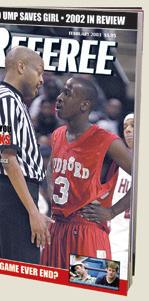
3 — NFHS, NCAA – a (NFHS 3-11; NCAA 5-5b); pro — c (5.10g)
4 — All – d (NFHS 3-1-1, 3.1.1C; NCAA 5-5j1; pro 5.10d)
1 — All – c (NFHS 3-4; NCAAM/W 1-22.1)
2 — NFHS – d (3-5-4d); NCAAM/W – e (1-24.1.e)
3 — All – e (NFHS 3-3-4; NCAAM/W 3-6.1.j)
4 — NFHS – e (7-4-5, 7-5-4a, Shot Clock Operator Guidelines #6.b.i); NCAAM – a (2-11.6.d.6, 7-3.1.e, 7-3.2.b, 7-3.2.d); NCAAW – d (2-11.6.b.1, 7-3.2.b)

1 — NFHS, NCAA – b (NFHS 12-8-2c; NCAA 12.7.4.7); IFAB – a (10.3)

2 — All – c (NFHS 1-2-6; NCAA 1.6.1; IFAB 5.3)
3 — All – a (NFHS 10-1-1; NCAA 10.1.1; IFAB 10.1)
4 — All – c (NFHS 16-1-1; NCAA 16.2.5; IFAB 16)
FOOTBALL
1 — NFHS – d (4-2-2a Exc. 1); NCAA – a (4-1-3b Exc.)
2 — NFHS – a (9-5-1); NCAA – b (9-2-1a-1f)
3 — Both – c (NFHS 6-1-8 Pen., 10-2-5, 3.3.3 G; NCAA 6-2-1 Pen., 10-1-5)
4 — Both – c (NFHS 8-5-3c; NCAA 8-6-1a)
SOFTBALL
1 — All – b (NFHS 3-3-6f-1; NCAA 8.2.6.2; USA Softball 4-3e; USSSA 5-4)
2 — All – c (NFHS 8-4-3e Pen.; NCAA 12.12.8.3 Eff.; 8-5g Eff.; USSSA 8-14c-3)
3 — All – c (NFHS 2-25-1a, 7.4.13; NCAA 11.12.1 Eff.; USA Softball 7-6m Exc. 2, 1 – Foul Ball; USSSA 7-14f Note, 3 – Foul Ball)
VOLLEYBALL
1 — All – c (NFHS 5-4-1h; NCAA officiating manual pg. 12; USAV officiating techniques)
2 — All – c (NFHS 9-4-5; NCAA 14.2.2; USAV 9.2.2)
3 — All – a (NFHS 10-2-3, 10-2 Pen.; NCAA 11.3.3.3; USAV 15.10.4)
•Five men are added to the National Professional Soccer League (NPSL) officials’ roster for the 199293 season. Vinnie Mauro, Esse Baharmast, Bobby Bribiesca, Alan Shepherd and David Missel rounded out the 59-man staff, the growth attributed to the league’s decision to expand from nine to 13 teams. Twelve additional officials were added to a developmental staff.
•Basketball referees Mona Miller, Leigh Anne Webb and Erica Bradley become the first all-female crew to officiate a men’s regularseason college basketball game. The crew worked an 82-44 victory by Martin Methodist over Atlanta Christian in the NAIA’s TranSouth Conference.
Referee is a magazine written from an officiating perspective, blending editorial credibility and business viability. It educates, challenges and inspires officials at the youth, recreational, high school, collegiate and professional levels in all sports, with an emphasis on baseball, basketball, football, soccer, softball and volleyball. Referee is the journal of record for officiating and takes informed positions on selected issues. The magazine provides a forum for its readers, facilitates the flow of information, raises public consciousness about officials’ roles and serves as a catalyst for improved officiating worldwide.

• Hank O’Day, who worked 10 World Series during his MLB umpiring career, becomes the 10th umpire voted into the National Baseball Hall of Fame. O’Day, who umpired from 1888-1927, was one of three men voted into the 2013 class on the Pre-Integration Era Committee ballot, alongside former New York Yankees owner Jacob Ruppert and 19th-century catcher Deacon White.

I watched a video that was very disturbing. The video came from a 10U baseball game. There was a play at the plate where the plate umpire had to make a call. A coach from the defensive team came out onto the field and disputed the judgment call and was eventually ejected. As the umpire ejected the coach, the coach pushed the umpire to the ground. The shove was so violent, the umpire’s back and shoulders touched the ground before his feet. All of this in front of 10U boys trying to play a game.
I am a fortunate person. I do what I love every day of my life. I work in baseball year round at every level. But things didn’t start out very easy for me. When I was a 12-year-old kid, umpiring baseball for my first job, I had to defend myself against an overthe-top aggressive environment every day and every game I worked. Back then, it was ingrained into the fabric of America. Yelling at the umpire is what everyone did. It was part of society. It’s amazing I chose a career in umpiring.
When I was a kid, that could have been me in the video. Unfortunately,
CORDILLback then there were no videos to expose unacceptable behavior and no platform to show it to the world.
A lot of people have figured out the world is a better place when you participate in this industry for the right reasons — the kids. The coaches that have this figured out enrich the lives of the kids they coach and the families they impact. The parents that have this figured out encourage their athlete when they fail (and they will fail more than they succeed in baseball) and show them how to pick up the pieces and move forward a better person.
Others aren’t even close to figuring it out. At every youth tournament I supervised this past spring and summer, I had to get adults under control because the weight of a 10U baseball game was too much stress for them to handle. At least one incident occurred per day, per event worked. Most of the time it was multiple instances per day, per event.
I like to think the industry has improved in regard to appropriate behavior and positive mindset. I think aggressive and borderline violent behavior was more prevalent in youth sports when I was younger.
However, until every adult who participates in youth sports buys into the behavior and values necessary to enrich the life of these young athletes, more videos will surface, more adults will be banned for life from coaching sports, more adults will lose their careers because a video of them acting inappropriately at a sporting event surfaced, and more fathers and mothers will create a toxic relationship with their athlete at home. And worst of all, more generations that think this type of behavior is acceptable because it’s all they witnessed growing up.

This industry can be beautiful. My son has been at the ballpark since he was 6 months old. He attended his first game at the University of Nebraska in a stroller. He is now 8 and lives, eats and breathes baseball. I have a choice to make as a parent. What do I want for my child as he
grows up involved in sports? Do I want to control every aspect of his athletic life? Coach him on every pitch? Yell at him when he fails and blame the umpires because they are terrible at their jobs and have it out for my kid? Make him believe nothing is his fault and, if something bad happens, it’s not his responsibility to make an adjustment? Make him a victim in life and show him it is all right to be an entitled adult, incapable of controlling his emotions in sports?
Not me. I choose to be a positive role model. I choose to break this vicious cycle and show my kids there is a better way.
Not one coach would admit to not being there to enrich the lives of young athletes. But that same coach grinds games to a halt arguing with umpires and anyone else that wants to argue. Meanwhile, the kids stand around and watch adults act like idiots while the game time is melting away. You have a choice, and there is power in that choice.
At a tournament, I watched a group of kids play Wiffle ball on a side field all day long. Some kids were there the whole time. Some kids came in shifts and left as other showed up. The game never stopped and went on all day. All kids and no adults. There was never a stop in action to argue, dispute a call, yell at an umpire or anyone melting down because of a lack of self control. Just kids playing a game they love.
Adults: Wake up and see the impact you can make on young athletes’ lives if you make the right choices and keep your emotions and actions under control. Choose wisely and act accordingly.
Tim Cordill, Kansas City, Kan., is a former professional baseball umpire and current NCAA D-I umpire working in the Big 12, Big Ten and Big East conferences. He is the current director of umpires for Perfect Game Midwest and the owner of Ump-App. *
Do you have a personal officiating story to tell?
Send your story or queries to
Meanwhile, the kids stand around and watch adults act like idiots while the game time is melting away.






















After a two-year hiatus due to the COVID-19 pandemic, the 40th NASO Sports Officiating Summit returned in person to Denver in late July 2022 at the Westin Westminster. Featuring some of the best the officiating industry had to offer in a variety of panel sessions, sport breakouts and the Celebrate Officiating Gala, the Summit was a huge success.
“I think the thing I am most proud of is how our officials showed up and how the numbers just came together,” said Monica Tillman, Colorado High School Activities Association (CHSAA) executive
assistant. “There was a huge team effort between the CHSAA and NASO staff that reminded me of why I do this job and who I do this job for.”
The success of last year’s Colorado Summit now rolls over to Riverside, Calif., site of the 2023 Sports Officiating Summit. With an enormous pool of officials to draw from, Riverside is primed to be one of the largest Summits in NASO history.
Southern California is home to many professional officials as well as numerous collegiate officials. The 2023 Summit will tackle the theme “Better Sports Through Officiating.” California’s governing bodies are excited
to bring the event to their state from July 30 through Aug. 1.
“(What most excites me is) the idea we can celebrate officiating and show everyone that California supports all of the hard-working men and women across the country who do such excellent work in service to young people,” said Rob Wigod, California Interscholastic Federation Southern Section commissioner of athletics and NASO board member.
The Riverside Convention Center will house both “Officiate California Day” and the NASO Summit, as Southern California hosts the event for the first time since 1994, when San Diego









played host. With plenty of activities nearby, there will be a lot to attract administrators and officials alike.
“Riverside is a great location with all kinds of restaurants and shops within walking distance of the hotel/convention center,” Wigod said. “Also, there are many opportunities to visit various places in Southern California — beaches, mountains, deserts, Disneyland, etc., all within an hour from Riverside. There is lots of California history in Riverside and the surrounding area, especially the Mission Inn.”
One of the highlights of “Officiate California Day” will be the partnership between the CIF and MLB to host a baseball umpire clinic, which will give umpires the ability to not only get on-field evaluation from
Editor: Julie Sternberg
Sports Editor: Brent Killackey
Graphic Designer: Dustin Brown
Contributors: Don Collins, George Demetriou, Alan Goldberger, Luke Modrovsky, Patrick Rosenow, Tim Sloan, Jeffrey Stern, Brad Tittrington, Scott Tittrington, Bill Topp
Dana Pappas, Lebanon, Ind., Chair
Robert Smith, Waterloo, Iowa, Vice Chair
Barry Mano, Racine, Wis., President
*Bill Topp, Racine, Wis., Secretary
*Bill Carollo, Shorewood, Wis., Treasurer


*Ron Foxcroft, Burlington, Ontario, Special Adviser
Dean Blandino, Santa Monica, Calif.
Lisa Jones, Phoenix
Paul LaRosa, Metairie, La.
Pati Rolf, Pewaukee, Wis.
Sandra Serafini, Yachats, Ore.
Ron Torbert, Hanover, Md.
Mark Uyl, DeWitt, Mich.
Rob Wigod, Los Alamitos, Calif.
*Non-voting members





The mission of NASO is to:
• Serve members by providing benefits and services.
• Improve officiating performance through educational programs.
• Advocate opportunities for officials and engage in programs to recruit and retain officials.
• Create alliances with organizations that benefit from healthy officiating programs.
• Enhance the image of officials.
© 2023 NASO/Referee Enterprises, Inc. All rights reserved. It’s Official is published by the National Association of Sports Officials and Referee Enterprises, Inc.
Find NASO @ facebook.com/NASOofficiating
professional baseball leaders, but it also gives them an opportunity to advance to the MLB Umpire Development camp for a potential job in professional baseball. MLB announced last summer a change in its policy in regard to recruiting new umpires, now focusing on its one-day free clinics to allow greater access. One of those oneday clinics will take place during “Officiate California Day.”
“We are very excited to partner with MLB in offering a clinic for our baseball umpires,” Wigod said. “It will be a wonderful opportunity for those who participate to learn from the best, but to also get exposure to those in professional baseball who are actively searching for umpires to join their ranks.”
After “Officiate California Day” the Summit will take center stage. With an expectation of more than 500 officials and industry leaders, the three-day Summit will tackle the issues of sportsmanship and how officials, and officiating in general, can help quell the tide of poor behavior. California will look to build on the success of Colorado’s theme of “Make Officiating Count” which looked at why this industry is so important.
“We are honored to host the NASO Summit and appreciate the faith and confidence NASO has shown in us to put on an outstanding event,” Wigod said.
The year was 2017 and NASO set out to do something that hadn’t really been attempted before: Give voice to the officiating industry through a nationwide survey.
As it turned out, sports officials were eager to be heard. More than 17,000 sports officials shared their thoughts in the 162-question National Officiating Survey.
The collected data — more than 6 million unique data points — provided an unprecedented look at the officiating industry, including who we are, how we got into officiating, and views on topics ranging from sporting behavior and money to safety and recruitment. Armed with this invaluable information, industry leaders were better equipped to face the industry’s

challenges and help the industry grow.
“The 2017 National Officiating Survey far exceeded expectations,” said Bill Topp, NASO secretary and chief operating officer/executive editor at Referee Enterprises Inc. “It has had long-lasting impact on officials and officiating leaders. To this day, the data is regularly cited by media across the country and around the world.”








But that was six years ago and much has changed, including major disruptions to the industry from the COVID-19 pandemic. In the early part of 2023, NASO will be conducting a new National Officiating Survey to get a fresh look at the officiating industry in the postpandemic world.


 By Keith Vincent
By Keith Vincent
As officials, we are constantly being challenged about our rules knowledge. How many times each season do you have a friend, coach or fan ask you about a particular play and expect you to know the correct rule and proper adjudication for it? As officials, we are expected to have an almost perfect knowledge of the rules and to be able to recite the proper rule at the proper time. But what about tax rules? Are you expected to know all the tax rules that apply to officials and the proper application of the rules? The IRS says, “Yes!” So here is a brief question-and-answer session about tax laws that officials can review when it comes time to sign that tax return.
1. Do I have to report cash I receive for working games on my tax return (even though nobody knows about the money but me)? Answer: yes. The IRS rules state that all income, regardless of source, is subject to income taxes. Though the chances of you being audited is small, you work in an industry known for abuse. What if the school or association gets audited? All cash payments will be scrutinized, and you could end up with that dreaded letter with an IRS return address.
2. Do I have to keep receipts for my expenses? Won’t the IRS accept copies of my credit card statements as proper documentation? Answer: maybe. IRS rules state that receipts must be contemporaneous, and the taxpayer should be able to show the expense was reasonable
and necessary for conducting your business. A line item with a dollar amount on a credit card statement does not meet those requirements. However, most IRS auditors will allow electronic copies of receipts provided the copies show the date and time of the expense. Most credit card companies can provide those copies. But it is best to keep originals whenever possible.

3. If I make less than $600, I won’t get a 1099-NEC. So, do I have to report that income to the IRS? Answer: yes. See the answer to question 1. All income, whether it is reported by third parties or not, is required to be reported by you.




4. Do I have to complete a W-9 form and provide it to the school or my association? Answer: maybe. While you are not required to complete a Form W-9 if you earn less than $600, most schools or booking associations won’t pay you without the form. It is too difficult to get individuals to complete the form after receiving payment.
5. If I work a scrimmage or other games for no pay, can I deduct the fee I usually get as a charitable contribution? Answer: no. Donation of time, effort and services is not allowed as a deductible contribution. However, if the scrimmage is required by your association, mileage would be deductible.










6. If I purchase supplies at the end of the year, can I deduct them as expenses even though I may not use them until next year? Answer: yes. Individuals work under the cash basis of
accounting, income is considered earned when received and expenses are based on the date of payment, not when used.
7. Officiating is just an avocation not a vocation, therefore since I am not operating a business do I have to report any income from my hobby? Answer: yes. Even if the IRS agrees with you that your officiating is just a hobby, you are still required to report the income. The downside to calling it a hobby is that you cannot deduct expenses in excess of your income. In other words, you could not have a loss to deduct against other income such as your full-time job.
8. Can I just use the distance from Google Maps or some other source to record my mileage to deduct from my income?
Answer: no. The IRS requires a contemporaneous log showing beginning and ending mileage as well as the destination. The date of the trip and the business purpose is also required although if the log is only for officiating then the purpose is understood. Contemporaneous, for IRS purposes, could mean weekly rather than each trip but should not mean at the end of the year or season.
Now that you know the answers to these common questions, do you feel competent to prepare your own tax return?
If you have other tax questions, contact a local CPA or other tax professional.
Keith Vincent, CPA, CITP has been officiating high school basketball for more than 30 years. He is a member of the American Institute of CPAs and the Utah Association of CPAs.
NASO grew its industry impact in 2022 through partnerships and outreach efforts. The NASO Summit took center stage in Denver as the industry event of the year returned in-person. NASO also supported officials across the country through recruitment resources, legislation testimony and education materials.
The following stories made headlines for NASO in 2022.



NASO Addresses the Shortage of Sports Officials
NASO supported recruitment events and provided resources to make a difference in recruiting and retaining officials.
• NASO Offers ‘Say Yes to Officiating’ PSAs. NASO sent the Say Yes to Officiating PSA/commercial to hundreds of organizations and has customized the videos more than 45 times. NASO also provided, at no cost, hundreds of resources: videos, flyers, news links, case studies, PowerPoints and How-To Guides, including digital copies of the Year One: What to Expect in Your First 12 Months of Officiating guide.
• Game Savers Make a Difference. To help combat the critical nationwide shortage of sports officials, NASO continued the “Game Savers” program to help prospective officials get
started in their local area. NASO Game Savers are established officials who volunteer through NASO to help guide prospects through the process of becoming a sports official in their local area.
• NASO Presents at NFHS Officials Consortium. NASO participated in the NFHS Officials Consortium in Indianapolis on April 12-14. Leaders from more than 50 sports organizations were invited to discuss officials’ recruitment and retention. Bill Topp, NASO chief operating officer, and Ken Koester, NASO chief development officer, presented at the event.
NASO Advances Partnerships







Group memberships and partnerships continued to keep NASO membership steady.

• NASO, WOA Extend Partnership. The Washington Officials Association Board of Directors unanimously approved an eight-year extension of its agreement with




NASO. NASO and WOA have been partners since 2017. The WOA has approximately 3,800 members.

• NASO, MHSAA Partner. NASO and the Michigan High School Athletic Association (MHSAA) signed a multi-year agreement that enrolls all MHSAA officials into NASO and provides them with NASO’s full complement of benefits. MHSAA officials became NASO members with the start of the 2022-23 sport seasons.

• New Groups Join NASO. More than 15 groups from across the country joined NASO through the Association Advantage program in 2022.
After a twoyear hiatus due to the COVID19 pandemic, NASO’s in-person Summit returned to a packed house in Colorado.
• Officiate Colorado Day Precedes Summit. Officials from all over the Rocky Mountain state took their games to new heights during Officiate Colorado Day, which took place July 30, the day before the Summit. More than 350 officials attended the special event.
• NASO Holds Sports Officiating Summit in Denver. With the theme “Make Officiating Count,” the officiating’s industry event of the year brought more than 400 sports officiating leaders from around the world together to learn and celebrate officiating.
• NASO Summit Reaches 40. NASO celebrated the milestone of 40 years of Summits with a special video at the 2022 Denver Summit.
• High Numbers Support Summit. Numerous conferences, associations
and businesses provided sponsorship for the 2022 NASO Summit. There were 92 support organizations for the event.
NASO recognized officials who made a difference in the industry.
• Powell Awarded Officiating’s Top Honor. Joan Powell, whose resume includes standout referee, first NCAA national coordinator of volleyball officials and current conference coordinator, received the Gold Whistle Award for her major impact on volleyball officiating over the years.
• Host Honored With the Mel Narol Medallion. Jim Host, founder of Host Communications, received the NASO Mel Narol Medallion. Host is one of the original architects of the NASO conventions (now Summits). He was also involved in developing the formal relationship between NASO and Referee Enterprises Inc.










of Hanover, Md., served as vice president and general counsel for the Barton Malow Company from 2002-19 before moving into a role as a public speaker. He became an NFL official in 2010, was named a referee in 2014 and served as the white hat for Super Bowl LVI. Wigod, of Los Alamitos, Calif., is the California Interscholastic Federation Southern Section commissioner of athletics. He works closely with the California Basketball Officials Association, an NASO partner, and was influential in securing support for the 2023 NASO Summit in Riverside, Calif.




NASO provided assistance for legislation and educational advances for officials.
• States Pursue Legislation to Protect Officials. Legislative activity designed to protect sports officials from harassment and abuse was prevalent in 2022. States that pursued officiating legislation in 2022 included Connecticut, Kansas, Kentucky, Michigan, Minnesota, New York, Ohio, Pennsylvania and Tennessee. NASO supported some of those efforts with communication, background information and testimony.


• NASO Teams With CDC for Concussion Training. At the request of the Centers for Disease Control (CDC), NASO and the CDC jointly created an online training program designed to equip sports officials with best practices identifying concussions during athletic contests.


• Dibler Receives Inspire Award. Bobby Dibler, the NCAA Division I men’s basketball officiating coordinator for the Western Officiating Consortium, was selected as the 2022 recipient of the Inspire Award. Dibler overcame unspeakable tragedy and rose to lead countless officials to achieve their goals.

The NASO board said goodbye to one of its own and welcomed new members and officers in 2022.
• New Members Join the Ranks. Two individuals joined the NASO board in 2022: Ron Torbert and Rob Wigod. Torbert,
• Leadership Changes Occur. Tom Robinson, chair of the NASO board, associate commissioner for the Colorado High School Athletic Association and a longtime college football official, died April 4 of cancer. He was 76. NASO paid tribute to Robinson at the 2022 Summit in July. In the wake of Robinson’s death, the board chose Dana Pappas, director of officiating services for the NFHS, to serve in the chair position. Robert Smith, originally elected to the board in 2020, is the new vice chair, while non-voting members Bill Carollo (treasurer), Bill Topp (secretary) and Ron Foxcroft (special advisor) were also re-elected.
• NASO Board Meets in Person. After more than two years of virtual meetings necessitated by the COVID-19 pandemic, the NASO Board of Directors had the opportunity to get some actual face time in August following the Summit.


Insurance Benefits Abound NASO continued to provide unmatched insurance protection for officials of all levels in 2022.
• Members Get Great Coverage. The combined general liability and excess liability limit for each member is $6 million per occurrence, while the per official annual aggregate is $14 million per official. The Game Call/Assigners coverage is $100,000 including defense costs.
• NASO Members Are COVID-Covered. The general liability policy does not contain a communicable disease exclusion, so bodily injury claims arising from COVID-19 can be considered under NASO’s policy.






does not exclusion, arising







e cannot do this alone. Officials at every stage of their careers and at every level of sport have people in their corners who help them to be successful. This edition of “From the Chair” serves as a reminder to officials to take time to recognize their “teams” but also serves as a unique opportunity for NASO to thank the individuals who serve as our backbone, allowing officials to be able serve as officials across the country. The teams behind us can be spouses or significant others, children, parents and friends, but can also include our extended families, as well as employers who are flexible and understanding. These people comprise our teams and support systems. Without them, we cannot do what we love.






The adage that “behind every great man is a great woman” holds true in officiating and you can substitute “man” with “official” and “woman” with “support system.” Behind some of the greatest officials is a great spouse or partner who has had the role of holding down the fort while the official is traveling to games, attending camps, going to meetings, or having postgame meals with the crew. The role of the official’s significant other cannot go unrecognized.
Officials’ significant others understand they might have to be the only ones picking up the kids and making sure they are fed once the season begins. They know they may not see the

Wofficials in their lives on a regular basis for six (or more) months out of the year, but they put the official’s passion above their own needs. They understand summer vacations may be in conjunction with an officiating camp. They are integral in the lives of many officials who truly succeed at the highest levels.







Great officials understand this and are quick to recognize the special somebodies in their lives. The great officials do not take a whole lot of credit, rather they give their applause to and share their awards with the people who have “had their backs” throughout their careers. When we take the opportunity to recognize officials, the legends gladly and without hesitation give recognition to the individuals who selflessly partnered with them or supported them in their officiating. Those individuals took care of business at home, and held everything together so the official could pursue his or her officiating dreams. While officials do not receive the recognition they deserve, their significant others and families receive even less, and it is deserved just as much.
When you talk to officiating legends, you know they have their priorities in order. They understand the importance of balancing officiating, work, family and friends, and they don’t take any aspect for granted. When you are in a relationship with an official, you must understand and respect what that person does and the tremendous time commitment it involves. In turn, the official must respect the contributions of support systems and make an
effort to make those individuals feel valued, important and appreciated. Without this symbiotic relationship, an official cannot achieve greatness.
Those of us in the officiating world as administrators, assigners, supervisors, observers or active officials, often work crazy hours and are subject to phone calls, text messages and emails at any time. Our nearest and dearest tolerate absenteeism, hostile crowds (for those who are brave enough to go and watch the officials you love), missed birthdays and anniversaries, late dinners, and weekends alone. We must take the time to thank our families, friends, employers and loved ones for helping us to do this thing we love. We must take the time to say good morning and good night when travel takes us away so the people who love us know even though we are doing what we love, the first and last thought of every day is about who we love.
To the husbands, wives, partners, boyfriends, girlfriends, sons, daughters, parents and other family members who are proudly behind someone in the officiating world, I extend a very large and long overdue “thank you.” To the employers who allow officials time off to serve as guardians of fair play, we express appreciation. The officials in your life could not be great without you and NASO could not thrive without you either.

Dana Pappas of Lebanon, Ind., became the first NFHS director of officiating services in 2021, responsible for officials programming, services and courses. Before joining the NFHS, she spent 24 years with the New Mexico Activities Association.
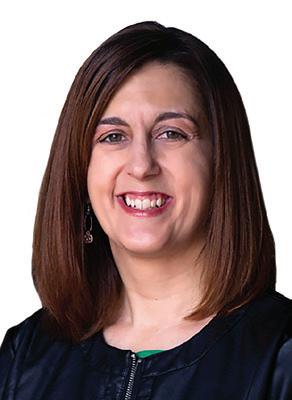



(CONTINUED FROM PG. 2)
“We are excited to get new data so we can compare it and see what the industry is going through now and, more importantly, where we are headed,” Topp said.

Look for announcements about the National Officiating Survey at NASO.org and Referee.com. Additionally, emails with details on how to take the survey will be sent out to NASO members. NASO will also be reaching out to
If your officials association is like most, you can’t afford to lose even a single active official. When you sense or are told that a member is fed up and ready to walk away from the avocation, it’s time to spring into action. Here are some tips for changing that member from disgruntled to gruntled.
1. Find out what’s wrong. An obvious first step, but a necessary one. The member’s complaint could run the gamut from the meetings are too long to he or she is not getting enough games. If you have the power to fix whatever is wrong without upsetting other apple carts, do it. Give the member your assurance that the concern will be addressed in the quickest time possible. If it’s something deeper — a disagreement with another member, a feeling of abandonment — get others involved.
2. Slow ’em down. Some officials think they should be rising up the ladder more quickly when that is not the case. As gently as you can, let them know they need just a bit more seasoning before moving up. “I know you think you’re ready for bigger games,
but I’d hate to see you get in a bad situation. That might hinder the rest of your career. It’s not easy to be patient, but I think you’d be better off in the long run.” You may get an argument. Don’t let things degenerate into a shouting match, which will only make matters worse.
3. Empathize. Officials have shared experiences. We’ve all been verbally abused by coaches and fans and we’ve been disrespected, underpaid and treated like serfs. That frustrated official on the brink of hanging it up might just need to vent to someone who
officiating groups large and small to help distribute the survey and encourage officials to take it.
Look for your chance to be heard and help provide data that will shape the industry for years to come.

understands what he or she is going through. Don’t hijack the conversation with, “Yeah, I know the feeling. There was this one game …” It’s their stage; don’t make them share it.




4. Talk up the avocation. While there are many frustrations in our industry, there are also plenty of joys. Ask the upset official to relate some of his or her favorite experiences. The time the crew got a flat tire and played Rock Paper Scissors to decide who had to put on the spare. Working the rivalry game before the sellout crowd. The first time he or she worked a televised game. Accentuate the positive.
Running a local officials association is demanding. You volunteer your time and effort to make it the best you can. But there’s no reason you have to do it alone. NASO Association Advantage exists to help you face any challenge and elevate your association in the process. Whatever challenges you have — training, insurance, legal issues, meeting help, bylaws and organization, membership issues and more — WE HAVE A SOLUTION TO MEET YOUR NEEDS.
Association Advantage Platinum is the premier resource for maximizing the performance of your group, providing leadership and administrative resources to help you elevate your organization with a focus on training,
assigning, legal issues and best practices specific to local officials association management.
The Titanium solution is ideal for officials associations that want to maximize their organization’s performance while fully protecting both their organization and individual members.





The most comprehensive solution for officials associations that want to fully protect both their organization and individual members, as well as provide full training and testing solutions with an emphasis on video. Association Advantage Diamond is the ultimate answer to every challenge your association faces.




To learn more, go to NASO.org/Advantage or call us at 262-632-5448









Is officiating among your favorite topics of discussion?

Do you enjoy studying rules and mechanics with your peers? Have you served as a sport chair, board member or mentor in your officials association? If you answered “yes” to any of those questions, maybe you should consider sharing your expertise with Referee magazine.
We’re looking for individuals who want to write for the premier magazine for sports officials. We seek those who want to contribute to the continuing education of their fellow officials, sharing rules and mechanics knowledge to help others grow. You don’t have to be Ernest Hemmingway to write for us. If you’re good





with the basics of constructing a sentence, we have editors who can help clean up your prose. If you’re interested in joining our team of freelance writers, send an email to submissions@ referee.com. Please include your name, contact information and any officiating and (although not a requirement) writing experience you have.



One NASO member got an inside look at how a major college conference football crew operates Oct. 29 after winning a drawing connected to the Sports Officiating Summit.

The contest, called the Pac-12 Officiating Behind the Scenes Experience, was a prize offered during Officiate Colorado Day preceding the Summit in July. In addition to the chance to spend the day with a Pac-12 crew, the prize included a one-night stay at the Boulder Marriott.
The winner, David Callahan, Parker, Colo., said, “I don’t think it could’ve been a better experience.” He joined referee Steve Strimling and his crew for their pregame activities, watched the game and rejoined the crew afterward. “They made me feel welcomed from the moment I joined the crew for pregame at 9:02 a.m. till departing after postgame discussion and film study around 12 midnight.”
Before the game, Callahan went along on a visit to the equipment room when the officials checked uniform
numbers and game balls, going to the production room for the meeting with the green hat (the sideline person who keeps track of media timeouts and other stoppages) and meeting with security to discuss procedures in the event of an emergency.
Callahan described the officials as “very professional but very relaxed.”
He said things he learned from the crew will be carried over to his high school crew. “I’m in the process of transitioning from umpire to referee so this
was neat to see how the crew worked together,” he said. In particular, he identified film and rules study. “We have more film than we could ever wish for. We just need to take the time to study film. There’s no excuse for not being an expert in rules.” Callahan was impressed that even a Pac-12 crew took time to review rules in their pregame.
Callahan, a 10-year football official, was equally complimentary of Officiate Colorado Day. “We need to continue to do that,” he said.

After the last game of your season, it’s time to put away all the gear, equipment and uniforms. It’s time to relax and not think about your sport until your first game next season, right?
Wrong! Your offseason is the perfect time to improve by reflecting, exercising, purchasing new equipment and going over your routines.
Many athletes are working year-round with aspirations of achieving the highest level of their sport. They’re using that time to become faster, stronger and smarter. For athletes, it’s often said that games are won and lost in the offseason. Just like athletes, good officials can be made in the offseason.








What can you do to better your officiating this offseason?
Look in the rearview mirror. Start your offseason with reflection. By looking back over a season, officials can pick up on tendencies and identify potential areas for improvement. If you kept a notebook during the season, review where you struggled and see if there are things you can refine for next season.
Having awareness of where you’ve struggled allows for focused efforts to improve in those areas.
Get moving. You can’t expect to stay in shape by only exercising during the season. It’s
a year-round process. Use the offseason to continue efforts at getting enough exercise. This will help not only with your physical appearance and those important first impressions, but you’ll also be in better shape to keep up with players and get into the best positions for observing the action.



Evaluate your condition
expect to get in shape a few days before the season, you can’t master the rules and mechanics of your sport(s) by picking up those books just a few days before the first game.
Becoming a year-round student of the game will help you stay sharp. Spend time in the offseason diving into your rulebooks and casebooks and keep up with trends to increase your ability to correctly manage a contest.

Gear gauge. Early in the offseason is the perfect time to assess your uniform and equipment needs. In fact, immediately after my final assignment, I like to create a list of what I need for the next year. Then I can monitor sports officiating vendors and suppliers for available items and potential sales. I can make those purchases before any potential runs on items that can happen just before the season.
and formulate a plan to develop good habits and improve your overall health. The offseason is a good time to make sure you’re staying prepared for the specific movements required in your sport. Neglect those and you’re likely to be really sore in the days after those first games. That soreness can be avoided with proper exercise in the offseason.
Move your mind, too. Remember to exercise your mind as well. Just like you can’t
Scheduling spotlight. Depending on how things are done in your area, you might be getting scheduled for games a year or more in advance — and those games might be assigned during the offseason period.
As such, it’s important to keep assigners up to date on your availability. Keep your blocks up to date to minimize turnbacks that could make you a lessdesirable official for assigners. Stay on top of any contracts and other details for the season ahead.




You can’t expect to stay in shape by only exercising during the season. It’s a year-round effort.
Offseason investment. Lastly, invest in yourself as an official. We are compensated for the services we provide. Reinvest some of those hard-earned wages in officials’ camps and clinics and become active in your local officials association. These are great ways to foster positive relationships with fellow officials and even enhance the strength of your existing crews and partners. Those offseason association meetings also provide you with rule changes, trends, and points of emphasis leading into a season. Take some time this offseason to stay engaged with officiating. It will pay off when the season arrives. Nick Spence, Franklin, Wis., officiates high school basketball, baseball and softball.
Besides the two or three officials on the floor, there are other people who will become involved when an official whistles a foul or violation. The scorer and timer are valuable members at the table who play a significant role in the game. The scorer must insert all team members’ names and numbers into the official scorebook exactly as they are presented to him or her. By rule, an administrative technical foul is charged to a team when it is discovered that there is an incorrect jersey number in the book, or if the five players on the floor to start the game are not the five team members who have been designated as starters. Tracking the scoring, individually and cumulatively, along with recording player and team fouls into the official
scorebook become a permanent record of the game. Any scoring discrepancy during the game will be resolved by referring to the official scorebook. The referee and scorer will work together to make any necessary corrections.

The timer’s ability to start or stop the clock at the moment of an official’s chop or whistle can mean the difference between a win or loss for either team. On a start-clock situation, the timer should have his or her eyes focused on the official’s chop instead of watching the ball. Only an official’s definite knowledge can change the time on the clock and that will occur only after the official and timer meet and discuss. Schools have an obligation to place qualified and responsible personnel at these positions. Most high schools hire members of their staff to work the table. In many cases, such individuals covet these positions and remain at the helm for years, becoming very good at their jobs while developing a long-term, friendly relationship with the officials. If you have met them in the past, be sure to greet them before the game with a hearty handshake and smile. Personally introduce them to a new partner or someone from your crew who may be working at that school for the first time. This personalized greeting is a great way to help floor officials and table personnel strengthen their bond and establish a good rapport before the game.
Scorers who take pride in their work will focus their eyes on you after a whistle is blown and refrain from penciling in the player number and foul until you have completed your presentation. Occasionally, we cross paths with the scorer who, immediately after the whistle is blown, begins recording in the book the number of the player










they believe committed the foul. They run the risk of recording the infraction incorrectly. It can be frustrating for the official who is about to report the actual number. A pleasant reminder to stay with you through your complete report helps you on the floor and will keep a clean, error-free scorebook. Your responsibility is to use clear and precise mechanics to the table to avoid any scoring errors by an appreciative scorer. Be sure to focus your eyes solely on the scorer when reporting.
Relax when you get to the table reporting area. Do not rush through your signals and keep your mechanics specific to the level of game you are working. When reporting a foul, for example, use an appropriate signal that clearly displays the player’s number for a period of time instead of a quick flash of the number. Treat the table personnel as you would a co-worker on your job or as a member of your officiating crew. Show them respect and work to foster a cohesive relationship.


What is it about certain umpires that makes them successful and what is it about other umpires that finds them struggling? The list of specific elements is endless. However, through the years, there are a number of personal traits that help move umpires to the top. By the same token, there are traits that keep umpires wallowing in the depths of lower-rated umpires.



As we prepare to embark on a new season, let’s take a look at some time-worn items, in

no particular order, that keep umpires who otherwise have good judgment from achieving what one would consider an acceptable level of success.
Blames Everyone Else —
Unsuccessful umpires blame everyone but themselves for low standing. How many times have you heard low-rated umpires blame the assigners, coaches, partners, politics and “good ol’ boys”? Truth be told, these umpires complain a lot about things they can’t control and do a very poor job handling things they can control, like getting to games on time, their appearance and game management.
Doesn’t Spend Much Time Trying to Improve — Unfortunately, there are those umpires whose attitude is: “Give me my games, give me my checks and thank you.” Umpiring is a constantly evolving avocation. Rules, mechanics and philosophies change over time. Unsuccessful umpires seem to think, “This is the way I have always done it.” They are out there pretty much doing their own thing and not keeping up with the changes.
Always Has an Excuse — Also known as a “Yes, but …” guy. There is not a situation known to man that this umpire can’t talk his way out of. Try to offer a suggestion and instead of a thank you, you will get all sorts of reasons (most of them wrong) why the umpire did a particular thing.
Generally a Negative Influence — Unsuccessful umpires are generally negative toward their partners and the association to which they belong. They love to criticize miscues of other umpires. An outstanding umpire once said, “If I describe a situation where the umpire erred, I’ll never mention the name. But, if it’s something positive or well

done, I make sure I do mention the name.” That’s pretty good advice.




—

This umpire loves to bait players and coaches. This umpire also refers to coaches and players as “rats” or the “enemy.” This umpire generally has little tolerance for listening to coaches or players. All this attitude does is to foster ill feelings.
Can’t B e Trusted by Partners — We’ve all either been a part of or witnessed games where the plate umpire makes a call and has the catcher, three coaches and another player in his face. While this is going on, his partner is out near second base chatting with the shortstop. There are countless examples of so-called experienced umpires doing totally crazy things out there, and then they wonder why they are working a schedule of only freshman and JV games.
Doesn’t Have the Courage to Enforce the Rules — Boil it all down and there are only two things coaches and managers want from umpires: Get the play or pitch right and keep the game under control. How many times have you seen a particular coach (often a very influential one) pacing back and forth in front of the dugout during the game? What does that tell you about the umpires? This just adds up to poor game management skills.
Doesn’t Hustle — What is your impression of an umpire who walks to his position on the bases after the pregame meeting at home plate, walks to the “B” position after a base on balls, or walks to his position in the outfield at the end of a half inning? How about the umpire who walks back to the plate after breaking up a meeting between the coach and pitcher? These umpires are often just a step or

All NASO members get an exclusive 10% discount as a benefit of NASO membership. Members are able to use the discount on Ump-Attire.com’s 850+ o ciating gear and apparel and qualify for free shipping o ers and free returns. Registered NASO members will be able to access the discount automatically without using a coupon code or having to call to place an order.




















two behind the play. It’s not a very good picture.
Wants to Be Everyone’s Friend — This umpire goes out of the way to talk with players and coaches. This umpire can often be seen talking with base coaches during the game. He also likes to talk with infielders during pitching changes. After the game, this umpire wants to hang around hoping to get favorable comments about his game. Or, he wants to tell the coaches what a marvelous experience it was to umpire their game.
Of course, there are many more examples of things umpires do to torpedo their career. It is a running joke among instructors at various umpire camps to identify an umpire who just doesn’t get it. They just refer to him as “that guy.” Don’t be “that guy.”
the line, they should expect the consequences.
For years, I helped teach our new umpires’ class for our softball association. Without fail, each year one of the first questions asked — and the most asked question — was, “When should I eject a coach?”
While every umpire has his or her own line in the sand, there are some tips I would give to help the umpires determine when to pull the proverbial trigger and toss the coach.
Umpires don’t eject coaches, coaches eject themselves. I always tried to instill in the new umpires that we aren’t the bad guys. We don’t go into games looking to eject coaches. Coaches typically know what they can and can’t say; when they cross
Ignore statements, answer questions, penalize stupidity. I have heard this expression used in multiple sports and it definitely applies to softball. When coaches make statements, try to ignore them. Going back at a coach who makes a statement only adds fuel to the fire. If the statement crosses a line (see the next paragraph), then take appropriate action. Otherwise, ignore it and move on. If a coach has a legitimate question, answer it. If a coach is asking a question, there is an expectation of a response. Ignoring a question can cause more issues as well. Again, it needs to be a legitimate question. Lastly, penalize stupidity. When a coach crosses the line, either verbally or through body language, penalize it. There needs to be a consequence for unsporting behavior. Another great piece of advice is, “That which we permit, we promote.” If you allow unsporting behavior without taking care of it, you are basically saying you are OK with it, which should never be the case. It only leads to more issues and it causes problems for the next crew who will have to deal with that coach.
The three (make that four) P rule. I was always taught if something was said by a coach that was personal, persistent or public, those were automatic ejections. A fourth “P” has entered the equation, and that is profane.
Normally when coaches have an issue with an umpire, that coach is taking it out on the profession, and not the individual umpire. However, when a coach starts a sentence with “You” and it doesn’t end with “are the best umpire we’ve had,” there is a problem. Now it is personal and attacking you as an individual.


The second “P” is persistent. If a coach makes a comment once (and it isn’t enough to draw a warning or automatic ejection), ignore it. However, if it continues, it needs to be dealt with. Never allow a coach to continue arguing something over and over again during a game. Once that play is over, it is just that, over. Don’t allow a coach to keep revisiting it.









The third “P” is public. There’s a big difference between a coach and you having a private conversation that no one else is privy to. A coach is going to get a little bit longer of a leash in those situations as long as what they say isn’t completely out of line. However, if a coach yells out to you on the bases while that coach is in the dugout, now that coach has made the comment public. Everyone in the park can now hear it. Now it needs to be addressed.




The final “P” is profane. If a coach says something that contains swear words, mentions gender, race, sexual orientation, etc., that is unacceptable and crosses the line. Deal with those situations immediately.


Keep your head in the game. If a coach says something and it causes you to lose focus, it needs to be addressed. You should never continue a game if something a coach said has now taken your focus away from the game. Take a couple of moments to use your tools, as described below, and get yourself back into the game.
Use your tools. As an umpire, we try to keep coaches in the game if possible, as long as they are cooperative. If they completely cross the line, then we remove them from the situation and we move on. However, remember you have both informal and formal warnings to use at your disposal
to quell a situation. We can always put up the stop sign or simply tell a coach a warning has been issued. If that coach decides to continue arguing, then up the penalty. Just remember, when you warn, don’t allow a coach multiple warnings. Otherwise, your threats are empty and coaches will walk all over you.

No regrets. Rarely will you hear an umpire say they regretted ejecting a coach. Generally, they regret not ejecting a coach. It is part of the game and it is imperative to move on and clear your head once you’ve taken the action to remove a coach.
Make the game better for you, your partners and the next crew by putting an end to unsporting behavior. You owe it to yourself and the game. Brad Tittrington is an associate editor for Referee. He umpires D-I softball and officiates women’s college and high school basketball, college and high school volleyball and high school football.
• Educate the players (and even spectators).
Here are some of the more common incorrect terms used, their meaning and proper phrasing:
Linesman – Proper term is assistant referee. This has some roots in the history of the sport. Once upon a time, “umpires” were appointed by each team (one each) to control the game, who could appeal disagreements to the referee. A restructuring of the Laws in 1891 moved the umpires to the touchline and renamed them linesmen. In 1996, in recognition of the growth of their responsibilities and the increased female participation in the sport, linesmen was changed to assistant referees. They are there to assist the referee.
Liner – When this term is used, it is typically pronounced with an accent from an area within the GMT time zone. Slang for linesman, the proper term is assistant referee.
In most areas of life, to be properly understood (and seen as one who is knowledgeable) one must “speak the language.” Soccer is no different. As referees, it is important to use correct terminology.
Using the correct terms will:
• Reduce confusion;
• Ensure the crew has a shared understanding of what has been said;
• Help convince assessors (mentors/coaches) that the crew has a good knowledge of the game;
Sideline – The longer of the boundary lines connecting the corner flags, the correct term is touchline. This marking was given its name because a player can touch the ball with the hands when it crosses the line.
Endline – The shorter of the boundary lines connecting the corner flags, upon which sits the goals, the Laws call it the goalline. This should be a very obvious term since the goals are on this line.


Byline – Slang for the goalline.






50 – A common American term for the halfway line. This is likely due to the center of an American football field being the “50 yardline.” With a soccer field being between 100 and 130 yards in length, the halfway line is rarely 50 yards from the goalline. This marking was named because it divides the field in half.
Midfield – Another (incorrect) name for the halfway line.
Centerline – Properly referred to as the halfway line.
The Six – With the goal area dimensions being six yards out from the goal posts, and six yards onto the field from the goalline, this nickname makes some sense (despite being incorrect). It can be entertaining to hear the term used on a 9v9 or 7v7 youth field, where the goal area is typically only four yards out from the goal posts and four yards onto the field from the goalline. It is called the goal area because it surrounds the goal.
The 18 – Commonly used to refer to the penalty area, given that its dimensions are 18 yards out from the goal posts, and 18 yards onto the field from the goalline. Like the “six,” it is a purely incorrect term on the small-sided youth fields where the penalty area is much smaller.

The Whistle – Again a term to describe being assigned the position of referee.
Six kick – A goal kick. With the goal kick properly taken from within the goal area, and that area often mislabeled the “six.” Since the kick can be taken anywhere within the goal area, it could be less than a “6 kick.”
Goalie – The goalkeeper.
Soccer – Many would argue even this is an improper term for football. Those same people would probably even blame the U.S. for the nomenclature. In fact, it was the English who coined the term as a shortened form of “association” as in “Association Football.” This was to distinguish the sport from what was the “Football Association,” later to become the Rugby Football Association.
Penalties (aka Penalty Shootout) – Kicks From the Penalty Mark (KFTPM). Now part of Law 10 (Determining the







Outcome of a Match), KFTPM is a recognized method to determine which side shall advance when a “winner” is required, but the score remains a draw. Penalty kicks are covered under Law 14 and are used as punishment for certain defensive misdeeds not to break a tie. In other words, to have a penalty kick, a foul must have been committed by the defense within the penalty area that would result in a direct free kick.
Offsides – Correctly worded in Law 11 as Offside. Offside means to be away from one’s team (offside), and since each player only plays for one team in each game, how can they be away from more than one team at the same time? Not offsides.



All soccer officials are considered professionals in their sport. Using the correct terminology is critical to demonstrate to others their complete knowledge of the Laws/rules. In addition, it is an opportunity to educate others on the terms. Every official should be cognizant of the words they are using and ensure they are used properly.












Marc Block, Marlton, N.J., is a USSF National Referee Emeritus, Instructor and Assessor. He was the state high school rules interpreter in New Jersey. Block is also a video referee communicator.


Play: A1 commits a traveling violation in the frontcourt, and substitute A6 enters the game for A1. The game clock shows 25 seconds. B1 completes the
ensuing throw-in to B2. B2 starts to dribble, when the officials realize the timer failed to start the game clock. The trail official had a backcourt count of three seconds when play was stopped. May the officials correct the game clock? May substitute A1 re-enter the game even though the clock did not start? NCAA: No courtside monitor exists. Ruling: When an obvious timing mistake has occurred because of the failure to start or stop the game clock properly, the mistake shall be corrected by the referee using definite information. In this case, since the official had a backcourt count of three, the clock shall be corrected to 22 seconds. A player who has been replaced by a substitute may re-enter the game at the next opportunity to substitute, provided the game clock has been properly started after the withdrawal or replacement. Although the game clock did not “properly start,” time did legally expire from the game clock after the referee corrected the timing mistake, so A1 should be allowed to re-enter (NFHS 3-3-4, 5-10, 5.10.2; NCAAM 3-6.1.j, 5-12, AR 126; NCAAW 3-6.1.j, 5-12, AR 130).
fielder, who was wearing a first baseman’s glove. I n NFHS, there is no restriction on fielders wearing a first baseman’s glove provided it does not exceed size limits. The play stands. In NCAA and pro, the glove must be removed. In pro the play stands. In NCAA, the offense has the choice of taking the result of the play or having the pitch replayed (NFHS 1-3-6 , 1.3.6 Situation C; NCAA 1-13c Pen 2; pro 3.07c).
Play: With R3 on third, F1 is in the windup position. With the ball in his glove and his other hand at his side, F1 takes the sign. He then reaches into his glove and pauses while he grasps the ball. Ruling: That is a legal move (NFHS 6-1-2; NCAA 9-1a1c; pro 5.07a1).
Correction: A caseplay in the 12/22 issue had an incorrect ruling for NFHS. The play involved a ball hit to the center
Play: Second and 10 from team B’s 37 yardline. A1’s legal forward pass is intercepted by B2 at his own three yardline. B2’s momentum takes him into his own end zone. An official blows an inadvertent whistle. Ruling: Team B will begin a new series at its own three yardline. If an inadvertent whistle is sounded while the ball is in player possession, the team in possession may choose the results of the play or a replay of the down. Team B will not want a replay because that would negate the interception. Because the ball became dead in team B’s possession in its own end zone and because B2’s catch was made between his own five yardline and the goalline, the momentum exception applies. The ball is returned to the spot of the catch (NFHS 4-2-3c, 8-5-2a Exc.; NCAA 4-1-2b-1, 8-5-1a Exc.).
Play: Third and 27 from team A’s 11 yardline. A1 is under center when he takes the snap and throws a backward pass to fullback A2. Immediately upon receiving the pass, A2 gets off a quick
kick. B3, who was blitzing on the play, takes two running steps and roughly knocks A2 to the ground. Ruling: B3 is guilty of roughing the kicker. A2 was, by definition, a kicker and is accorded protection from roughing. Even though the nature of the play was such that it was not obvious a kick would be attempted, B3 had plenty of time to determine it was a kick. The penalty is 15 yards from the previous spot and includes an automatic first down (NFHS 9-4-5; NCAA 9-116, AR 9-1-16 IV).
Play: With R1 on first base and no outs, B2 hits a bouncer to F6. The ball takes a bad bounce and lodges in F6’s uniform jersey. Ruling: In NFHS and USA Softball, the ball remains live and in play (NFHS 8-4-1g; USA Softball 8-4g). In NCAA, the ball remains live until the umpire judges the ball is no longer playable, at which time it is declared dead and the batter-runner and runners are awarded bases that would have been reached had the ball not become lodged (9.7.3, 12.12.6.4). In USSSA, the ball is dead and R1 and B1 are awarded one base (8-14d-1).
Play: Thirty minutes prior to the start of a game, it begins raining. As game time approaches, the infield dirt and outfield grass areas are wet. Who has the final decision on whether or not to start the game? Ruling: In NFHS, the home team coach decides whether the grounds and other conditions are suitable for play (4-1-1). In NCAA, both
coaches and/or the on-site administrator decide whether the field is playable, unless it is prior to the start of the second game of a doubleheader, in which case the plate umpire of the first game shall be the final judge as to whether the field is playable (5.3.1, 5.3.3). In USA Softball, the plate umpire has sole authority to rule on the fitness of the grounds (5-2). In USSSA, the umpires are the sole judges as to the fitness of the grounds, but a tournament director also has authority to suspend play if the weather or other conditions make play unsafe (4-1).



Play: A1 shoots on goal. B1, the goalkeeper, deliberately parries the ball to the ground with the hands. B1 dribbles the ball with the feet to the edge of the penalty area and then picks the ball up with the hands and punts it downfield. Ruling: Illegal. The goalkeeper played the ball with the hands during the initial save. The goalkeeper cannot play the ball with the hands a second time (NFHS 12-7-2; NCAA 12.3.2; IFAB 12.2).
Play: B1 is in team B’s penalty area when A2 crosses the ball toward A3 who is directly in front of B1. B1 makes a scissors kick to clear the ball from the penalty area. A3 moves back quickly to not be struck in the face with B1’s cleats. Ruling: The referee should stop play and award an indirect free kick for team A at the point of the scissors kick. B1 created a dangerous situation by lifting the leg near A3’s face. If the incident occurred less

In addition to the most comprehensive liability insurance coverage, a full subscription to Referee magazine and special discounts at hotels and uniform suppliers, NASO members receive the best possible individual price on most books, DVDs and other training products from the Referee Training Center.* Visit































than 10 yards from the goal, the wall may set up on the goalline between the goal posts (NFHS 12-6; NCAA 12.2.9.1; IFAB 12.2).
Play: A shot on goal is on the goalline between the goal posts. The assistant referee is on the goalline and does not raise the flag. The referee sounds the whistle and awards a goal. The assistant referee remains on the goalline. The referee states, “I saw it and it is a goal.” The referee has the ball taken to the center spot for a kickoff for the opponents. Ruling: The assistant referee is under the jurisdiction and supervision of the referee. Since the referee awarded the goal, the assistant referee must agree with the situation. The matter should be discussed in detail at halftime or after the
match (NFHS 5-3-2; NCAA 5.4.2; IFAB 5.2).





Play: S1 lands after an attack, and one foot is beyond the centerline, encroaching completely into team R’s court. S1 does not make contact with any team R player, but a team R blocker must step around S1’s encroaching foot. Ruling : S1 has committed a centerline fault. In NFHS, a player may encroach into the opponent’s court with a foot, feet or hands, only if some part of the foot/hand remains on or over the centerline. Once the player’s foot went beyond the centerline, a fault occurred (NFHS 9-5-7). In NCAA and USAV, a player is allowed to
have a foot or hand completely across the centerline, but the encroaching player cannot interfere with or create a safety hazard for any opposing player (NCAA 15.2.4.2; USAV 11.2.2).
Play: A team places two game balls that are red and white, and a third game ball that is blue and white on the scorer’s table. Ruling: That is not allowed. All balls shall be the same color, either solid white or a maximum combination of three colors, with each panel being a solid color (NFHS 3-2-1, 3.2.1; USAV 3.2; NCAA 3.2). NFHS allows for referees to authorize another ball if it is impossible to play with the same colored ball throughout, however every effort should be made to use the same color of ball.
The National Association of Sports Officials (NASO) is a nonprofit, educational association providing services and benefits for sports officials. It is run by officials, for officials. If you know a good candidate for membership, please send us his or her name and address. We will forward an invitation to join. For more information contact 262-632-5448 or www.naso.org/membership
Alabama High School Athletic Association
American Specialty Insurance & Risk Services Inc.



ArbiterSports



Arizona Interscholastic Association
Atlantic 10 Conference
Atlantic Coast Conference
Big Ten Conference
California Basketball Officials Association
Canadian Football League
Chief Zebra Enterprises
Cliff Keen Athletic
Colorado High School Activities Association
Demosphere
DVSport
Fox 40 International
Fox40Shop.com
Georgia Athletic Officials Association
Georgia High School Association
Get It Right Enterprises
Honig’s
IAABO Inc.
Illinois High School Association
Indiana High School Athletic Association
Iowa High School Athletic Association
Kentucky High School Athletic Association
Louisiana High School Athletic Association
Louisiana High School Officials Association
Major League Baseball
Massachusetts Interscholastic Athletic
Association
Michigan High School Athletic Association
Mid-American Conference
Minnesota State High School League
Minor League Baseball
Missouri State High School Activities Association
Missouri Valley Football Conference
National Association of Intercollegiate Athletics

National Basketball Association
National Collegiate Athletic Association
National Federation of State High School Associations
National Football League Foundation
National Football League - Officiating Department
National Football League Referees Association
National Hockey League
National Hockey League Officials Association
National Intercollegiate Soccer Officials Association

Neat Tucks
Nevada Interscholastic Activities Association
New Mexico Officials Association NIRSA
Ohio High School Athletic Association
Oregon Athletic Officials Association
Oregon School Activities Association
Pac-12 Conference
Professional Association of Volleyball Officials
Professional Referee Organization
Purchase Officials Supplies
QwikRef Inc.
Referee Enterprises Inc.
RefQuest RefReps
Southeastern Conference
Sun Belt Conference
Texas Association of Sports Officials
Texas High School Basketball Officials Association
Ultimate Fighting Championship
Ump-attire.com


United States Polo Association
United States Tennis Association


University Interscholastic League - Texas
USA Hockey USA Softball
US Lacrosse Vokkero by Adeunis
Washington Interscholastic Activities Association
Washington Officials Association
Wisconsin Interscholastic Athletic Association
Women’s Collegiate Basketball Officials Organization